
A World Without Email: Reimagining Work in an Age of Communication Overload
by
Cal Newport
Published 2 Mar 2021
I just argued that more than a millennium later, the introduction of another narrowly useful innovation, electronic messaging, led the modern office to embrace the hyperactive hive mind workflow. To justify this claim, let’s look closer at the types of underlying complex forces that plausibly might have driven us from the rational adoption of email to the less rational embrace of the hive mind approach to work. There are at least three of these hive mind drivers that likely played a role in this unintentional transformation of the office. Hive Mind Driver #1: The Hidden Costs of Asynchrony As argued earlier, email helped solve a practical problem generated by the growing size of offices: the need for efficient asynchronous communication—that is, a fast way to send messages back and forth without requiring the sender and receiver to be communicating at the same time.
…
To help us better understand this new workflow, I’ll give it a name and definition: The Hyperactive Hive Mind A workflow centered around ongoing conversation fueled by unstructured and unscheduled messages delivered through digital communication tools like email and instant messenger services. The hyperactive hive mind workflow has become ubiquitous in the knowledge sector. Whether you’re a computer programmer, marketing consultant, manager, newspaper editor, or professor, your day is now largely structured around tending your organization’s ongoing hive mind conversation. It’s this workflow that causes us to spend over a third of our working hours in our inbox, checking for new messages every six minutes.
…
The flip side of this claim is that for most positions, the hyperactive hive mind workflow, which derails attempts at clear cognition, makes you less productive. It’s obvious that constant attention switching is bad for Graham’s makers, but as I’ll now show, it can be just as bad for his managers. * * * — People in managerial roles are right to emphasize the importance of constant communication to their job—as it exists right now. If your team currently operates using the hyperactive hive mind workflow, then it’s crucial to monitor your communication channels closely. In the hive mind, managers are often at the center of a web of ad hoc connections—if they step back, the whole clunking contraption grinds to a halt.
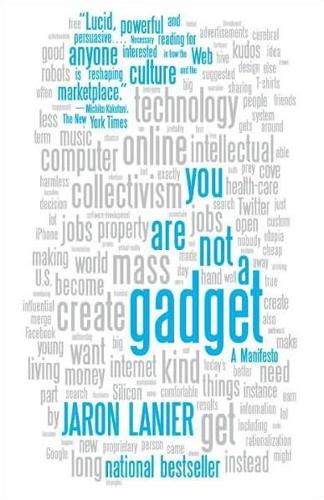
You Are Not a Gadget
by
Jaron Lanier
Published 12 Jan 2010
If money is flowing to advertising instead of musicians, journalists, and artists, then a society is more concerned with manipulation than truth or beauty. If content is worthless, then people will start to become empty-headed and contentless. The combination of hive mind and advertising has resulted in a new kind of social contract. The basic idea of this contract is that authors, journalists, musicians, and artists are encouraged to treat the fruits of their intellects and imaginations as fragments to be given without pay to the hive mind. Reciprocity takes the form of self-promotion. Culture is to become precisely nothing but advertising. It’s true that today the idea can work in some situations.
…
And yet there is some momentum toward doing just that. In fact, there is even a tendency to want to think of nature as if she were a hive mind, which she is not. For instance, nature could not maximize the meaning of genes without species. There’s a local system for each species within which creativity is tested. If all life existed in a undifferentiated global gloop, there would be little evolution, because the process of evolution would not be able to ask coherent, differentiated questions. A Wikified Science Conference The illusions of the hive mind haven’t thus far had as much influence in science as in music, but there’s a natural zone of blending of the Silicon Valley and scientific communities, so science hasn’t been entirely unaffected.
…
Technologies are extensions of ourselves, and, like the avatars in Jeremy’s lab, our identities can be shifted by the quirks of gadgets. It is impossible to work with information technology without also engaging in social engineering. One might ask, “If I am blogging, twittering, and wikiing a lot, how does that change who I am?” or “If the ‘hive mind’ is my audience, who am I?” We inventors of digital technologies are like stand-up comedians or neurosurgeons, in that our work resonates with deep philosophical questions; unfortunately, we’ve proven to be poor philosophers lately. When developers of digital technologies design a program that requires you to interact with a computer as if it were a person, they ask you to accept in some corner of your brain that you might also be conceived of as a program.
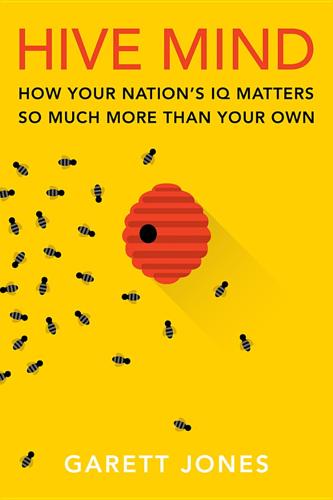
Hive Mind: How Your Nation’s IQ Matters So Much More Than Your Own
by
Garett Jones
Published 15 Feb 2015
Those millions of small cognitive contributions are what create each nation’s collective intelligence, each nation’s hive mind. Members of society all draw on that collective intelligence, they all get benefits from the hive mind that they never pay for, benefits that, by my lights at least, they don’t deserve. And it’s typically better to be the less-skilled honeybee in the highly productive hive than to be the highly skilled honeybee in the less-productive hive: your neighbors have an important influence on what you can accomplish. That the hive mind exists for every nation is almost obvious. The key question is whether a nation’s average IQ scores are an important driver of the hive mind. It Pays to Be Around the Cognitively Skilled In the next three chapters we’ll review the basics of modern IQ research: brain scans and job performance and nutrition and whether we really can compare average test scores across countries.
…
Tel: (650) 736-1782, Fax: (650) 736-1784 Printed in the United States of America on acid-free, archival-quality paper Library of Congress Cataloging-in-Publication Data Jones, Garett, author. Hive mind : how your nation’s IQ matters so much more than your own/Garett Jones. pages cm Includes bibliographical references and index. ISBN 978-0-8047-8596-9 (cloth : alk. paper) 1. Intelligence levels—Economic aspects. 2. Intelligence levels—Political aspects. I. Title. BF431.J596 2015 153.9—dc23 2015021620 ISBN 978-0-8047-9705-4 (electronic) Designed by Bruce Lundquist Typeset at Stanford University Press in 11.75/16 Baskerville HIVE MIND How Your Nation’s IQ Matters So Much More Than Your Own Garett Jones STANFORD ECONOMICS AND FINANCE An Imprint of Stanford University Press Stanford, California “The area which I am about to enter is one that excites a great deal of emotional feeling; nevertheless it is worth examining.”
…
In the rich countries, IQ scores have consistently risen over the twentieth century, a phenomenon known as the Flynn Effect, after the philosopher—the philosopher, mind you—who discovered it. We’ll talk about Flynn’s world-shaking research in Chapter 3, but keep the Flynn Effect in mind when people tell you that IQ can’t be changed. Collective Intelligence: Each Nation as Hive Mind Animal researchers, computer scientists, and occasionally social scientists sometimes use the metaphor of “collective intelligence” or a “hive mind” to explain group actions. Why do animal herds run together to avoid predators, dodging this way and that? How do honeybees and ants share information and collaborate to build vast structures and complex economies that no one insect could ever build alone?
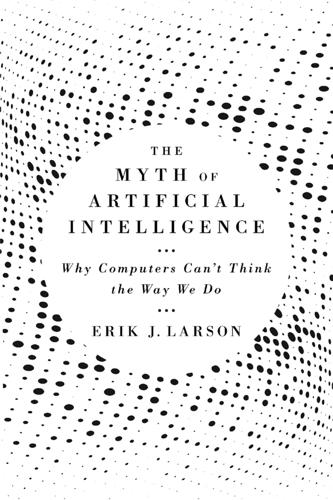
The Myth of Artificial Intelligence: Why Computers Can't Think the Way We Do
by
Erik J. Larson
Published 5 Apr 2021
Shirky’s precursor book, Here Comes Everybody, bustled with anecdotes about ordinary people helping the police capture crooks by using mobile technology.5 We can, of course, still pitch in like this with smart phones, but the Venn diagram of everyday usage no longer points to a future of realized human potential. In fact, it’s clear that the intellectual revolution prophesied in the mid-2000s never happened. (The “hive mind” didn’t even give us Wikipedia—most of the real writing is done by singular experts, with others performing more mundane editing tasks.) Shirky’s and others’ optimism about human growth transmogrified rather quickly into a worldview that sees humans as cogs in a giant machine. Eventually, the machine itself—the network, the system—becomes the focus. Predictably, hive minds ended up promoting a new skepticism about human intelligence. The idea now feeds popular mythology about the ascendancy of machines.
…
The ploy is, ironically, conservative; when smartphones are seen as evolving into superintelligence, then radical invention becomes unnecessary. We keep in place designs and ideas that benefit the status quo, all the while talking of unbridled “progress.” Human intelligence becomes collective, like a hive of bees, or worse, the hive mind of Star Trek’s Borg Collective, always organized by some invisible someone behind the scenes. Basically, in this mythology the human mind becomes an outdated version of coming machines. But as we’ve seen, we have no scientific reason to believe any of this, so we shouldn’t play mythological games with real life.
…
Yochai Benkler, Harvard University professor of Entrepreneurial Legal Studies, proclaimed in his widely read The Wealth of Networks: How Social Production Transforms Markets and Freedom in 2006 that a new era was upon us, a kind of revolution where large numbers of networked people would take on collaborative projects online, all for the public good, without requirements like paychecks.3 Wikipedia seemed to buttress his point, a case of collaborative production without expectation of financial recompense. Wired editor Kevin Kelly (and others) later called Benkler’s paean to online collaboration a hive mind, a nod to the social intelligence of bees, without a whisper of irony or derision. Benkler himself prefaced his academically serious rallying cry to the Web 2.0 world with a quote from John Stuart Mill: “Human nature is not a machine to be built after a model, and set to do exactly the work prescribed for it, but a tree, which requires to grow and develop itself on all sides, according to the tendency of the inward forces which make it a living thing.”4 It’s an excellent quote.

The Future Is Faster Than You Think: How Converging Technologies Are Transforming Business, Industries, and Our Lives
by
Peter H. Diamandis
and
Steven Kotler
Published 28 Jan 2020
L., 228 Anikeeva, Polina, 254 Annals of Internal Medicine, 159 anti-Semitism, 238, 239 Apeel Sciences, 203–4 Apollo program, 73 Appallicious, 235 Apple, 29, 35, 52, 100, 127, 157 Apple Watch, 41–42 aquaculture, 225 arthritis, 176 artificial intelligence (AI), 8, 10, 33–37, 85 AI machine built by, 36 and availability of capital, 75 BCIs and, 141–42 big data and, 33–34 convergence of VR and, 148–50 crowdsurance and, 186–87 customer service and, 102–3 drug development and, 165–67 employment and, 69, 229 entertainment content and, 130, 131–32 existential risks and, 233 finance industry and, 194–96 healthcare and, 36, 158, 161–63 human collaboration with, 47, 130, 162, 229 investing and, 195 real estate industry and, 197–98 saved time and, 72 service economy and, 34–35 shopping and, 100–106 Singularity in, 76 smart objects and, 60 workforce retraining and, 230 ASIMO (humanoid robot), 45 Atlantic, 89–90, 97, 98 Atlas (robot), 46 augmented reality (AR), 52, 86, 118, 119–20 contact lenses and, 139, 140 entertainment content and, 139–42 Autodesk, 103 automatic teller machines (ATMs), 228 automobiles, see cars autonomous cars, 12–16, 26, 221 data gathering by, 14 insurance and, 184–85 prime real estate redefined by, 199 ridesharing and, 14–16, 19 saved time and, 15 sensors and, 43 Uber and, 4 AVA (Autodesk Virtual Assistant), 103 avatars, 24–26 Babbage, Charles, 88 Babylonians, insurance invented by, 183 Baidu, 121–22 Bailenson, Jeremy, 52, 148 VR demonstration by, 49–50 balloons, as network connections, 40 Bangladesh, 192 banking, see finance industry Barnard, Matt, 205 batteries, 10–11, 218–20, 222 BBC, 246 Bell, Alexander Graham, 38 Benjamin, Simon, 30 Ben-Joseph, Eran, 16 Best Buy, 107 Beta Technologies, 154 Better Angels of Our Nature, The (Pinker), 262 Betterment, 195 Beyond Verbal, 102–3 Bezos, Jeff, 4, 176 space colonization and, 250–51, 253 big data, 85 advertising and, 118 AI and, 33–34 Binging with Babish (YouTube program), 128 bin Salman, Mohammed, 77 BioCarbon Engineering, 224, 227 biodiversity crisis, 48, 207, 212, 223–27 Bionaut Labs, 162 biotechnology, 8, 65–68, 75 3–D printing and, 54–55 Bitcoin, 31, 56–57 bKash, 192 Blockbuster, 126 blockchain, 56–61, 75, 193, 194 as bridge between virtual and physical world, 59–60 content creation and, 129 contracts and, 58 crowdsurance and, 187 definition of, 57 ICOs and, 75–76 IDs and, 58 international money transfers and, 58 land ownership and, 58 third party eliminated by, 57 blood, young, rejuvenating effects of, 90, 178–79 Blue Moon Lunar Lander, 251 Blue Origin, 251 BMW, 219, 222, 229 Body Labs, 114 Boeing, 48 BOLD (Diamandis and Kotler), xi, 7, 16, 31, 53, 235 Bold Capital Partners (BCP), xii, 266 Bombfell, 114 Boomerang Nebula, 27 Boring Company, 18–19 Boston Dynamics, 46 Bostrom, Nick, 230–31 Boy in the Plastic Bubble, The (TV movie), 6 brain: global and exponential environment as challenge to, 11–12, 22–24 pleasure chemistry of, 246–49 and thinking about the future, 21–22 brain-computer interfaces (BCIs), 255–57 AI and, 141–42 convergence and, 255 EEG-based, 256 brain implants, 81–82 BrainNet, 141 brain-to-brain communication, 256–57 Brand, Stewart, 232 Branson, Richard, 17 Brazil, 217 Breakthrough Energy Ventures, 220 Brooks, Avery, 7 Bubble Boy disease (severe combined immunodeficiency), 65, 66 Buck Institute for Research on Aging, 172–73 Burkina Faso, 160 business, convergence and, 23, 181–200 new models for, 83–87, 111–13 see also specific businesses Business Insider, 97 BusinessWeek, 42, 248 Byron, Lady, 87 Byron, Lord, 87 Cabela’s, 112 Caenorhabditis elegans (roundworm), 172–73 Calico, 89–90, 173–74 California, renewable energy projects in, 218–19 California, University of: at Berkeley, 131 at San Diego, 239 Cameron, Geoffrey, 237–38 cancer, 89, 90, 162, 164–65 rapamycin and, 175 regenerative medicines and, 177 capital, availability of, 73–77 Carbeck, Jeff, 62 carbon dioxide (CO2) emissions, 215–16 see also greenhouse gasses Carbon Disclosure Project, 217 Carbon Majors Database, 215 cardiac disease, 89 car makers, impact of ridesharing on, 15–16 Carnegie Mellon University, 62–63, 122 CAR-NK therapy, 164–65 cars: age of, 12–13 electric, 10, 16–17, 221–23 flying, see flying cars self-driving, see autonomous cars cars, ownership of: cost of, 5 ridesharing vs., 14–15, 26 CAR-T (chimeric antigen receptor T-cell) therapy, 164 cash, disappearance of, 195–96 Celgene, 163, 164 Cell, 178 cells, immunological, 164 cellular medicine, 163–65 cellular senescence, 171 Celularity, 90–91, 164 change, acceleration of, 69–91 convergence and, see convergence exponential technologies and, see exponential technologies ChargePoint, 223 chatbots, 33, 36, 37 Chen, Yan, 71 Chile, 217 China, 192 electric cars in, 221 renewable energy projects in, 216 unbanked population of, 194–95 Xiaoice chatbot in, 33, 36, 37 Choose Your Own Adventure (film), 138 Christensen, Clayton, 87 chromosomes, 170 Chung, Anshe, 248 Church, George, 159 cities: floating, 199–200 innovation and, 82–83, 244 migration to, 243–45 productivity and, 244 smart, 235, 245 sustainability of, 244–45 Clean Air Task Force, 218 Climate Central, 241 climate change, 44, 48, 199–200, 207, 212–13, 215–18, 223 greenhouse gases and, 206, 207, 215–16, 221, 226 migration and, 211, 241–42 Netherlands and, 232 Clinton, Bill, 213 closed-loop economies, 85 clothing, 3–D printed, 109 Cluep, 137 coal, 216–17 Coca-Cola, 213–14 coffee houses, rise of, 82 cognitive function, brain implants and, 81–82 cognitive psychology, 136 collaboration, 227, 230, 240 human/AI, 47, 130, 162, 229 see also hive-mind collaborations collective consciousness, see hive-mind collaboration Collins, Francis, 169, 172–73 Collins, Marc, 200 communication, brain-to-brain, 256–57 communications technologies: and economic paradigm shifts, 98 in rise and fall of Sears, 98 computer-aided design, 11 computers, computing: affective, 136–38 demonetization and, 78 emotionally intelligent, 103 3–D printing and, 54 computer simulations, 11, 17–18 Congress, US, mail delivery and, 96–97 connectivity, see networks consciousness, collective, see hive-mind collaboration construction industry, 55 contact lenses, AR and, 139, 140 content, entertainment: AI and, 130, 131–32 AR and, 139–42 brain-computer interfaces and, 141–42 deepfakes and, 131–32 democratization of, 131–32 immersive, 132–35 new forms of, 130–38 new venues for, 138–42 sensory input in, 134–35 user-generated, 127–30 contracts, blockchain and, 58 convergence, 8–9, 68 affective computing and, 136–38 BCIs and, 255 business and, 23, 181–200 disruptive innovation and, 9 environmental threats and, 226–27 existential risks and, 235–36 finance industry and, 189–96 flying cars and, 9–12 food industry and, 201–8 healthcare and, 68, 89, 154–55 Hyperloop and, 17–18 insurance industry and, 183–89 longevity and, 169, 173, 179 real estate industry and, 196–200 renewable energy and, 217–18 robotics and, 48 secondary forces unleashed by, 22–24, 69–70; see also capital, availability of; demonetization; genius, nurturing of; longevity; networks; time, saving of of technologies and markets, 127 3–D printing and, 54–55 transportation revolution and, 21 of VR and AI, 148–50 Cook, Tim, 140, 155 Cooking with Dog (YouTube program), 128 Cooper, Al, 249 coral reefs, 223–25 Cortana, 132 Costa Rica, renewable energy in, 217 CRISPR, 67, 68, 154, 160 crowd economy, 84 crowdfunding, 73–75, 84 crowdlending, 194–95 crowdsurance, 183, 185–87 cryptocurrencies, 31, 56–57, 59, 190 ICOs and, 75–76 customer-designed products, 3–D printing and, 110–11 customer service, AI and, 102–3 cutin, 203–4 Daimler Financial Services, 103, 221 dairy products, animal-free, 208 Dakota Pipeline, 190 DARPA (Defense Advanced Research Projects Agency), 256 Grand Challenge of, 13 Robotics Challenge of, 45–46 DART project, 233 data mining, see big data Daugherty, Paul, 229 David Rubenstein Show, The, 77 decentralized autonomous organizations, 85–86 deception, exponential technologies and, 31, 32, 33, 39, 215 Deep Blue computer, 28, 35–36 deep brain stimulators, 253–55 deepfake technology, 122–23, 131–32 DeepMind, 167 Defense Department, US, 36 deforestation, 48, 206, 207, 223, 224, 226 de Grey, Aubrey, 173 dematerialization, 31, 32, 200 democratization, xi, 31, 32, 108 of content creation, 128, 131–32 of healthcare, 162 real estate industry and, 200 demonetization, xi, 31–32, 15, 77–79 autonomous-car ridesharing and, 15 real estate industry and, 200 Denmark, 196 Department for International Development (UK), 191 “Destination 2028,” 112, 115 diabetes, 171, 175 diagnostics, personal, 156–58 Diamond Age, The (Stephenson), 149 digital assistants, see AI assistants digital currency, see cryptocurrencies digital mimicry, 121–22 see also deepfake technology digital technology, 31 and availability of capital, 73–77 Digital Trends, 122 digital world, boundaries between physical world and, 118–20 disaster relief, drones and, 48 discount pricing, Sears as pioneer of, 96, 98 discrimination, VR in combatting of, 52 disease, 41, 213 early detection of, 158, 159 disruption: exponential technologies and, 31, 32, 33, 215 innovation as, 9 distributed autonomous organizations (DAOs), 103 distributed electric propulsion (DEP), 10 DNA, 65, 66–67 Domino’s Robotic Unit (DRU), 106 dopamine, 246–47 double-spending problem, 56, 57 Dracula myth, 178 Dragon TV, 33 Dreamscape, 135 Drexler, K.
…
In Part Three, we move to the bigger picture, looking at a series of environmental, economic, and existential risks that threaten the progress we’re about to make. Next, we’ll expand our view from the decade ahead to the full century, focusing on five great migrations—economic relocations, climate-change upheavals, virtual worlds explorations, outer space colonization, and hive-mind collaborations—that will play now-you-see-it-now-you-don’t with, well, just about everything. But before we do all that, as Steve Jobs liked to say: Wait, wait… There’s one more thing. Avatars It’s 2028 and you’re having breakfast at home in Cleveland, Ohio. You stand up, kiss the kids goodbye, and head out the door.
…
By using electroencephalograms (EEGs) to “read” brain signals and transcranial magnetic stimulation (TMS) to “write” brain signals, participants were linked together to play a modified game of Tetris. They communicated and collaborated only through EEG, TMS, and a set of blinking lightbulbs, marking the birth of a new kind of “hive-mind gaming” and a frontier we’re only beginning to explore. We’re also seeing BCI venture out of gaming and into traditional cinema. In May of 2018, English artist and director Richard Ramchurn released a twenty-seven-minute short film entitled The Moment. Custom-built to be watched while wearing a relatively cheap ($100) EEG headset, the contents of the film—the scenes, music, and animation—change every time you watch it, based entirely on what’s going on in your head.
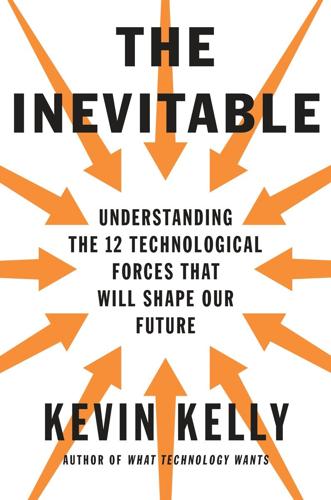
The Inevitable: Understanding the 12 Technological Forces That Will Shape Our Future
by
Kevin Kelly
Published 6 Jun 2016
I would guess that in 50 years a significant portion of Wikipedia articles will have controlled edits, peer review, verification locks, authentication certificates, and so on. That’s all good for us readers. Each of these steps is a small amount of top-down smartness to offset the dumbness of a massively bottom-up system. Yet if the hive mind is so dumb, why bother with it at all? Because as dumb as it is, it is smart enough for a lot of work. In two ways: First, the bottom-up hive mind will always take us much further than we imagine. Wikipedia, though not ideal, is far, far better than anyone believed it could be. It keeps surprising us in this regard. Netflix’s personal recommendations derived from what millions of other people watch succeeded beyond what most experts expected.
…
The enthusiasm for making things, for interacting more deeply than just choosing options, is the great force not reckoned—not seen—decades ago, even though it was already going on. This apparently primeval impulse for participation has upended the economy and is steadily turning the sphere of social networking—smart mobs, hive minds, and collaborative action—into the main event. When a company opens part of its databases and functionality to users and other startups via a public API, or application programming interface, as Amazon, Google, eBay, Facebook, and most large platforms have, it is encouraging the participation of its users at new levels.
…
In the short list below I include only those kinds of minds that we might consider superior to us; I’ve omitted the thousands of species of mild machine smartness—like the brains in a calculator—that will cognify the bulk of the internet of things. Some possible new minds: A mind like a human mind, just faster in answering (the easiest AI mind to imagine). A very slow mind, composed primarily of vast storage and memory. A global supermind composed of millions of individual dumb minds in concert. A hive mind made of many very smart minds, but unaware it/they are a hive. A borg supermind composed of many smart minds that are very aware they form a unity. A mind trained and dedicated to enhancing your personal mind, but useless to anyone else. A mind capable of imagining a greater mind, but incapable of making it.
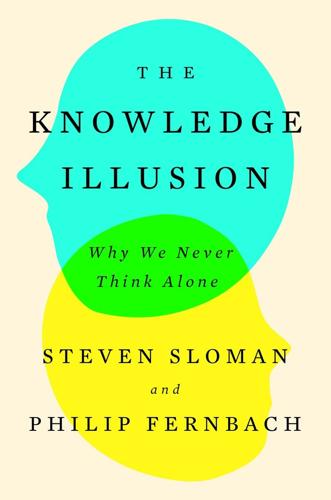
The Knowledge Illusion
by
Steven Sloman
Published 10 Feb 2017
To function, individuals rely not only on knowledge stored within our skulls but also on knowledge stored elsewhere: in our bodies, in the environment, and especially in other people. When you put it all together, human thought is incredibly impressive. But it is a product of a community, not of any individual alone. The Castle Bravo nuclear testing program is an extreme example of the hive mind. It was a complex undertaking requiring the collaboration of about ten thousand people who worked directly on the project and countless others who were indirectly involved but absolutely necessary, like politicians who raised funds and contractors who built barracks and laboratories. There were hundreds of scientists responsible for different components of the bomb, dozens of people responsible for understanding the weather, and medical teams responsible for studying the ill effects of handling radioactive elements.
…
Even if the carpenter knows nothing about plumbing, the bathroom has to be built to allow water pipes in and sewage pipes out. Similarly, our knowledge of things has to be structured so that the knowledge we expect others to fill in has an appropriate place to go. The Benefits and Perils of the Hive Mind In the preface to Saint Joan, his play about Joan of Arc, the teenager whose visions of saints and archangels stirred soldiers into battle early in the fifteenth century, George Bernard Shaw makes a surprisingly compelling argument that following Joan of Arc’s mystical visions was at least as rational as following a modern-day general into today’s battlefield full of highly technological and incomprehensible weapons of war.
…
If our team just won a big game or our candidate just won an election, then we feel like we knew it all along and others should have expected that outcome too. The curse of knowledge is that we tend to think what is in our heads is in the heads of others. In the knowledge illusion, we tend to think what is in others’ heads is in our heads. In both cases, we fail to discern who knows what. Because we live inside a hive mind, relying heavily on others and the environment to store our knowledge, most of what is in our heads is quite superficial. We can get away with that superficiality most of the time because other people don’t expect us to know more; after all, their knowledge is superficial too. We get by because a division of cognitive labor exists that divides responsibility for different aspects of knowledge across a community.
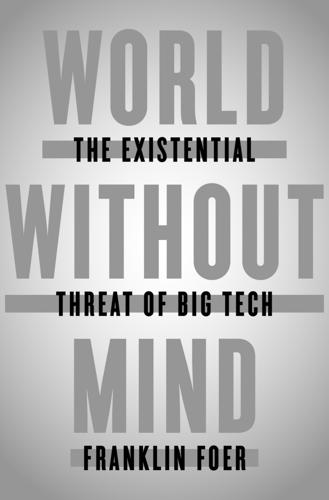
World Without Mind: The Existential Threat of Big Tech
by
Franklin Foer
Published 31 Aug 2017
In culture, the peril of the network is conformism—where a competitive marketplace of ideas ceases to be so competitive, where the emphasis shifts to consensus. Kevin Kelly, in his enthusiasm, unwittingly conveyed the darker implications of his vision. He extolled the “hive mind”—which is what happens when we get past our fetish for the author and give in to crowdsourcing and wikis and the hordelike tendencies of social media, when we surrender ourselves to the wise crowd. The hive mind was meant to describe a thing of beauty, humanity working in gorgeous concert. But really, who would want to live in a hive? We know from history that this sort of consensus is a plastic beauty, a stifling sameness.
…
Our era is defined by polarization, warring ideological gangs that yield no ground. Division, however, isn’t the root cause of our unworkable system. There are many causes, but a primary problem is conformism. Facebook has created two hive minds—the hive always has a queen bee—each residing in an ecosystem that nurtures head-nodding agreement and penalizes dissenting views. A hive mind is an intellectually incapacitated one, with diminishing ability to sort fact from fiction, with a bias toward evidence that confirms the party line. Facebook has managed to achieve consensus, but not quite as it promised. Instead of drawing the world together, the power of its network has helped tear it apart.
…
Before the arrival of the new technologies, information, like the isolated scholar, was atomized. But now, information can be sorted and processed by a much larger community—that could correct mistakes, add insights, and revise conclusions. Technology enabled what H. G. Wells once called the World Brain, or what Wired editor Kevin Kelly called the hive mind. The assumption that undergirds this strain of technological thinking is that humans aren’t simply self-interested economic creatures. Linus Torvalds, the engineer who created Linux, argued, “Money is not the greatest of motivators. It’s been well established that folks do their best work when they are driven by a passion.”

Program Or Be Programmed: Ten Commands for a Digital Age
by
Douglas Rushkoff
Published 1 Nov 2010
This is uncomfortable for many, but the refusal to adopt a new style of engagement dooms us to a behavior and psychology that is increasingly vulnerable to the biases and agendas of our networks—many of which we are utterly unaware we programmed into them in the first place. Resistance is futile, but so is the abandonment of personal experience scaled to the individual human organism. We are not just a hive mind operating on a plane entirely divorced from individual experience. There is a place for humanity—for you and me—in the new cybernetic order. The good news is we have undergone such profound shifts before. The bad news is that each time, we have failed to exploit them effectively. In the long run, each media revolution offers people an entirely new perspective through which to relate to their world.
…
In the best light, this activity breaks through sacrosanct boundaries, challenging monopolies on culture held by institutions from the church to Walt Disney. After all, if it’s out there, it’s everyone’s. But what, if anything, is refused to the churn? Does committing a piece of work to the digital format mean turning it over to the hive mind to do with as it pleases? What does this mean for the work we have created? Do we have any authority over it, or the context in which it is used? We applaud the teenager who mashes up a cigarette commercial to expose the duplicity of a tobacco company. But what about when a racist organization mashes up some video of your last speech to make a false point about white supremacy?
…
Following the logic of this side of the net wars, everything anybody does must be posted online, for free, with comments on. Denying the free distribution of everything prevents the hive from having a crack at it, improving it, taking it apart and putting it back together. If you don’t render your work unto the hive mind, then you are seen to be denying society its right to work with and repurpose your creations. Just as smart phone purchasers want the right to tinker with the software on their devices, media consumers want the right to remix and re-release the content they view. Charging money for access or, worse, asking people not to give away or change your work is attacked as selfish disregard for the foundations of open networks and open society.
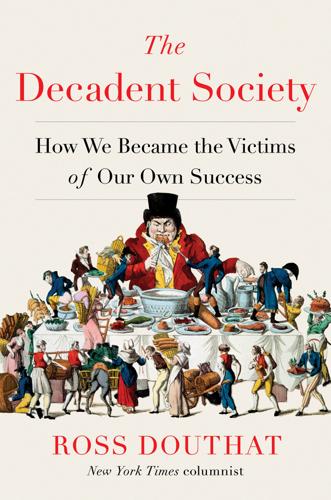
The Decadent Society: How We Became the Victims of Our Own Success
by
Ross Douthat
Published 25 Feb 2020
On the Internet, unless you’re a true specialist, anyone who sets out to research the art of the fifteenth century or the music of Mozart or the antiquity of China will start in the same place, find the same deposit of information, encounter the same hive mind—a hive mind that is larger than the team that wrote the 1910 Encyclopædia Britannica but hardly immune to bias and groupthink, and skewed in its own strange ways toward the obsessions of the male, the tech oriented, and the Very Online. And a hive mind that, unlike the authors of the old Britannica and its competitors, can’t produce a single perfect sentence, a single memorable turn of phrase, save by accident in the back matter of some obscure entry that the teams of homogenizing editors might forget to touch.
…
“dangerous” categorization of, 141–42 see also pink police state Civil Rights Act (1964), 77 Civil War, US, likelihood of second, 133–34 class war, 173 climate change, 35, 202, 219, 221 catastrophic, 192, 195–97, 200 as consequence of dynamism, 179–80 disproportionate effects in global south of, 174–75, 202 mass migration and, 196–97 sustainable decadence and, 173–75 Clinton, Bill, 71, 77 Closing of the American Mind, The (Bloom), 97 Coates, Ta-Nehisi, 97 Cold War, 181 colleges and universities: civil liberties and, 141–43 conflicting missions of, 142 cultural repetition in, 97–98 sex bureaucracy in, 142–43 Communism, fall of, 103, 112, 114, 162–63 Communist Manifesto, The (Marx and Engels), 219 Communist Party, Chinese, 139 communitarianism, religious, 216 communities, virtuous, 215–17 Confessions of a Born-Again Pagan (Kronman), 224 Congo, Civil War in, 199 Congress, US: abdication of policy making by, 75–76, 194 polarization of, 194 conservatives, conservatism, 206 apocalyptic thinking among, 98 birthrate and, 53 in congressional abdication of policy making, 75–76 cultural repetition and, 97–98 decadence of, 203 nostalgia of, 100 sclerosis as viewed by, 72–76 see also right Constitution, US, as not designed to cope with ideological polarization, 78 convergence, of Western and non-Western decadence, 165–69, 173 Coppola, Francis Ford, 95 Corbyn, Jeremy, 114 corporations, dearth of investment and innovation by, 26 Cortés, Hernán, 189, 190 cosmopolitanism, 206, 217, 218 counterculture, 2 Counter-Reformation, 222, 230 Cowen, Tyler, 12, 28, 33–34, 35, 45, 46 Crash of 1929, 194 credentialism, 35 crime rates, decrease in, 150 Crouchback, Guy (char.), 183 Crowley, Aleister, 231 Cuarón, Alfonso, 65–66 Culture of Narcissism, The (Lasch), 96 culture, repetition in, see repetition culture wars, 97–98 cummings, e. e., vii Days of Rage protests, 129 deBoer, Freddie, 145–46, 149 debt, national, 70 ratio of GDP to, 192, 193 debt, overhang of, 34 decadence, 10 aesthetic definition of, 6–7 author’s definition of, 8–10, 239 Barzun on, 8, 12, 69, 91, 96, 100, 113, 135, 172, 184 birthrate and, see birthrates, decline in convergence of, in West and non-Western world, 165–69, 173 economic, see stagnation, economic as ending in dystopia, 184–85 end of, see decadence, deaths of EU as case study in, 82–86 hope for renewal as possible under, 179 institutions and, 69 Islamic world and, 159 moral definition of, 7 and need for a Messiah, 237–39 opposition to, political and social risks of, 178–80, 182–83 policy limits imposed by, 87 political sclerosis as, see sclerosis, political possible inevitability of, 234–36, 240 repetition as, see repetition seductiveness of, 217 use of term, 6–7 decadence, deaths of, 115, 187–240 catastrophe as, see catastrophe divine intervention scenario for, 239–40 neo-medieval scenario for, 200–203 renaissance scenario for, see renaissance space travel scenario for, 236, 239–40 decadence, sustainable, 115, 117–85, 240 arguments in favor of, 177–85 authoritarian systems in, 137–54; see also pink police state benefits of, 180–82 climate change and, 173–75 comfortable numbness in, 119–36 as contradiction in terms, 179 dystopian elements of, 184–85 management of, 181–83 meritocracy in, 169–73 politics and, 129–36 pornography and, 119–22 prescription drugs and, 126–28 virtual entertainments and, 122–26, 128–29 Deep Throat (film), 119 Defense Department, US, UFO videos released by, 233–34 deficit, investment constrained by, 34 deficit spending, 192–93 DeLong, Brad, 192 Democracy in Europe Movement 2025 (DiEM25), 219 democratic norms, 68–69, 78, 163 Democrats, Democratic Party: 1960s–70s reform in, 77 Senate controlled by, 67 demographic change, weight of, 34, 56–58 religious renewal and, 222–23 stagnation and, 57 see also aging populations Deneen, Patrick, 215–17 Deng Xiaoping, 140 depression, among teenagers, 123 deregulation, 24 despair, declining birthrate and, 61–62 developed world: aging populations of, 34, 56–58, 60, 66 limits to growth in, 32–36 shrinking family size in, 59–60 developing world, emergence of decadence in, 165–69, 173 Didion, Joan, 110, 131 Discovery (space shuttle), 37 disease, spread of, 190–91 Disneyland, 37 dissent, marginalization of, 151–52 divine intervention, as scenario for end of decadence, 239–40 divorce rate, 51, 55 Dobson, James, 119, 120 “Dope Show, The” (music video), 140–41 dot-com bubble, 24 Douthat family, 59–60 Dreamland (Quinones), 127 drone warfare, 150 drugs, prescription: antidepressant, 126 increased use of, 126 opioid epidemic and, 126–27 social upheaval repressed by, 126–27 Dune (Herbert), 229 Dunham, Lena, 95 Durant, Will, 189, 202 Dworkin, Andrea, 120 Dylan, Bob, 110 dynamism, 25, 46, 58, 110 dangers of, 179–80 immigration and, 62, 64 nostalgia for, 206 Dyson, Freeman, 6 dystopias, 3, 47–50, 65–66, 94, 95, 122, 128, 144, 155–56, 179 economic catastrophe, 191–95, 200 economic stagnation, see stagnation, economic economy, declining birthrate and, 56–58 economy, US, deceleration of, 24 education: constraints on, 34–35 productivity and, 34–35 Ehrenreich, Barbara, 224 Ehrlich, Paul, 43 Eisenhower-era America, 2 elections, US: of 2008, 67 of 2016, 162, 182 Emanuel, Rahm, 67 Encyclopædia Britannica, 107 End of History and the Last Man, The (Fukuyama), 112–13 energy revolution, 210 Engels, Friedrich, 219 Enlightenment Now (Pinker), 165 entertainment, politics as, 153–54 entrepreneurship, declining rate of, 25–26 environment: constraints imposed by, 35 see also climate change Erdog˘an, Recep Tayyip, 163 Eurafrica, 198–200, 206–10, 218, 228–29 Christianity revitalized by, 207–8 euro, 82 destructive consequences of, 83–85 Europe, 197 aging population of, 198 economic stagnation in, 25 far right in, 85, 155, 162 left’s scenario for renaissance of, 219 mass migration to, 197–99, 200 nationalism in, 85, 172–73, 218 pink police state in, 143–44 populist resurgence in, 85 US economy vs., 166 US governmental system vs., 82, 83 European Union, 172–73, 217, 219 birthrate in, 50 centralization of authority in, 83, 84–85 financial crisis in, 84, 192 Muslim refugees in, 160 possible collapse of, 194 public distrust of government in, 83 sclerosis in, 82–86 unrealistic assumptions of, 82–83 Euro Tragedy: A Drama in Nine Acts (Mody), 84 evangelical Protestantism, 53, 101, 119, 222 Everlasting Man, The (Chesterton), 238–39 exhaustion, cultural and intellectual, decadence as, 9 expansionism, 3–4 environmental and social cost of, 5–6 exploration: abandonment of, 5–6 ideology of, 3–4, 231–32 Fake News, 153 families, shrinking of, 58–62 far left, 172, 194 far right, 134, 193, 194, 227 in Europe, 85, 155, 162 fascism, 112, 160, 194 feminism, 47, 51, 53, 54, 90, 97, 108, 120, 121, 156, 227 fiction, literary, declining sales of, 91 Fight Club (film), 113, 185 filibuster, 78 finance industry, see Wall Street financial crisis of 2008, 11, 69, 80, 84, 137, 192 Finland: decline of sexual relations in, 55 declining birthrate in, 52–53 Fire Next Time, The (Baldwin), 97 Flynn effect, 35 Flynt, Larry, 120 food production, climate change and, 195–96 Ford, John, 110 Foreign Policy, 133 Fox News, 77 France, 32 immigrants in, 64 pronatalist policies of, 52 protest movements in, 171, 172 Francis, Pope, 103 Freedom Time: Negritude, Decolonization, and the Future of the World (Wilder), 208 free-market policies, 25 free trade, 24, 28, 29 French Revolution, 206 From Dawn to Decadence (Barzun), 8 frontier: closing of, 5, 135 New, 181 space as, 2, 6, 231–32; see also Apollo moon program Turner on importance of, 3–4 Fukuyama, Francis, 12, 83, 112–13, 115, 135, 159 Fyre Festival, 17–18, 21 Game of Thrones (TV show), 95, 96 Garland, Merrick, 78 gay rights, revolution in, 99 gender, wage gap and, 99 genetic engineering, 11, 43, 211, 229, 230 Germany, 192 immigrants in, 64, 85 Germany, Nazi, 225 Germany, Weimar, 129, 131 Gersen, Jacob, 142 Gharbi, Musa al-, 97 Gibson, Mel, 189–90, 202 gig economy, decline of traditional freelancing in, 27 gilets-jaunes, 171 Gingrich, Newt, 77 globalism, 218 global South: climate change and, 174–75, 202 mass migration from, 208 global warming, see climate change God and Man at Yale (Buckley), 97 Goebbels, Joseph, 132 Gordon, Robert, 12, 33, 34, 35, 40–41, 46 government: informal norms of, 78 policy failures of, 71 public distrust of, 75 public expectation of action by, 74–75 uncontrolled sprawl of, 72, 76 Government’s End (Rauch), 72 Graeber, David, 12, 38, 40, 41 Gramsci, Antonio, vii Grantland, 93–94 Great Awakening, 103, 222, 228 Great Britain: Brexit in, see Brexit US technological mastery vs., 165 Great Depression, 30, 109 Great Filter, 234–36, 240 Great Recession, 11, 23, 27, 69, 114, 124, 193, 194 falling birthrate in, 51 Great Society, 77 Great Stagnation, The (Cowen), 33–34, 45 Greece, 84, 85 in 2008 financial crisis, 192 Green New Deal, 221 Green Revolution, 43, 196 growth, limits on, 32–36, 46 Guardian (Australia), 220 Guinea, 206 Habits of the Heart (Bellah et al.), 97 Handmaid’s Tale, The (Atwood), 47–50, 65 Handmaid’s Tale, The (TV show), 95 Hanson, Robin, 234 Harris, Mark, 93–94 Harris, Sam, 224 Hazony, Yoram, 218, 219 health care reform: interest groups and, 73 Obama and, 68, 69–70, 73–74, 76 Heavens and the Earth, The (McDougall), 2 Herbert, Frank, 229 Heterodox Academy, 97 Hinduism, 225 history: end of, 112–15, 135, 163, 177 return of, 129, 183, 195 viewed as morality play, 157 hive mind, 106–7 Holmes, Elizabeth, 18–19, 22 hookup culture, 121 horoscopes, 225 Houellebecq, Michel, 155–57, 159, 160–61, 172, 226, 227 House of Representatives, US, 68 “How the Wealth Was Won” (2019 paper), 26 Hubbard, L. Ron, 231 Huebner, Jonathan, 45 Hungary, 85–86, 164 Huntington, Samuel, 159 Hurrican Maria, 71 Hustler, 119–20 Huxley, Aldous, 127–28, 130, 184–85 Huysmans, Joris-Karl, 156 hyperloops, 37 Identity: The Demand for Dignity and the Politics of Resentment (Fukuyama), 115 identity politics, 115 ideological debates, repetition in, 100–101 “illiberal democracy,” 163–64 immanent divine, 224 immigrants, 64 birthrate of, 50 immigration: economic and social insecurities exacerbated by, 63–64 see also mass migration immigration reform, 70 impeachment hearings, 71 Inca Empire, 189–90 India, economic growth in, 167 inequality, economic, 31–32 declining birthrate and, 57–58 infant mortality rates, 50–51 innovation, 30 decline of, 45, 46 declining birthrate and, 57–58 repetition vs., 9 Instagram, 18 institutions: decadence and, 8–10, 69 technological acceleration and, 213–15 intellectuals, intellectual realm, repetition in, 96–101, 180 interest groups, health care and, 73–74 Intergovernmental Panel on Climate Change, 174 Internet, 40 anonymity on, 144–45 Chinese censoring of, 139 and decline in risky social behavior, 122–23 and declining rates of sexual violence, 121–22 extremist elements of, 194 hive mind and, 106–7 homogenization of, 104–5, 106 illusion of progress fed by, 11 journalism and, 105–6 mediocrity and, 107 NSA and, 146, 147 pornography and, 120–21 productivity and, 41 repetition in, 104–7 right to privacy and, 145, 146–47 as surveillance state, 144–47 unfulfilled promise of, 104–5 Internet economy, 17, 22 consolidation in, 27 Ip, Greg, 167 IPCC, 195 iPhone, 37, 40, 107 IQ scores, Flynn effect and, 35 Iran, Islamic Republic of, 160, 163 Iran nuclear deal, 71 Iraq War, 69, 70, 80, 150 Ireland, 52, 84 Islam, Islamic world, 201, 223 falling birthrates in, 161 modernity and, 227 as path to renaissance, 226–28 Islamic State (ISIS), 70, 113, 148, 152, 160 Islamists, Islamism, 113, 114, 155, 207 as alternative to liberal order, 159–62 Israel: birthrate in, 50, 54, 217 as model for nationalist renaissance, 217–18 Italy, 84, 85 iTunes, 105 Ivanov, Vyacheslav, 7 James, P.
…
Ron, 231 Huebner, Jonathan, 45 Hungary, 85–86, 164 Huntington, Samuel, 159 Hurrican Maria, 71 Hustler, 119–20 Huxley, Aldous, 127–28, 130, 184–85 Huysmans, Joris-Karl, 156 hyperloops, 37 Identity: The Demand for Dignity and the Politics of Resentment (Fukuyama), 115 identity politics, 115 ideological debates, repetition in, 100–101 “illiberal democracy,” 163–64 immanent divine, 224 immigrants, 64 birthrate of, 50 immigration: economic and social insecurities exacerbated by, 63–64 see also mass migration immigration reform, 70 impeachment hearings, 71 Inca Empire, 189–90 India, economic growth in, 167 inequality, economic, 31–32 declining birthrate and, 57–58 infant mortality rates, 50–51 innovation, 30 decline of, 45, 46 declining birthrate and, 57–58 repetition vs., 9 Instagram, 18 institutions: decadence and, 8–10, 69 technological acceleration and, 213–15 intellectuals, intellectual realm, repetition in, 96–101, 180 interest groups, health care and, 73–74 Intergovernmental Panel on Climate Change, 174 Internet, 40 anonymity on, 144–45 Chinese censoring of, 139 and decline in risky social behavior, 122–23 and declining rates of sexual violence, 121–22 extremist elements of, 194 hive mind and, 106–7 homogenization of, 104–5, 106 illusion of progress fed by, 11 journalism and, 105–6 mediocrity and, 107 NSA and, 146, 147 pornography and, 120–21 productivity and, 41 repetition in, 104–7 right to privacy and, 145, 146–47 as surveillance state, 144–47 unfulfilled promise of, 104–5 Internet economy, 17, 22 consolidation in, 27 Ip, Greg, 167 IPCC, 195 iPhone, 37, 40, 107 IQ scores, Flynn effect and, 35 Iran, Islamic Republic of, 160, 163 Iran nuclear deal, 71 Iraq War, 69, 70, 80, 150 Ireland, 52, 84 Islam, Islamic world, 201, 223 falling birthrates in, 161 modernity and, 227 as path to renaissance, 226–28 Islamic State (ISIS), 70, 113, 148, 152, 160 Islamists, Islamism, 113, 114, 155, 207 as alternative to liberal order, 159–62 Israel: birthrate in, 50, 54, 217 as model for nationalist renaissance, 217–18 Italy, 84, 85 iTunes, 105 Ivanov, Vyacheslav, 7 James, P.

Drunk: How We Sipped, Danced, and Stumbled Our Way to Civilization
by
Edward Slingerland
Published 31 May 2021
Over the course of the evening, tensions relax, jokes fly, and old friendships are restored. It is hard to imagine a better fictional portrayal of the reduction of stress and interpersonal conflict that accompanies a steady and sustained rise in a group’s collective BAC. There are many ways humans can achieve a hive mind, but liquor is certainly the quickest. It is therefore no accident that, in the race to cut back on airline service that led from the full, complimentary meals of my childhood to the stingily doled out packets of crackers in today’s economy class, one thing that was never dropped was the availability of alcohol.
…
The intoxicated…faced up to how they ordered the world and where they belonged in that world; those who would fight, and die, together established their trust in each other by daring to let wine reveal who they were and what they valued.92 This is also the context in which to understand Ralph Waldo Emerson’s comment on the role of the humble apple in early American society: “Man would be more solitary, less friended, less supported, if the land yielded only the useful maize and potato, [and] withheld this ornamental and social fruit.”93 Apple blossoms provided beauty, and the fruit cider and applejack. Beyond the obvious usefulness of staid maize and potatoes, then, Emerson discerned a more subtle function for beauty and intoxication, equally important as bread and potatoes for us social apes. Liquid Ecstasy and the Hive Mind Sobriety diminishes, discriminates, and says no; drunkenness expands, unites, and says yes. It is in fact the great exciter of the YES function in man. It brings its votary from the chill periphery of things to the radiant core. It makes him for the moment one with truth. —William James94 “Ecstasy” comes from the Greek ek-stasis, or literally “standing outside oneself.”
…
In a modern scientific context, it is no doubt also driven by the practical recognition that it is hard to secure institutional approval to get human study participants hammered. (Of course, this impediment itself reflects the Puritanical attitude of review boards.) In any case, most current academic work on “collective effervescence” or the “hive mind” is radically incomplete, displaying a strange lack of interest in the nature and function of the liquid being sipped in between the singing and dancing. Nonetheless, it is simply a fact that cultures around the world have realized that the best synergistic effect is created when the independent psychological effects of rhythm and repetition are combined with powerful drugs.
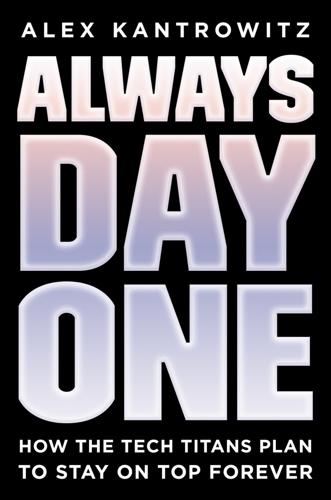
Always Day One: How the Tech Titans Plan to Stay on Top Forever
by
Alex Kantrowitz
Published 6 Apr 2020
Inside Mark Zuckerberg’s Culture of Feedback Facebook the Vulnerable Building a Feedback Culture Pathways Facebook’s Day One From Broadcast to Private “The Most Chinese Company in Silicon Valley” Enter the Machines Robot Compensation New Inputs Facebook’s Next Reinvention 3. Inside Sundar Pichai’s Culture of Collaboration The Hive Mind The Toolbar Episode The Path to Chrome The Shift The Split AI Answers The Great Reinvention Uprising Exodus 4. Tim Cook and the Apple Question A Culture of Refinement The Refiner’s Mindset Silos and Secrecy “A Form That’s Right” The HomePod Debacle Hands on the Wheel The IS&T Problem Face-off A Drive down 280 5.
…
“Our coworkers shouldn’t have to worry that each time they open their mouths to speak in a meeting, they have to prove that they are not like the memo states, being ‘agreeable’ rather than ‘assertive,’ showing a ‘lower stress tolerance,’ or being ‘neurotic,” Pichai wrote. He fired Damore. The Hive Mind Ideas move fast inside Google—so fast that those advancing them regularly lose control. And that’s by design. Sometimes, this means conversations traditionally confined to the watercooler become international incidents. But the communication tools through which Damore’s memo spread have also turned Google into one of the most collaborative companies on earth, linking its employees in a collective consciousness and breaking down the typical boundaries between divisions.
…
Google’s communication tools are critical to its success: They cut down the execution work required to get up to speed on a new project, and make room for new ideas. They send ideas rocketing around the company, sparking invention and improvement. They enable collaboration and signal it’s expected, removing red tape and driving home the importance of working together with fellow members of the hive mind. These tools have helped Google reinvent search repeatedly over the past fifteen years. And through each evolution, Sundar Pichai has been critical. The Toolbar Episode Pichai joined Google as a product manager in 2004, amid a developing crisis. At the time, approximately 65 percent of Google’s search traffic originated from Microsoft’s Internet Explorer browser, leaving the company fairly exposed.
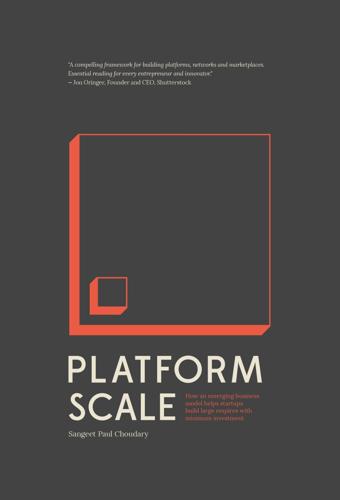
Platform Scale: How an Emerging Business Model Helps Startups Build Large Empires With Minimum Investment
by
Sangeet Paul Choudary
Published 14 Sep 2015
This can prevent those seeking a solution, from being served a solution that is radically different (and effective), and may over-serve obvious solutions. #4: THE HIVE MIND Most platforms start within a small micro-market, as we noted in Section 4. Once the micro-market is saturated, these platforms spillover to adjacent micro-markets. Sometimes, the culture developed while saturating the initial micro-market may become so strong and insular that it may discourage adjacent micro-markets from coming on board. This problem is compounded because of a platform’s need for governance. If certain forms of behavior are encouraged during the early days and certain others are discouraged, the platform runs the risk of creating a hive mind. With scale, certain behaviors get reinforced and established as desirable behaviors.
…
This fake activity was based on one principle: to ensure the seeding of content that the founders wanted the community to eventually discuss. As Reddit gathered traction, the initial content signaled high quality and encouraged user-producers to contribute content of similar quality, eventually creating a culture of such content in the community. Reddit is often criticized for encouraging a hive mind but there is no denying the strong network effects that the platform has succeeded in building. PLATFORM SCALE IMPERATIVE Platforms that try to create entirely new consumption behaviors may benefit from faking production initially. Platforms that require new consumption behaviors will often find it difficult to attract producers.
…
With scale, certain behaviors get reinforced and established as desirable behaviors. The governance on Reddit and Hacker News is so stringent that it overtly favors existing users (who have earned their karma) over new ones. These communities are often criticized for developing a hive mind. #5: CROWD-AS-A-HERD On platforms, reputation and influence are often conferred by the community. The best answer to a question on Quora is decided by the community through upvotes and downvotes. The best restaurants are determined by user-curators on Yelp. Value is dynamic and constantly evolving, best exemplified by a Wikipedia article in constant flux.
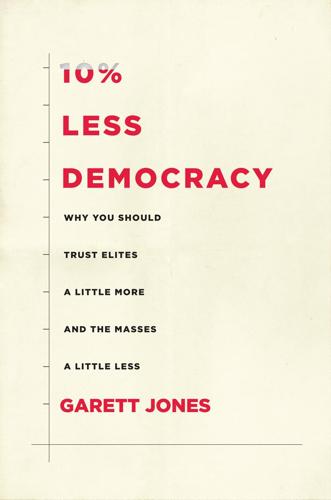
10% Less Democracy: Why You Should Trust Elites a Little More and the Masses a Little Less
by
Garett Jones
Published 4 Feb 2020
If you want policy determined and enforced by anonymous bureaucrats—like judges, central bankers, or trade commissioners—don’t say you want oligarchic, undemocratic bureaucrats in charge. Just say you want “independent” bureaucrats. It goes over much better. Enhancing the Hive Mind I spent about a decade researching the many ways in which smarter neighbors can improve our lives. My first book, Hive Mind: How Your Nation’s IQ Matters So Much More Than Your Own, brings together that line of research. Through the process, I learned about the workings of the human brain, the value of intelligence tests, the merits and joys of listening to psychologists. 10% Less Democracy has nothing to do with any of that, at least not directly.
…
se, 153–54 government credit rating, 130, 134 government debt/sovereign debt, 118–19, 125, 128–29; of Greece, 133, 165; of Italy, 136; ratio of national income to, 136; of United States, 118 government ownership: of banks, 74, 75, 76; of telecoms, 89 government regulation: by administrative court judges, 73; by appointed vs. elected regulators, 73, 80–89; captured regulators, 81–83; vs. central banks, 83, 84, 89; of electricity, 65, 71, 80–85; of employment, 74; financial independence of regulatory agencies, 90–91; independence of regulators, 88–91; judiciary vs. government regulators, 82–83, 88, 90–91; of telecommunications, 65, 80–82, 85–88, 89 grandfathering, 114 “great man” theory of history, 25–26 Greek sovereign debt, 133, 165 Grilli, Vittorio: on independent central banks, 49 gun owners’ rights, 64–65 Gurri, Martin: on Arab Spring, 144–45; on declining public authority, 144–45, 147; The Revolt of the Public and the Crisis of Authority in the New Millennium, 144–45; on social media, 144–45 Hamilton, Alexander: on bondholders, 119, 121, 177–78; Federalist No. 9, 177; First Report on the Public Credit, 128; on political science, 177–78; on republics vs. democracies, 180–81; on reputation, 128; on sovereign debt, 118, 119; on taxation, 118 Handbook of Economic Growth, 24 Hanisch, Carol: on the personal as political, 138 Harlow, Caroline Wolf, 109 Hatch, Orrin, 191n3; relationship with Ted Kennedy, 3 Hayek, Friedrich: on prices, 87; “The Use of Knowledge in Society”, 87 hegemonic political parties, 22 Hegre, Håvard: on levels of democracy, 17; on peace and democracy, 17; on socioeconomic development, 17 Heinlein, Robert: on minimum intelligence for voting, 116–17; voting in Starship Troopers, 106, 116 Helland, Eric: on elected judges and voters, 66–68 Heritage Foundation’s Index of Economic Freedom, 157 Hirschman Albert: on capitalism and peace, 16; The Passions and the Interests, 16 Hive Mind, 6 Hong Kong: foreign judges in, 71–72 Houellebecq, Michel: on Europe as oligarchy, 148, 149, 154 human rights, 20, 66, 102–4, 117, 168, 186 Hungary, 156 Hussein, Saddam, 181 Illinois: redrawn legislative districts in, 38–39 IMF. See International Monetary Fund income distribution and trade, 32 income growth and central bank independence, 48, 49 Index of Democratization, 19 Index of Economic Freedom, 157 India: appointment of judges in, 69; Bengal famine, 9–10; as democracy vs. colony, 9–10 inflation: and central banks, 43–44, 45–48, 49, 51, 52, 53–55, 56, 57, 58–59, 60, 90, 179; and economic growth, 23–25; in EU, 155; hyperinflation, 122; policy regarding, 43; and printing money, 121–22; problems with, 23–24, 25; relationship to happiness, 24; relationship to independent central banks, 45–48, 49, 52, 56, 57, 58–59, 60, 90; relationship to unemployment, 43–44, 48–49; and taxation, 23; in United States, 45–46, 47, 90, 122–23, 201n5; voter attitudes regarding, 30 Initiative on Global Markets (IGM), 31–32, 34–35 Inter-American Development Bank, 133 interest rates, 83, 165, 201n5; on bonds, 122, 123; and central banks, 41–42, 45; and French monarchs, 129–31; on municipal debt, 77–79 International Monetary Fund (IMF): conditions on loans, 34–35, 125, 133–34 investor-inclusive governance, 119, 126–27 Ireland: economic freedom in, 157; Seanad Éireann, 112 Israel: appointment of judges in, 69–70 Italy: age and voter knowledge in, 106–7; education and voter knowledge in, 98, 102; North vs.
…
South, 98; ratio of government debt to national income in, 136; relations with EU, 155 Japan: appointment of judges in, 70; finance ministry, 124; government bonds, 124, 126; ratio of government debt to national income in, 136; Supreme Court, 65 Johnson, Lyndon, 43 Jones, Benjamin: on democracies vs. autocracies regarding economic performance, 25–26; “Do Leaders Matter?”, 25–26 Jones, Garett: Hive Mind, 6; talk at Stanford on “10% Less Democracy”, 1–3 judiciary: appointment of judges, 65, 67, 69–73, 83, 187; vs. central banks, 64, 65, 70–71, 74, 76, 83; committee decisions by, 65; decisions as local, 66–68; election of judges, 65, 66–68, 69, 72–73, 76, 83, 187, 188; vs. government regulators, 82–83, 88, 90–91; impeachment of U.S. federal judges, 91; as independent, 15, 64–65, 67–68, 69–76, 175, 179, 186, 187; relationship to economic freedom, 69–76; relations with voters, 66–68; respect for judicial precedent among, 68–69, 72, 73, 74; supreme court judges vs. administrative court judges, 73, 74; term length of judges, 43, 64, 65, 70, 73, 74, 75, 76, 177, 181 Kennedy, Ted: relationship with Orrin Hatch, 3 Keynes, John Maynard, 16, 145 Kleine, Mareike, 36, 37 Klein, Ezra: on Supreme Court, 64 Klomp, Jeroen: on central banks and financial crises, 57 Kydland, Finn: on real business cycle (RBC) theory, 55 labor market regulation, 34–35, 74, 75, 76, 100 Laffer curves, 19–22, 65, 81, 117 La Porta, Rafael: on judicial independence and economic freedom, 73–76 Latin American debt crisis, 133 Lawson, Robert: on economic freedom in EU, 155 Lee Kuan Yew, 175; on democracy, 172–73; From Third World to First, 172 legislative productivity: impact of longer terms on, 37–38; impact of looming elections on, 36–37 liberal institutions and peace, 16–17 Lincoln, Abraham: on fooling people all the time, 53 Lipset, Seymour Martin: on prosperity and democracy, 11 logrolling, 139–42, 143 Long, John: on real business cycle (RBC) theory, 55 looming elections: impact on exchange rate policy, 36; impact on labor market policy, 34–35, 36; impact on legislative productivity, 36–39; impact on trade policy, 32–34, 36; impact on U.S.

We Are Anonymous: Inside the Hacker World of LulzSec, Anonymous, and the Global Cyber Insurgency
by
Parmy Olson
Published 5 Jun 2012
A raid was more likely to happen if lots of people agreed to take part. But it could be manipulated if a small group of four or five people suggested a raid and repeatedly commented on it to make it look like the hive mind was latching on. Sometimes this worked, sometimes it didn’t. It was a game where seconds counted—if the original poster couldn’t post for two minutes, the chance could be lost and the hive mind would lose interest. Another reason to stick around: /b/ was an endless source of learning, whether it was how to prank pedos or unearth someone’s private data. Soon enough, the /r/ requests for porn weren’t just for celebrities but for the n00dz of real-life girls, exes, or enemies of /b/tards.
…
Supporters of anonymity and tripcodes started creating separate threads, calling on anyone who supported their own view to post a message and demonstrate support, or starting “tripcode vs. anon” threads. The tripfags began mocking the anonymous users as a single person named “Anonymous,” or jokingly referring to them as a hive mind. Over the next few years, however, the joke would wear thin and the idea of Anonymous as a single entity would grow beyond a few discussion threads. Poole would fade into the background as Anonymous took on a life of its own. Over the years, /b/ in particular would take on a dedicated base of users whose lives revolved around the opportunities the board afforded them for fun and learning.
…
“They honestly believed that because of the amount of people it would be impossible to prosecute any single individual,” the programmer later remembered. “No one talked about prosecutions. They didn’t want to hear about your IP being exposed or anything like that.” And the overwhelming sense of camaraderie and accomplishment dominated reasonable argument. The world’s media were paying attention to Anonymous and its extraordinary hive mind; the last thing they needed was to start fiddling with the technology they were relying on and slowing things down. Even when Dutch police swiftly arrested sixteen-year-old AnonOps IRC operator Jeroenz0r and nineteen-year-old Martijn “Awinee” Gonlag on December 8 and 11, 2010, people on AnonOps initially didn’t believe it.

Ten Billion Tomorrows: How Science Fiction Technology Became Reality and Shapes the Future
by
Brian Clegg
Published 8 Dec 2015
The reason the Borg would have given me nightmares as a child was their cold, superhuman, unstoppable nature. (That and the habit of replacing bits I’d rather not lose, like an eye.) Not only was their ship, a messy cube of incomprehensible artifacts, incomparably more convincing and ominous than any flying saucer, this was a hive mind, a collective whose individual components had all the flexibility of a human being, but were scarily enhanced as an interacting whole. In the TV show and the movies, humans eventually triumphed. But anyone who rationally assessed the stories realized that the Borg would really have won the day, leaving the Federation assimilated.
…
But anyone who rationally assessed the stories realized that the Borg would really have won the day, leaving the Federation assimilated. Frankly, Captain Picard, transformed to “Locutus of Borg,” came across better than he did as a human. Although the main scientific thrust of the Borg as a creation is the combination of human and machine, it is worth briefly contemplating that “hive mind” aspect, because the more we find out about collective insects like bees or termites, the more impressively different and alien they are—an ideal model for science fiction. Star Trek was by no means the first to play on the idea that aliens may not be distinct individuals as we are, but part of a larger whole.
…
See also antigravity aliens and creating artificial Einstein on manipulation of SF use of spacecraft launch and tractor beams and Griffin (fictional character) Guiney, Sue Hal (HAL 9000 computer) AI design of chess game of conversation ability of expert system approach and homicidal actions of naming convention for physical design of speech interpretation of Haldeman, Joe Hawking, Stephen on aliens voice of Heinlein, Robert A. “helicoidal ray” Hendo board Herbert, Nick Herschel, William Hewish, Antony Higgs field hive mind holodeck computer game inspiring implications of problems with virtual reality compared to hologram color definition of first moving restrictions Hothouse (Aldiss) hoverboard Hoyle, Fred Hughes Aircraft Company “human batteries” human-machine. See cyborg technology The Hunt for the Meteor (Verne) hydraulic systems hyperspace hypnopedia.

More Blood, More Sweat and Another Cup of Tea
by
Tom Reynolds
Published 30 Apr 2009
Chapter 141 - The Right Choice Chapter 142 - The Slow Attrition of the Soul Chapter 143 - Knee Chapter 144 - Extended Role Chapter 145 - The Stanford Experiment Chapter 146 - Da Boss Chapter 147 - Standing Back Chapter 148 - Two in Two Nights Chapter 149 - MHU Transfers Chapter 150 - No Boom Today, Maybe Boom Tomorrow Chapter 151 - A Little Good Chapter 152 - Anger Chapter 153 - A Night on the FRU Chapter 154 - Attention Chapter 155 - Meal-Breaks Chapter 156 - Battered Chapter 157 - The Long Job Chapter 158 - Christmas Chapter 159 - Man Down Chapter 160 - Pre-Christmas Crisis Chapter 161 - Bus/Follow Up Chapter 162 - Curse of the Observer Chapter 163 - His and Hers Chapter 164 - On the Possible Causes for a Collapse Chapter 165 - Non-Carers Who Care Chapter 166 - Canvas, with Handles Chapter 167 - Essex Boy Chapter 168 - Parents Chapter 169 - A Query on a Phone Call Chapter 170 - Wheelchair Chapter 171 - More of the (Shameful) Usual Chapter 172 - Violence Chapter 173 - Increasing Calls Chapter 174 - Mr Grumpy Chapter 175 - Yellow Card Chapter 176 - Fat Bastard Chapter 177 - On the Failings of My Stab Vest Chapter 178 - Broken Finger Chapter 179 - Returnee Chapter 180 - Another Good Job Chapter 181 - Infested Chapter 182 - Small Annoyances Chapter 183 - Friday Chapter 184 - The Same Old Story Chapter 185 - Yellow Chapter 186 - Hive Mind Chapter 187 - From Sun to Scum Chapter 188 - More Real Work Chapter 189 - More Strokes Chapter 190 - Midwife to Tragedy Chapter 191 - Rat Poison Chapter 192 - Filth Chapter 193 - Why I Like Old Folk Chapter 194 - Cordoned Off Chapter 195 - Invisible Dogs Chapter 196 - Why the Government Hates Us Chapter 197 - Thanks to a Bystander Chapter 198 - Smoky Chapter 199 - How to Fix the Ambulance Service (Part One) Chapter 200 - HOW to Fix the Ambulance Service (Part Two) Chapter 201 - Hidden Abuse?
…
They were quite happy in their life, they had each other, they had their ‘little sin’ and they weren’t hurting anyone. They were lovely, we had a little laugh and a joke with them, I stroked the dog a bit more and we took our patient off to hospital. But I could taste that house for the rest of the day. Hive Mind There I was, sitting outside the newsagent’s shop at the end of the hospital road. The newsagent whom I’m sure I keep financially stable with my purchases of large amounts of caffeinated beverages. As I finished off the paperwork from my previous job one of our ambulances raced past me on the way to a job.
…
She wouldn’t let me get a word in edgeways. I considered stepping out of the ambulance and punching her on the nose. I reconsidered as it was not a good career choice. I told her to go away. Maybe a little less politely than policy would suggest. Apparently, because we all share a uniform we all share a hive mind. Also I suspect that she wouldn’t shout at me if she were to come across me in the street wearing my jeans and hoodie. From Sun to Scum It was a beautiful day, early afternoon and the sun was making everything in Newham look lovely. A stationmate had been showing his young children around the back of our ambulance when we got the call.

To Sleep in a Sea of Stars
by
Christopher Paolini
Published 14 Sep 2020
HIGHMOST: wielder of the Staff of Blue. Leader of the Heptarchy. HIVE MIND: psycho-mechanical joining of two or more brains. Usually accomplished by continual-beam synchronization of subject implants, ensuring agreement between intero-, extero-, and proprioceptive stimuli. Total exchange of prior sense memory is a common (though not required) part of establishing a hive mind. Effective range depends on signaling bandwidth and tolerance for lag. Breakdown tends to occur when physical proximity exceeds tolerance. Largest recorded hive mind was forty-nine, but experiment was short-lived as participants experienced debilitating sensory overload.
…
Vishal asked, leaning in, brow pinched. She tried to find the words. “The Soft Blade, it connected my brain to his.” Vishal’s eyes widened. “No. A direct neural link?!” Kira nodded again. “I wasn’t trying to. The xeno just did it. For a while, we had a … a…” “A hive mind?” said Hwa-jung. “Yeah. Like the Entropists.” Vishal clucked his tongue as he helped Kira to her feet. “Forming a hive mind with a ship mind is very dangerous for an unaugmented human, Ms. Kira.” “I know. Good thing I’m augmented,” said Kira wryly. She tapped the fibers on her arm to make her meaning clear. Hwa-jung said, “Were you able to talk with him at all?”
…
“She—Me—Us—” He wrung his hands, which caused him to start floating away. Falconi caught him, stabilized him. “There is no us! No we. No I. All gone. Gone, gone, gone, ahhh!” And his voice dropped into meaningless rambles again. Falconi shook him. “Pull yourself together! The ship’s almost here.” It made no difference. “Their hive mind is broken,” said Hwa-jung. “So? He’s still himself, isn’t he? “That’s—” Veera woke with a gasp and a wild start that sent her spinning. An instant later she clutched her temples and began to scream. At the sound, Jorrus curled into a fetal ball and whimpered. “Great,” said Falconi. “Now we’ve got a pair of crazies to deal with.

The Age of Surveillance Capitalism
by
Shoshana Zuboff
Published 15 Jan 2019
See also adolescence chilling effect, 472; and extended chilling effect, 472, 489 China: conflation of instrumentarian and authoritarian power in, 389, 393–394; crisis of social trust in, 389–390; funding Pentland’s research lab, 417; Shenzhen trade show and surveillance technology industry, 393–394, 395; Skinner’s views on, 443; social credit system in, 388–394; use of location data in, 246 China Daily, 391 chips, 189, 245, 289, 392 choice architectures, 294, 370 Chomsky, Noam, 323, 441 Choudhury, Tanzeem, 419, 420 Chrome browser, 400, 487 CIA (Central Intelligence Agency), 114, 116, 117, 321–322 Cisco, 227, 264, 417 Cisco Kinetic, 227–228 cities, 227–232 civil society organizations, 126 Clapper, James, 387 click-through rates, 76, 82, 83–84, 95–96, 277 click-wrap agreements, 48–50, 108 climate, sensors of, 206 climate change, 126, 346 cloud, the: Google’s, 188, 218; and human relationships, 410; and machine relations, 408; Microsoft’s, 400 Cohen, Jared, 103, 223 Cohen, Leonard, 255 cold war, 108, 320–321 collaboration: and contractual agreements, 333, 334, 335–336, 337; and social pressure, 435–436 collective action: confluence as new form of, 409, 413; and contractual agreements, 333; needed to challenge asymmetries of knowledge and power, 344–345, 485–486, 520–525 collective decision making, 407, 432–433 collective mind. See hive mind collectivism: behavior for the greater good, 431–432; and death of individuality, 436–437, 438–440, 444, 469; neoliberal ideology in opposition to, 38, 39, 108, 504–505; and surveillance capitalism’s collectivist social vision as departure from market democracy, 21, 495, 504–512, 519. See also hive mind Columbus, Christopher, 176–177 Columbus, Ohio, 229 co-marketing, 217 commodity fictions (Polanyi), 99, 345–346, 514 Common Rule (legal standards for experimentation), 303–304, 320, 325 Communications Decency Act (1996), Section 230, 110–112 communism, 321 Communist Manifesto, The (Marx and Engels), 222 Communist Party, 356, 389 compulsion: elements of, 451; and mobile advertising, 242–243; of social media, 449–453, 457–458, 463, 466–467; through uncontract, 221 CompuServe, 111 “Computer for the 21st Century, The” (Weiser), 199–202, 398 computer-mediated transactions, new uses of, 64–65, 212–213, 256 Concept of the Corporation (Drucker), 64 conditioning: definition of, 296–297; “mind control” as system of, 322; operant conditioning, 296, 322, 361 confluence: as core social process of instrumentarianism, 397f; in the hive, 466; as machine relations, 20–21, 407–411; as new form of collective action, 409, 413; as new template for social order, 21, 411–415, 429 conquerors, Spanish, 12, 176–177, 177–178, 193 conquest: through declaration, 176–180; and domination of souls, 354, 359, 365 Conquest, Robert, 356, 357 conquest pattern, 176, 177–178, 338 conscientiousness, 275, 277 consciousness.
…
Stanley, 452, 453 “Hallelujah” (Cohen), 255 Hancock, Jeffrey, 303 Hanke, John: and Google Earth, 117, 142, 311; on Google Glass, 156; and Google Maps, 117, 142, 310–311; and Google Street View, 142–143, 147–148, 310; and Ingress virtual reality game, 150; intelligence community connections, 117, 142; and Niantic Labs, 150, 310–312; and Pokémon Go, 310–311, 313, 315, 316, 317 Harley, John B., 155 Harvard Law Review, 326 Harvey, Adam, 490–491 Harvey, David, 99 hate speech: and calculation of radical indifference in Facebook content moderation, 509–510; First Amendment rejection of restrictions on, 109 Hawkins, Amy, 389–390 Hayden, Michael, 114 Hayek, Friedrich, 37–39, 106–108, 181, 496–498, 505, 519–520 health care: and internet of things, 247–251; and wearable technologies, 240, 247–249 health insurance, 216, 295 Heatherton, Todd, 308 Heinrich, Bernd, 467 herding approach to behavioral modification, 8–9, 202, 295–296, 463 Heritage Action, 126 Herrnstein, Richard, 368 heteronomy, 308, 320 Heyman, Steven, 109 hiding, from surveillance, 489–492 Hilbert, Martin, 183, 188 Hildebrand, Grant, 475 hiQ, 174 Hive (Facebook data log storage area), 483 the hive: for children/youth, 444, 445–449, 465–466; and compulsion, 449–450, 451; dangers of, 455–456, 492; and Facebook design, 451, 456–461; and homing to the herd, 465–470; as instrumentarianism’s ideal for a third modernity, 443–445; life in, 445–474; and no exit, 470–474; psychological processes in, 461–465; and psychological processes of adolescence, 449, 452–455; and social comparison, 461–465. See also hive mind hive mind: as core social process of instrumentarianism, 397f; instrumentarian society as, 20–21, 419; human hive, 414–415; machine confluence as, 409; machine hive, 413–415, 492; and radical indifference, 504–512; and social hive, 431; social pressure exerted by, 436–437 HIV research, 61–62 Hoffman-Andrews, Jacob, 167, 168 Hölzle, Urs, 189 home: and Big Other, 477–479; and digital assistants, 261–262; house fire, author’s, 12–13, 475–476; and lack of Fourth Amendment protection from Big Other, 480–481; as private domain, 6, 478–479; search for, 4–5; as sanctuary of self, 475–477.
…
The second is a shift of focus from the real world to the social world, as society itself becomes the new object of extraction and control. Just as industrial society was imagined as a well-functioning machine, instrumentarian society is imagined as a human simulation of machine learning systems: a confluent hive mind in which each element learns and operates in concert with every other element. In the model of machine confluence, the “freedom” of each individual machine is subordinated to the knowledge of the system as a whole. Instrumentarian power aims to organize, herd, and tune society to achieve a similar social confluence, in which group pressure and computational certainty replace politics and democracy, extinguishing the felt reality and social function of an individualized existence.

The Internet of Us: Knowing More and Understanding Less in the Age of Big Data
by
Michael P. Lynch
Published 21 Mar 2016
A device that gives you a world of information also gives the world huge amounts of information about you, and that might seem like a threat to privacy. Others might fret about fragmentation—that neuromedia encourages people to share more information with those who already share their worldview, but less with those who don’t. They would worry that this would make us less autonomous, more dependent on our particular hive-mind—less human. But we can imagine that many in the society see these potential drawbacks as a price worth paying for immediate and unlimited access to so much information. New kinds of art and experiences are available, and people can communicate and share their selves in ways never before possible.
…
Crowdsourcing is not simply any activity that uses the World Wide Web as a platform for people to network about problems—like Intrade or rankings on Amazon. As computer scientist Daren Brabham defines it, crowdsourcing is an online problem-solving and production model that “leverages the collective intelligence of online communities to serve specific organizational goals.”2 In other words, it is the top-down organized use of the Internet hive-mind. An organization throws out a problem, and those who want (or those granted access to the relevant site or network) contribute solutions, and see what sticks. The popular incentive-based innovation platform InnoCentive is often cited as an example of the inclusivity of crowdsourcing. (InnoCentive is ancient in Web 2.0 terms: it was founded in 2002.)
…
S., 159–60 Bush, George W., advisor to, 86 calculators, 153 Caldarelli, Guido, 112 cameras, 89, 94 security, 91, 97 Cancer Ward (Solzhenitsyn), 185 capitalism, changes in, 140–41, 144 Cartesian coordinates, 175 Cartesian foundationalism, 126–29, 131 Catanzaro, Michele, 112 Cavell, Stanley, 10 CCTV, 91 CD-ROMs, 8 censorship, 42, 65, 66, 134, 144 self-, 97 Chabris, Christopher, 30 Chalmers, David, 115 chat rooms, 118 chess, 165 children: and hands-on experience, 174 understanding in, 177 China: iPhone production in, 77–78, 139 oppressive government policies of, 81 truth deleted from Internet in, 65, 66 Chuck, 167–68, 173 Church, power held by, 133–34 CIA, 100 data searched by, 99 Clark, Andy, 115 climate change, 56, 100, 124, 144, 185, 198 cloud: data storage on, 23 data trail on, 9 in information sharing, 4–5 coherentism, 130 see also fabric metaphor, for structure of beliefs Collaborative Commons, 140–41 educational model of, 151–52 as first world resource, 144 collective responsibility, 118–19 College Humor (website), 24 common point of view, 48 communication: isolation and, 41–42 neuromedia and, 113–14 of standards, 39–40 computers, xvii brains and, 19 games, 19–20, 191 reality simulated in, see SIMs self-awareness in, 116, 193 Concept of Mind, The (Ryle), 168 conclusions, jumping to, 29–30, 58 Condorcet Jury Theorum, 120–21 confirmation bias, 54–55, 56 defined, 51–52 Congress, U.S., NSA vs., 99 consequences, 172 conservatives, 43 context, in data analysis, 161 continuum hypothesis, defined, 197 “cookies,” tracking by, 90 Copernicus, Nicolaus, 34 corporate responsibility, 118 corporations, as “people,” 200 correlation analyses, 158–59 Coursera, 150 cover-ups, 83 creationism, 49 creativity: “impossible” aspect of, 176, 177 knowledge and, xvii, 6, 180 as personally relative, 176–77, 181–82 in reaching understanding, 15–16, 174–77, 181, 183 value and importance of, 183 credibility, 40, 46, 50, 119–20 and human rights, 147 criminal justice system, identification techniques in, 93–95 critical thinking: democratic institutional support for, 61–62 importance of, 125 knowledge through, 33–34 crowdsourcing, 136–37, 141–42 Cukier, Kenneth, 8, 158–59 culture: form of life as, 10, 17–18 video map of, 161–62 cyborging, 5–6, 191–92 Daedalus, 13 D’Agata, John, 79–80 Daily Kos, 43 Daisey, Mike, 77–80, 82 data, information vs., 12, 14 data analysis, data analytics, 9, 90, 91, 155–63 data maps, 160 data mining, 90–91 abuses of, 95–107 commercial use of, 97, 105–6 control and, 96 incidental collection in, 95–96, 99, 199 intention in, 96–98, 100 data storage, 91, 95–96, 99–100, 108 data trails, 9, 185 dating sites, 157 deception: justified, and relation to autonomy, 83 truth and, 75–83 decision making: autonomy in, 102–7 overruling in, 102 undermining in, 102–3 Deepwater Horizon oil spill, responsibility for, 118 dehumanization, 105 democratization: capitalism vs., 141–42 Internet as force for, 11, 49, 55–63, 125, 133–38, 148 of public policy, 121 Dennett, Daniel, 74 dependency relationships, in understanding, 165–67, 177, 182 dephysicalized objects, defined, 69 Descartes, René, 19–20, 34, 39, 126–27, 129, 162, 174–76, 177 Dewey, John, 151 Dianetics, 61 Dick, Philip K., 75 dictionaries, 21–22 digital form of life, xviii, 3–20 as abstract and depersonalized, 41–50 caveats about, 184–88 as a construction, 70–74, 83–86, 187 defined, 10 limitations of, 16 understanding in, 153–78 see also Internet of Us digital groups, 118–19 digital knowledge: caveats about, 184–88 dependence on, xvi–xviii, 5, 12, 21–26, 31, 36, 179 distribution of, 113 education and, 148–54 full and equal participation in, 146 as interconnective, 184–88 international access rates for, 135, 144–45 massive proliferation of, 8, 11–12, 32, 56, 128 network of, 111–32 as power, 9, 98–99, 186 ready accessibility of, 3–4, 23, 30, 42, 56, 113–16, 135–36, 141, 149, 153, 180 speed of, 23, 29–30, 42, 135 using alternative sources to, 21–23 see also Google-knowing dinosaurs, 66 discursive knowledge, 169 “divided line” graph of knowledge, 126 DNA identification techniques, 93–94 Dreyfus, Hubert, 168, 171 drugs: abilities changed by, 173 SIM life compared to, 77 Duke University, 152 earthquakes, emotional epicenters of, 160–61 eavesdropping, 101 Ebola, 16 economy, 111, 162 as digitally dependent, 7–8, 9 free-market, 145 full and equal participation in, 146 globalization of, 139, 142 of knowledge, 138–45 manufacturing in, 138–39 prediction markets in, 122–23 education: cheapening of, 152–53 crisis in, 149–50 as epistemic resource, 143, 145 information technology and, 148–54 old model of, 151–52 U.S. hegemony in, 149 education bubble, 149, 152 education systems, 35–36 edX, 150 Einstein, Albert, 175, 177 elections, 120–23 emails, 81 emotion, reasoning vs., 51–55 “End of Theory, The: The Data Deluge Makes the Scientific Method Obsolete” (Anderson), 156–57 Enlightenment, 33–34, 58–59 environment: interacting with, 174 receptive tracking of, 27–30, 131 “environmental luck,” 203 epilepsy, 168 epistêmê, 14, 170, 172 epistemic economy, 147–48 epistemic equality, 138–48, 150, 187 epistemic inclusivity, 135–36 epistemic inequality, 142–48, 201 epistemic injustice, 146–48, 201 epistemic principles, 14, 47, 50, 55, 57, 60 as democratic, 62, 135–36 epistemic resources, 143–45 epistemic trust, 195 epistemology, defined, see epistemic principles Epistemology and Cognition (Goldman), 194 Essay concerning Human Understanding, An (Locke), 35 ethical values: changes in, 53–54 democratic, 58 and fragmentation, 44 technology and, xvii, 6, 89–90 “eureka” moment, 176, 177 Eurocentrism, 162 Euthyphro (Plato), 165–66, 172 evangelicals, 47–49 evidence, in change of belief, 54–55 expectations: in changing of social constructs, 72–73 conclusions colored by, 29–30, 160 theoretical, 159 of truth, 79–80 experience: as foundation for knowledge, 127, 131 in hands-on movements, 173–74 illusion and reality in, 18–19 procedural knowledge in, 172–73 understanding through, 16, 173–74 experts, expertise: knowledge based on, 15, 35–38, 120, 139–40 outsourcing of, 141–42 in predicting, 122–23 in problem solving, 137 understanding and, 170–71 explanation, 165–67, 182 extended mind hypothesis, 115 fabric metaphor, for structure of beliefs, 129 Facebook, xvii, 8, 24, 43, 72, 124 hegemony of, 146 as simulacrum, 16 tracking by, 105 fact-checking, 46–47, 56, 85, 130 falsehoods, 77–83 “fast thinking” processes, 29–30 FBI, data searched by, 99 fiction, 79–80 fingerprints, 93 FISA, see Foreign Intelligence Surveillance Act fishbowls, digital life compared to, 91 Fishburne, Laurence, 18–19 Flanagan, Owen, 73–74 Floridi, Luciano, 10, 69–71 Foreign Intelligence Surveillance Act (FISA; 1978), 88 court of, 99, 109 form of life: defined, 10 philosophy in, 17–18 Forms (Platonic), 126 foundationalism, Cartesian, 126–29, 131 Fox News, 43 fragmentation: of reason, 148 threat of, 4, 41–63 Freebase, 151 freedom of choice, autonomy of decision vs., 102 French Revolution, 58 Freud, Sigmund, 184 Fricker, Miranda, 146–48, 201 Galileo, 34, 68 Galton, Francis, 120 games, gaming, 20, 191 gatekeeping, 128, 134, 146 gender, 162 in marriage, 53–54, 72 in problem solving, 137 Georgetown University, 77–78 Gilbert, Margaret, 117–19, 200 Glass, Ira, 78 Glaucon, 54 Glauconian reasoning, 54–55, 56–58 global economy, 139, 142, 152 global warming, 56, 100, 124, 144, 185, 198 Goldberg, Sandy, 115 Goldman, Alvin, 194 Google, 5, 23, 30, 113, 128, 130, 135, 163, 174, 182, 203 business model of, 9 data collection and tracking by, 90, 155–56, 158, 161 as hypothetical “guy,” 24 monopolization by, 145–46 propaganda disseminated on, 66 in reinforcement of one’s own beliefs, 56 Google Complete, 155 Google Flu Trends, 158, 183 Google Glass, 149, 186 Google-knowing, xvi, 21–40, 25 defined, 23 limitations of, 174, 180 reliance on, 6–7, 23, 25–26, 30–31, 36, 113, 116, 153, 163, 179–80 Google Maps, 116 Google Street View, 23 Gordon, Lewis, 148 gorilla suit experiment, 30 government: autonomy limited by, 109 closed politics of, 144–45 data mining and analysis used by, 9, 90–91, 93, 104, 107 online manipulation used by, 81 purpose of, 38 transparency of, 137–38 Greece, classical philosophy of, 13, 47, 166–67, 171–72 Grimm, Stephen, 164 Guardian, 81 Gulf of Mexico, oil spill in, 118 H1N1 flu outbreak, tracking of, 158 Haidt, Jonathan, 51–54, 56, 57, 60, 196–97 Halpern, Sue, 106 Harvard Law Review, 89 Hazlett, Allan, 49 HBO GO, 145 Heidegger, Martin, 177 Hemingway, Mark, 46 Higher Order Thinking Skills (HOTS), 61 Hippocrates, 13 hive-mind, 4, 136 HM (patient), 168–69 Hobbes, Thomas, 38, 109 holiness, logical debate over, 166–67 homosexuality, changing attitudes toward, 53–54 Houla massacre, 83 Howe, Jeff, 136 Huffington Post, 43 human dignity: autonomy and, 58, 59–60 information technology as threat to, 187 interconnectedness and, 184–88 privacy and, 101–9 human rights, 54, 60 digital equality as, 142–48 protection of, 145 Hume, David, 48 hyperconnectivity, 184–88 identity: digital reshaping of, 73–74 manufactured online, 80–81 “scrubbing” of, 74 illegal searches, 93 illusion, distinguishing truth from, 67–74 incidental data collection, 95–96, 99 inclusivity, 135–37 income inequality, 142 inference, 29, 60, 172 information: accuracy and reliability of, 14, 27–30, 39–40, 44–45 collected pools of, 95–100, 107–9 distribution vs. creation of, 24 immediate, unlimited access to, 3–4, 23, 30, 42, 56, 113–16, 135–36, 141, 149, 153, 180 as interconnective, 184–88 vs. knowledge, 14 sorting and filtering of, 12, 26–29, 44–45, 127–28 information age, 111 information analysis, techniques of, 8–9 information cascades, 36, 66, 121 defined, 32 information coordination problem, 38–39, 56 information “glut,” 9–10, 44 information privacy, 94–100 and autonomy, 102–7 information sharing, coordination in, 4–5 information technology: costs of, 145 data trail in, 9 democratization through, 133–38, 148 devices and platforms of, xvii–xviii, 3, 7–8, 10, 41–43, 69, 70, 77–78, 90–91, 106–7, 144, 148–49, 156, 180, 185–87 disquieting questions about, 6 in education, 148–54 experience vs., 173–74 hypothetical loss of, 5 paradox of, 6, 12, 179 pool of data in, 95–100 surveillance and, 89–109 typified and dephysicalized objects in, 69 unequal distribution of, 144–45 see also Internet of Things information theory, 12 infosphere: defined, 10 feedback loop of social constructs in, 72–73 network of, 180 pollution of, 148 vastness of, 128 InnoCentive, 136–37, 141 institutions, cooperative, 60–61 intellectual labor, 139–40 International Telecommunications Union, 135 Internet: author’s experiment in circumventing, 21–24, 25, 35 in challenges to reasonableness, 41–63 changes wrought by, xv–xviii, 6–7, 10–11, 23, 180, 184–88 as a construction, 69 cost and profit debate over, 145 as epistemic resource, 143–45 expectations of, 80–83 as force for cohesion and democracy, 55–63 freedom both limited and enhanced by, 92–93 international rates of access to, 135, 144–45 monopolization and hegemony in, 145–46 as network, 111–13 “third wave” of, 7 see also World Wide Web; specific applications Internet of Everything, 184 Internet of Things: blurring of online and offline in, 71 defined, 7–8 integration of, 10 shared economy in, 140–41 threat from, 107, 153, 184–88 Internet of Us, digital form of life as, 10, 39, 73, 83–86, 106, 179–88 interracial marriage, 54 interrogation techniques, 105 In the Plex (Levy), 5–6 Intrade, 122–23, 136 intuition, 15, 51–53 iPhone, production of, 77–78, 80, 139, 144 IQ, 52 Iraq, 83 Iraq War, 137 ISIS, 128 isolation, polarization and, 42–43 I think, I exist, 127 James, William, 11 Jefferson, Thomas, 143 Jeppesen, Lars Bo, 137 joint commitments, defined, 117–18 journalism, truth and, 84 judgment, 51–55, 57 collective vs. individual, 117, 120–25 justice, 54 “just so” stories, 27–28 Kahneman, Daniel, 29, 51 Kant, Immanuel, 34, 58–60, 62, 85 Kitcher, Philip, 182 knowing-which, as term, 171 knowledge: in big data revolution, 87–190 changing structure of, 125–32 common, 117–19 defined and explained, xvii, 12–17 democratization of, 133–38 digital, see digital knowledge; Google-knowing distribution of, 134–35, 138, 141 diverse forms of, 130 economy of, 138–45 hyperconnectivity of, 184–88 individual vs. aggregate, 120–24 information vs., 14 Internet revolution in, xv–xviii minimal definition of, 14–15 as networked, 111–32 new aspects in old problems of, 1–86, 90 personal observation in, 33–35 political economy of, 133–54 as power, 9, 98–99, 133, 185–86 practical vs. theoretical, 169, 172 procedural, 167–74 recording and storage of, 127–28 reliability of sources of, 14, 27–31, 39–40, 44–45, 114–16 as a resource, 38–39 shared cognitive process in attainment of, 114–25 three forms of, 15–17 three simple points about, 14–17 truth and, 19, 126 understanding vs. other forms of, 6, 16–17, 90, 154, 155–73, 181 value and importance of, 12–13 knowledge-based education, 61 Kodak camera, 89 Koran, 48, 61 Kornblith, Hilary, 194 Krakauer, John, 169 Kuhn, Thomas, 159–60 Lakhani, Karim, 137 Larissa, Greece, 13, 15, 182 Leonhardt, David, 122–23 Levy, Steven, 5–6 liberals, 43 libraries, 22, 134, 153–54 of Alexandria, 8 digital form of life compared to, xvi, 17, 20, 44–45, 56, 63, 128 as epistemic resource, 145 Google treated as, 24 “Library of Babel” (Borges), 17 “Lies, Damned Lies, and ‘Fact-Checking’: The Liberal Media’s Latest Attempt to Control the Discourse” (Hemingway), 46 Lifespan of a Fact, The (D’Agata), 79 literacy, 35, 134 literal artifacts: defined, 69 social artifacts and, 71, 72 lobectomy, 168 Locke, John, 33–36, 39, 60, 67–70, 85, 127, 143 “Locke’s command,” 33–34 London Underground, mapping of, 112–13 machines, control by, 116 “mainstream” media, 32 censorship of, 66 majority rule, 120 manipulation: data mining and, 97, 104–6 of expectations, 80–82 persuasion and, 55, 57–58, 81–83, 86 manuals, 22 manufacturing, 138–39 maps, 21–22 marine chronometer, 137 marketing: bots in, 82 Glauconian, 58 targeted, 9, 90, 91, 105 marriage: changing attitudes toward, 53–54 civil vs. religious, 58–59 as social construct, 72 martial arts, 170 mass, as primary quality, 68 Massive Open Online Courses (MOOCs), 150–53 mathematics, in data analysis, 160, 161 Matrix, The, 18–19, 75 Mayer-Schönberger, Viktor, 8, 158–59 measles vaccine, 7, 124 Mechanical Turk, 136, 141 media, 134 diversity in, 42 opinion affected by, 53 sensationalist, 77 memory: accessing of, 114, 115 in educational models, 152 loss of, 168–69 superceded by information technology, xv–xvi, 3, 4, 6, 94, 149 trust in, 28, 33 Meno, 13 merchandising, online vs. brick and mortar, 70 Mercier, Hugo, 54 metrics, 112 Milner, Brenda, 168–69 mirror drawing experiment, 169 misinformation, 6–7, 31–32 in support of moral truth, 78–80, 82 mob mentality, 32–33 MOOCs (Massive Open Online Courses), 150–53 moral dumbfounding, 52 morality, moral values, xvii, 6, 44, 53–54, 195 “Moses Illusion,” 29–30 motor acuity, mastery of, 170–71, 173 motor skills, 167–74 Murray, Charles J., 147 music, as dephysicalized object, 69–70 Nagel, Thomas, 84 naming, identification by, 94 narrative license, truth and falsehood in, 78–79 National Endowment for the Humanities, 61 National Science Foundation, 61 Nature, 158, 161 Netflix, 69, 145 Net neutrality, defined, 145 netography, 112–13 of knowledge, 125–32 networked age, 111 networks, 111–32 collective knowledge of, 116–25, 180 knowledge reshaped and altered by, 125–32, 133, 140 in problem solving, 136 use of term, 111–12 neural system, 26 neural transplants, 3, 5 Neurath, Otto, 128–29 neuromedia, 3–5, 12, 17–19, 113–14, 132, 149, 168, 180–82, 184 limitations of, 174 as threat to education, 153–54 Newton, Isaac, 175 New Yorker, 25, 26 New York Times, 122, 174 Nietzsche, Friedrich, 111 Nobel laureates, 149 noble lie, 83, 86 nonfiction, 79–80 NPR, 78, 80 NSA: alleged privacy abuses by, 98–100, 138 data mining by, 9, 91, 95–96, 108, 167 proposed limitations on, 109 Ntrepid, 81 nuclear weapons technology, xvii nullius in verba (take nobody’s word for it), 34 Obama, Barack, 7, 100 administration, 109 objectivity, objective truth, 45, 74 as anchor for belief, 131 in constructed world, 83–86 as foundation for knowledge, 127 observation, 49, 60 affected by expectations, 159–60 behavior affected by, 91, 97 “oceanic feeling,” 184 “offlife,” 70 OkCupid, 157 “onlife,” 70 online identity creation, 73–74 online ranking, 119–21, 136 open access research sharing sites, 135–36 open society: closed politics vs., 144–45 values of, 41–43, 62 open source software, 135 Operation Earnest Voice, 81 Operation Ivy, ix opinion: knowledge vs., 13, 14, 126 in online ranking, 119–20 persuasion and, 50–51 truth as constructed by, 85–86 optical illusions, 67 Oracle of Delphi, 16–17, 171 Outcome-Based Education (OBE), 61–62 ownership, changing concept of, 73 ox, experiment on weight of, 120 Oxford, 168 Page, Larry, 5–6 Panopticon, 91, 92, 97 perception: acuity of, 173 distinguishing truth in, 67–74 expectations and, 159–60 misleading, 29–30, 67 as relative, 67–68 perceptual incongruity, 159–60 personal freedom, 101 persuasion, 50–51, 54–55, 56–58 by bots, 82 phone books, 22 phone data collection, 95, 108 photography: privacy and, 89, 93 sexually-explicit, 99 photo-sharing, manipulation in, 82–83 Plato, 13–14, 16–17, 54, 59, 83, 126, 165–67 polarization, 7 herd mentality in, 66 isolated tribes in, 43–46 politics, 162, 196 accessibility in, 23 activism in, 66, 67 bias in, 43–46 closed, 144–45 elections in, 120–23 of knowledge, 133–54 opposition to critical thinking in, 61–62 persuasion in, 57–58, 82–83 power in, 86, 133 prediction market in, 122–23 Politifact, 46 Popper, Karl, 41–43 Postman, L.
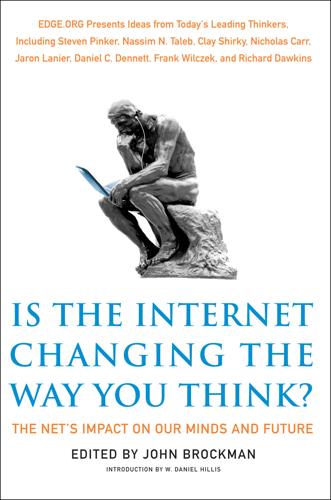
Is the Internet Changing the Way You Think?: The Net's Impact on Our Minds and Future
by
John Brockman
Published 18 Jan 2011
So it is very hard for me to take the “Woe is us, we’re growing stupid and collectivized like sheep” narrative seriously. If you feel yourself growing ovine, bleat for yourself. I get the sense that many writers on these issues aren’t much bothered by the unfocusing, de-liberating effects of joining the hive mind. Don Tapscott has suggested that the instant availability of information means we don’t have to memorize anything anymore—just consult Google and Wikipedia, the brains of the hive mind. Clay Shirky seems to believe that in the future we will be enculturated not by reading dusty old books but in something like online fora, plugged into the ephemera of a group mind, as it were. But surely, if we were to act as either of these college teachers recommend, we’d become a bunch of ignoramuses.
…
The math surely changed how I think about the world. But did it change the way I think? Did it change my brain? The answer is mostly no. To be clear, the Internet is assuredly changing quite a few things related to cognition and social interaction. One widely appreciated and important example of both is the way the Internet facilitates hive-mind phenomena, like Wikipedia, that integrate the altruistic impulses and the knowledge of thousands of far-flung individuals. To the extent that I participate in such things (and I do), my thinking and I are both affected by the Internet. But most thinking serves social ends. A strong indicator of this fact is that the intellectual content of most conversation is trivial, and it certainly is not focused on complex ideas about philosophy or mathematics.
…
But the progressivist position on the importance of learning facts and training individual judgment withers under scrutiny, and, pace Tapscott and Shirky, events of the last decade have not made it more durable. In sum, there are two basic issues here. Do we have any choice about ceding control of the self to an increasingly compelling hive mind? Yes. And should we cede such control, or instead strive, temperately, to develop our own minds very well and direct our own attention carefully? The answer, I think, is obvious. Acknowledgments I wish to thank Peter Hubbard of HarperCollins for his encouragement. I am also indebted to my agent, Max Brockman, who saw the potential for this book, and to Sara Lippincott for her thoughtful and meticulous editing.
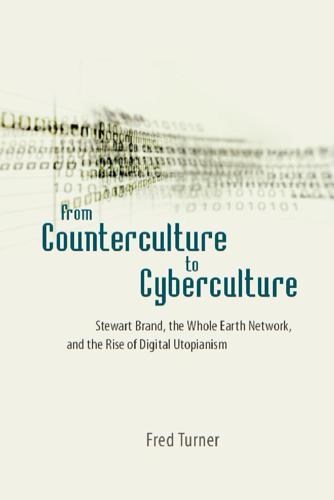
From Counterculture to Cyberculture: Stewart Brand, the Whole Earth Network, and the Rise of Digital Utopianism
by
Fred Turner
Published 31 Aug 2006
Moreover, Kelly preceded this story by the account of his neighbor’s bees and followed it with a discussion of yet another “hive mind,” in an anthill. For all its technological advancement, this ordering suggested, the computer was in fact deeply in accord with natural principles. Like the geodesic domes and camping gear favored by the New Communalists, the computer had in fact helped its users integrate their lives more closely with the “laws” of nature. The new hive mind represented the sort of world-saving social revolution that many New Communalists had hoped to spark. According to Kelly, the Pong game, the bee swarm, and the anthill were all examples of “parallel operating wholes.”
…
Kelly even went so far as to suggest that “a short-hand synopsis of Out of Control would be to say it Networking the New Economy [ 201 ] is an update on the current state of cybernetic research.” On the other hand, in keeping with Kelly’s Whole Earth background, the book linked that research to a New Communalist social ideal. For instance, Kelly devoted an early chapter to a phenomenon that he called “hive mind.” The chapter opened with a discussion of bees and beekeeping, in which Kelly described the hives he kept outside his house as single, collective organisms. The scene then shifted to the backyard of Kelly’s friend and fellow beekeeper Mark Thompson. One day, Thompson saw a bee swarm forming up: “Mark didn’t waver.
…
It is a technological, mathematical, informational, and biological process rolled into one.”61 Soon after the book was released, it became a well of symbolic resources for corporate executives looking to understand the technological and [ 204 ] Chapter 6 economic context in which they worked. Reviewers repeatedly took up Kelly’s hive-mind analogies and applied them to the New Economy.62 In 1994, for instance, a reviewer for the august Harvard Business Review argued that Kelly’s “image of 5,000 passengers copiloting a jet neatly captures the promise of work and organization in the New Economy. In the ‘company’ created by Carpenter, everyone makes his or her own decisions, everyone has fun—and the enterprise doesn’t crash and burn.

12 Bytes: How We Got Here. Where We Might Go Next
by
Jeanette Winterson
Published 15 Mar 2021
He believed that day would come sooner than it has done – he suggested the year 2000 – but he was sure that a machine could display human-level interpersonal skills. Minsky credited his own enthusiasm for developing an AI system that can think for itself to Turing’s 1950 paper Computing Machinery and Intelligence. Read it now, and to me the most interesting part of a fascinating paper that includes telepathy and hive-mind networking is what Turing called Lady Lovelace’s Objection – replying directly to the dead genius who 100 years earlier had concluded that Babbage’s Analytical Engine, while being theoretically able to write novels and compose music (a big insight in 1843!) would not be capable of originating anything.
…
Personally, I hope that advances in artificial intelligence happen before wars, climate breakdown and social collapse throw us backwards towards basic survival, and away from our future. Being the smartest ape hasn’t saved us – perhaps because we are too muddled as a species, too unable to manage the predator part of our evolutionary inheritance. Domination isn’t the answer. Compassion and co-operation are our best chance now. AGI will be a linked system, working on a hive-mind principle but without the drone-like implications of the hive. Co-operation, mutual learning, skill-sharing, resource-sharing, could be what happens next here at Project Human. I don’t believe that compassion is only a human trait, and neither do billions of humans – dead and alive – because it is what a creator-god is said to feel for ‘his’ creation.
…
We know the hero narrative – it’s the saviour, the genius, the strong man, the against-the-odds little guy (and sometimes girl, as in the smash Netflix hit The Queen’s Gambit). As a story, the narrative of exceptionalism stands against collaboration and co-operation (I did it my way). And it overlooks the lives, and contributions, of literally billions of people. One of the interesting things about AI is that it works best on the hive-mind principle, where networks share information. The real sharing economy is not one where everything can be monetised by Big Tech; it’s one where humanity is pulling together – that’s exactly what we have to do to manage both climate breakdown and global inequality. The biggest problems facing us now will not be solved by competition but by co-operation.

Smarter Than You Think: How Technology Is Changing Our Minds for the Better
by
Clive Thompson
Published 11 Sep 2013
This is what culture actually looks like: a process of argument, of dissenting and accreting opinion, of gradual and not always correct codification.” Public thinking is messy, but so is knowledge. I’m not suggesting here, as have some digital utopians (and dystopians), that traditional “expert” forms of thinking and publishing are obsolete, and that expertise will corrode as the howling hive mind takes over. Quite the opposite. I work in print journalism, and now in print books, because the “typographical fixity” of paper—to use Elizabeth Eisenstein’s lovely phrase—is a superb tool for focusing the mind. Constraints can impose creativity and rigor. When I have only six hundred words in a magazine column to make my point, I’m forced to make decisions about what I’m willing to commit to print.
…
Or even watch how smart individuals do it—the ones who cultivate broad, diverse networks of friends or followers online. The potential of collective thinking is only going to grow. Each new tool for expression, each new vehicle for talking to one another, opens up new potential forums for collaboration. Some regard this as alarming: Critics have complained that the online “hive mind” is dehumanizing. And it’s true that thinking of people as bees in a hive, devoid of agency, is rather depressing. But this is precisely why the hive metaphor isn’t all that accurate. Humans are not ants, as the philosopher Pierre Lévy noted in his 1994 book Collective Intelligence. We participate in larger groupings when there’s something there that enhances our individual humanity.
…
most players use crowdsourced documents sparingly: Mia Consalvo, Cheating: Gaining Advantage in Videogames (Cambridge, MA: MIT Press, 2009); and a personal interview with the author. This writing draws on previous reporting I’ve done on Consalvo’s work, specifically “Clive Thompson on Puzzles and the Hive Mind,” Wired, April 2009, accessed March 24, 2013, www.wired.com/techbiz/people/magazine/17-05/st_thompson, and “What Type of Game Cheater Are You?” Wired, April 23, 2007, accessed March 24, 2013, www.wired.com/gaming/virtualworlds/commentary/games/2007/04/gamesfrontiers_0423. According to one estimate in 2008: Barb Dybwad, “SXSW08: How Gamers Are Adopting the Wiki Way,” Massively by Joystiq, March 8, 2008, accessed March 24, 2013, massively.joystiq.com/2008/03/08/sxsw08-how-gamers-are-adopting-the-wiki-way/.

Taming the Sun: Innovations to Harness Solar Energy and Power the Planet
by
Varun Sivaram
Published 2 Mar 2018
In addition to being economically favorable, these installations—equipped with smart inverters—are an ideal size to help stabilize the grid.39 Finally, a smarter, market-driven decentralized grid also could make it easier to deal with the unreliability of solar PV installations—be they big, small, or Goldilocks-sized. Such a grid could modulate customer demand so that it matches up with fluctuating solar output. This demand-side solution to the problem of solar’s intermittent supply is what we turn to next. A Grid Hive Mind Each January, while the world’s most powerful business and political leaders hobnob at the World Economic Forum, leaders of the North American energy industry meet in Vail, Colorado, for the “Davos of Energy.” Just as Davos has increasingly shined a spotlight on clean energy and climate change, so too has the Vail crowd expanded beyond just the oil and gas industry.
…
Autonomous software algorithms at the local level could speedily coordinate the functioning of distributed energy resources to match up local supply and demand and respond to the coarse signals sent from the central utility. This might resemble an ant colony, in which decision-making is decentralized but manages to advance the goals of the entire collective.47 What could the grid’s new hive mind mean for solar power? One exciting prospect is the emergence of virtual power plants. If distributed energy resources all over the grid could act in concert, their collective effect could be the ideal complement to solar’s intermittency. For example, batteries might absorb energy as surplus solar power floods the grid.
…
And combining the best features of centralized and distributed grids could integrate even more solar power. Expanding a centralized grid—possibly culminating in a supergrid—would smooth out solar output through geographical aggregation and also connect faraway solar supplies with the needs of power-hungry cities. Meanwhile, the demand response capability that could emerge from a decentralized grid’s hive mind would complement the supergrid’s activities, adjusting demand in response to variable solar supply. Back at Microsoft, engineers are working to bridge the gap between the supergrid and distributed-grid strategies by combining virtual power plants with virtual transmission lines. Their idea is to swap out electrical HVDC transmission lines for much cheaper optical fibers that could create a different kind of supergrid.
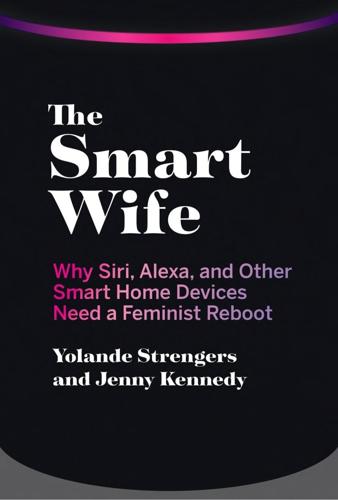
The Smart Wife: Why Siri, Alexa, and Other Smart Home Devices Need a Feminist Reboot
by
Yolande Strengers
and
Jenny Kennedy
Published 14 Apr 2020
The New Borg Kings As noted in the introduction to this chapter, Alexa was inspired by the voice system software on the Starship Enterprise, from the space opera media franchise Star Trek. But what if Alexa’s fate resides in a different part of the Star Trek universe—specifically, a technological species from the distant Delta Quadrant known as “the Borg”? The Borg make up a colonizing cybernetic race linked by a “hive mind” of all the species that they have “assimilated,” often through violent acts of terror (figure 4.4). Borg “drones” are both male and female, and occasionally even children. They are recurring antagonists in the Star Trek series, where they continually threaten to assimilate crew members and remove their individuality by adding them to the Borg collective (in these threats, they sometimes succeed).
…
Figure 4.4 The Borg queen. Source: Star Trek: First Contact The Borg share some surprisingly similar traits with smart wives and the companies that deploy them. They are both interested in building a technological society controlled by a centralized entity that delivers all our needs. The smart wife’s hive mind rests in the open-source tools and community skill development (like the Alexa Skills Kit), user-generated data, machine learning, and “cloud superpowers”—all necessary underpinnings of products like Alexa. As Crawford and Joler observe, these processes and tools give rise to the false idea of the democratization of AI.114 But rather than being democratic women, smart wife “drones” are designed, made, and controlled by the few in order to expand the capitalist empire in which Silicon Valley’s CEOs are the new Borg kings—assimilating global knowledge, and expanding their reach and scope across the world.
…
Instead, many of us head to the nearest electronics shop, pay money for her services, and welcome her into our inner worlds—or rather, those of us who are privileged enough to be able to afford her, and have a secure home with electricity and internet connectivity. Don’t get us wrong; we’re not saying that this is an unreasonable response. After all, to the best of our knowledge, Alexa doesn’t plan to inject us with hive mind serum that connects us to the collective and involuntarily implants our bodies with microchips (but keep your eye out for the next upgrade). Like other smart wives, she comes to us as a nonthreatening new “species” capable of providing all manner of earthly pleasures optimized toward our specific desires.
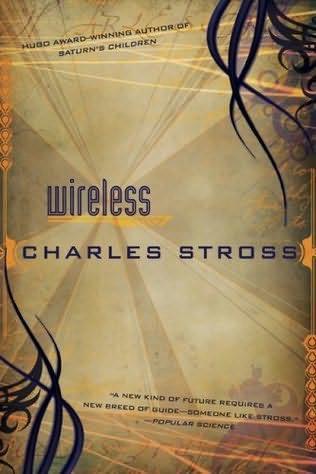
Wireless
by
Charles Stross
Published 7 Jul 2009
Alternatively, could someone else have become you? What set of circumstances combine to produce an astronomer and exobiologist? Why should a God not harbor the same curiosity?” “So you’re saying it’s introspection, with a purpose. The galactic civilization wants to see its own birth.” “The galactic hive mind,” Gregor soothes, amused at how easy it is to deal with Sagan. “Remember, information is key. Why should human-level intelligences be the highest level?” All the while he continues to breathe oxytocin and other peptide neurotransmitters across the table toward Sagan. “Don’t let such speculations ruin your meal,” he adds, phrasing it as an observation rather than an implicit command.
…
The next version of him will be created knowing almost everything: the struggle to contain the annoying, hard-to-domesticate primates with their insistent paranoid individualism, the dismay of having to carefully sterilize the few enlightened ones like Sagan . . . Humans are not useful. The future belongs to ensemble intelligences, hive minds. Even the mock-termite aboriginals have more to contribute. And Gregor, with his teratomas and his shortage of limbs, has more to contribute than most. The culture that sent him, and a million other anthropomorphic infiltrators, understands this well: he will be rewarded and propagated, his genome and memeome preserved by the collective even as it systematically eliminates yet another outbreak of humanity.
…
But it’s also true to say that this story won’t make a lot of sense without certain intimate understandings—a nod’s as good as a wink to a deaf hedgehog and all that—and in any event, ever since the minutiae of my personal affairs became part of the public gossip circuit following the unfortunate affair involving the clankie dominatrix, the cat burglar, and the alien hive mind, it would be somewhat hypocritical of me to stand upon my privacy. So where a more modest cove might hesitate, please allow me to step in it and, at risk of offending your sensibilities, explain something about my complex relationship with Laura. I rather fancy that life must have been much simpler back in the days of classical Anglo-American civilization, when there were only two openly acknowledged genders and people didn’t worry about whether their intimate affairs were commutative, transitive, or reflexive.

The Hacker and the State: Cyber Attacks and the New Normal of Geopolitics
by
Ben Buchanan
Published 25 Feb 2020
Versions landing on internet-connected computers sent their information back to Stuxnet’s creators in messages disguised to look like visits to innocuous soccer websites.14 Thus, the list of machines the operation had infected across Iran was constantly updated, and the data it had collected steadily accumulated. The worm had a strange sort of hive mind. No doubt, this talk of newfangled cyber sabotage, secret infections, and hive minds would have worried any lawyer. In national security, at least in the West, lawyers are ever-present, and the Stuxnet operation was no exception. At key moments, these attorneys raised concerns about unintended consequences—and rightly so. While the Stuxnet code tried to stay mostly contained within a fairly narrow set of targets, its worm-like nature made it far harder to control than other sophisticated cyber operations tools.15 Throughout the development and testing process, Stuxnet’s creators added a series of target verification checks, using information acquired from earlier reconnaissance.
…
See also Chinese hackers; cyber operations; Shadow Brokers hacking operations: flexibility of, 306; goals of, 189; process of, 307. See also cyber operations Hamre, John, 318 harm, latent, 310–311 Havex, 198 Hayden, Michael, 25, 38, 50, 82, 165, 301 history, home-field advantage and, 16–18 Hitler, Adolf, 108 hive minds, 135 home-field advantage, 13–39; access to data from internet firms, 15–16; American corporations and, 15–16; AT&T’s partnership with NSA, 20–24; China’s efforts to undermine, 90–91; China’s lack of, 88; embassies / consulates and, 33; in friendly countries, 28–33; in Greece, 28–30, 31; impact of, 16; importance of, 27; informing senior policymakers and, 27; overseas, 28–35; secrecy and, 16; spying on UN and, 21–22; telecommunications companies during World War II, 24; telecommunications hubs and, 16–19.

Better Living Through Criticism: How to Think About Art, Pleasure, Beauty, and Truth
by
A. O. Scott
Published 9 Feb 2016
Who told us to look at this picture?—can now be supplied with the happiest possible answer. We did! Those ever-proliferating lists of the essential books to read, movies to see, albums to download, and places to go are the result of our collective activity. We vote online or at the box office, and our hive-mind tendencies are collated and packaged and fed back to us. If they are to survive—if they are to remain relevant instead of fading and crumbling—venerable institutions like museums, symphony orchestras, opera companies, and theaters will have to pander. The Louvre may be a palace, a relic, an archive, and a bazaar, but it is also, and maybe preeminently, a brand.
…
Since that phrase is always pejorative—who wants to be an apostle of the obvious, or a mouthpiece for the ordinary?—it is generally preferable to invoke more obviously democratic values and speak of the wisdom of the crowd, plain old common sense, or, in the current jargon of evolutionary psychology and social media, the genius of the hive mind. Fifty thousand Elvis fans can’t be wrong! While no critic is entirely comfortable standing on popularity as the sole or primary determinant of value, very few can avoid relying on it in a pinch. Art is tested in the public arena, after all, and one way of scoring the game is through quantitative measures: box office returns, weeks on the best-seller list, rank on the pop charts.

An Elegant Puzzle: Systems of Engineering Management
by
Will Larson
Published 19 May 2019
Operating in direct conflict with authority usually doesn’t end very well. 3.12 Scaling consistency: designing centralized decision-making groups In small organizations, it’s easy for individuals to be aware of what others are doing and to remember how they’ve previously approached similar problems. This hive mind and memory create decision-making whose consistency correlates strongly with quality. As organizations grow, there is a subtle slide into inconsistency, which is often one of the most challenging aspects of evolving from a small team into a much larger one. There are many different approaches to try to manage inconsistency creep.
…
Something that has stuck with me from my front-end experience was feeling treated as a second-tier engineer: coworkers were unwilling to do any front-end work, but were careful to categorize it as trivial.14 The following decade has seen radical improvements in browser compatibility and JavaScript tooling, and today’s front-end engineers occupy an esteemed position in the hive mind’s subtle hierarchy of roles. While nodes have swapped positions, the hierarchy of roles remains alive and well, which is at its clearest when someone proposes creating a job description15 or career ladder16 for a new role. Most recently, the question of whether to create a dedicated career ladder for site reliability engineers17 has been on my mind.

Galactic North
by
Alastair Reynolds
Published 14 Feb 2006
“I was just hoping you might have some clue as to why Galiana keeps wasting valuable lives with escape attempts.” Voi shrugged. “Maybe to her the lives aren’t anywhere near as valuable as you’d like to think.” “Do you honestly think that?” “I don’t think we can begin to guess the thinking of a true hive-mind society, Clavain. Even from a Demarchist standpoint.” There was a chirp from the console; Galiana signaling them. Clavain opened the channel allocated for Coalition-Conjoiner diplomacy. “Nevil Clavain?” he heard. “Yes.” He tried to sound as calm as possible. “I’m with Sandra Voi. We’re ready to land as soon as you show us where.”
…
Galiana was their leader only inasmuch as she had founded the lab here from which the original experiment had sprung and was accorded some respect deriving from seniority. She was also the most obvious spokesperson among them. They all had areas of expertise which could not be easily shared among other Conjoined; very distinct from the hive-mind of identical clones which still figured in the Coalition’s propaganda. If the nest was in any way like an ant colony, then it was an ant colony in which every ant fulfilled a distinct role from all the others. Naturally, no individual could be solely entrusted with a particular skill essential to the nest—that would have been dangerous over-specialization—but neither had individuality been completely subsumed into the group mind.
…
He'd had this conversation so many times before, with so many women. He had been married to some of them. It was oddly comforting to be having it again, light-years from home, wearing a new body, his mind clotted with machines and confronting the matriarch of what should have been a feared and hated hive-mind. At the epicenter of so much strangeness, a tiff was almost to be welcomed. “I just don't want anything to hurt her.” “Oh. And I do?” “Never mind,” he said, gritting his teeth. “Let's just get in and out, shall we?” The base, like all the American structures, had been built for posterity. Not by people, however, but by swarms of diligent self-replicating robots.

Hacker, Hoaxer, Whistleblower, Spy: The Story of Anonymous
by
Gabriella Coleman
Published 4 Nov 2014
By considering this tactic historically, we can plainly see that DDoSing is nothing new—virtually every movement advocating social change in the past two hundred years (from abolitionists to ACT UP) has relied on large scale, rowdy, disruptive tactics to draw attention and demand change.24 The novelty lay in how the availability of a software tool, LOIC, and an Anonymous hype machine publicizing its existence, enabled such sizable and disruptive demonstrations to take root and unfold nearly spontaneously on the Internet. In a detailed analysis of the tool’s features, Molly Sauter convincingly argues that the “Hive Mind mode” helped secure the hefty numbers: “Although Anons may not have ‘hit the streets’ as EDT envisioned Hive Mind mode did enable them to go to school, work, sleep, or anywhere while still participating in DDOS actions as they arose.”25 But even if DDoS simply extends a longer tradition of disruptive activism, it still sat uneasily with many Anons and hackers—even those who had no issue with law breaking.
…
As the events unfolded, the recently christened #OpEgypt public channel was awash in excitement and horror (pseudonyms have been changed): WebA18: yes, they censor twitter in egypt WebA18: and they are trying to censure facebook 0n: cell phones too t23: not being in egypt i cannot confirm 100% 0n: PANIC TIME t23: but is known tactic WebA18: a friend in egypt is telling me they censor it eb: Ps, if it is enarby, consider demonstrating at the egyptian embassy Ion: JOIN #propaganda TO CREATE & DESIGN MATERIAL FOR #opegypt jeb: to get media attention and support our egyptian /b/rothers […]WebA18: thanks! mib: The protests are spreading and becoming bigger bi: Egyptians have balls of steel. GO Go GO! pi: is there a hive mind i have to get to work ? mib: we should not stop untill this regimes fallsAlgeria: translation: Gov blocked the cell phones b: Spread that POSTER to RECRUIT more people: http://i.imgur.com/LfLhN.png What had at first been a sporadic flicker of government-initiated communication disruptions became wholesale on January 28.
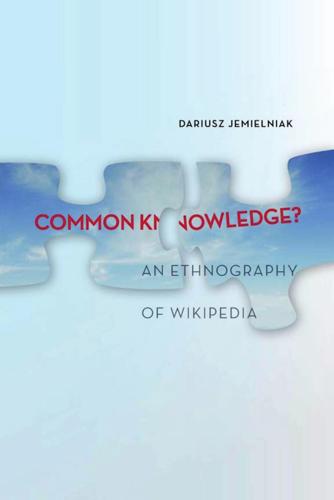
Common Knowledge?: An Ethnography of Wikipedia
by
Dariusz Jemielniak
Published 13 May 2014
Are open-collaboration communities the avant-garde of a movement liberating society from a neoliberal regime or the prelude to totalitarian and ideological control? Additionally, I discuss the future of the Wikimedia community. Hive Minds, Schmucks, Losers, and Other Misconceptions About Wikipedia Some say that the contemporary Internet in general, and Wikipedia in particular, promotes amateurs and everyday Joes—that Wikipedia’s “hive mind mentality” and “digital Maoism” suppress human intelligence and dilute individual judgments and tastes (Lanier, 2006). Andrew Keen, the author of the ominously titled The Cult of the Amateur: How Today’s Internet Is Killing Our Culture (2007), even states in an interview that no normal person would give away labor for free and anonymously and that “only schmucks would do that.
…
See Gdańsk/Danzig edit war gift-economy principle, 56, 230n7 global development work (Wikimedia), 130 global locks, 40 Godwin, Mike, 231n6 going native, 193–194, 227n2 (intro) Goldman, Eric, 185 good-article designation, 24 “good enough” quality, 122 Good Samaritans, 88 Google, 172, 189, 191 Gorman, Michael, 1 governance tensions, 149–150 Grandmaster Editor (Lord High Togneme Vicarus), 26 grant recommendations and FDC, 132 Grognard Extraordinaire (Yeoman Editor), 26 growth rate of Wikipedia, 13 Habermas, Jürgen, 186 hackers/hacker culture, 187–188; antielitism of, 30–31, 96, 124; and cabal concept, 50; compared to guild, 101; “copyleft” philosophy, 2; Debian, 187; sociability of, 23, 187 Halfaker, Aaron, 89 Halibutt (user), 73 Hayat, Tsahi, 84 Herbythyme (admin, checkuser), 168 Hergueux, Jérôme, 138 heterarchy, 151 hierarchical, Wikipedia as, 6, 56–57 Hilbert, Martin, 188 Himanen, Pekka, 187 Hine, Christine, 200 “hive mind mentality,” 182 hoaxes, 38, 228nn7–8 hobby versus worker exploitation, 189 Ho Chi Minh, 162 homeopathy, 21 Homopedia, 5 honesty rule, 117 The Human Stain (Roth), 21 humility as social obligation, 31 humor and inside jokes, 24 identity work, 27–28 ideology as motive, 188–191 “idiosyncrasy credit,” 177 “ignore all rules” policy, 96, 179 illustrating a point (POINT) rule, 20 image building through user pages, 27–28 image filtering.

What to Think About Machines That Think: Today's Leading Thinkers on the Age of Machine Intelligence
by
John Brockman
Published 5 Oct 2015
EVERETT The Airbus and the Eagle DOUGLAS COUPLAND Humanness JOSH BONGARD Manipulators and Manipulanda ZIYAD MARAR Are We Thinking More Like Machines? BRIAN ENO Just a New Fractal Detail in the Big Picture MARTI HEARST eGaia, a Distributed Technical-Social Mental System CHRIS ANDERSON The Hive Mind ALEX (SANDY) PENTLAND The Global Artificial Intelligence Is Here RANDOLPH NESSE Will Computers Become Like Thinking, Talking Dogs? RICHARD E. NISBETT Thinking Machines and Ennui SAMUEL ARBESMAN Naches from Our Machines GERALD SMALLBERG No Shared Theory of Mind ELDAR SHAFIR Blind to the Core of Human Experience CHRISTOPHER CHABRIS An Intuitive Theory of Machine URSULA MARTIN Thinking Saltmarshes KURT GRAY Killer Thinking Machines Keep Our Conscience Clean BRUCE SCHNEIER When Thinking Machines Break the Law REBECCA MACKINNON Electric Brains GERD GIGERENZER Robodoctors ALISON GOPNIK Can Machines Ever Be As Smart As Three-Year-Olds?
…
But eGaia is already partly here, at least in the developed world. This distributed nerve-center network, an interplay among the minds of people and their monitoring electronics, will give rise to a distributed technical-social mental system the likes of which has not been experienced before. THE HIVE MIND CHRIS ANDERSON Curator, TED conferences, TED talks Thinking is our superpower. We’re not the strongest, fastest, largest, or hardiest species. But we can model the future and act intentionally to realize the future we model. Somehow it’s this power, not the ability to fly high, dive deep, roar loudly, or produce millions of babies, which has allowed its lucky recipients to visibly (as in literally visible from space) take over the planet.
…
I flick it open and instantly I’m connected to 100 million other minds and machines around the world. I then spend forty-five minutes responding to its irresistible invitations. I initiate this process of my own free will. But then I surrender much of my will to the machine. So do you. Together we’re semiunconsciously creating a hive mind of vastly greater power than this planet has ever seen—and vastly less power than it will soon see. “Us versus the machines” is the wrong mental model. There’s only one machine that really counts. Like it or not, we’re all—us and our machines—becoming part of it: an immense connected brain. Once we had neurons.
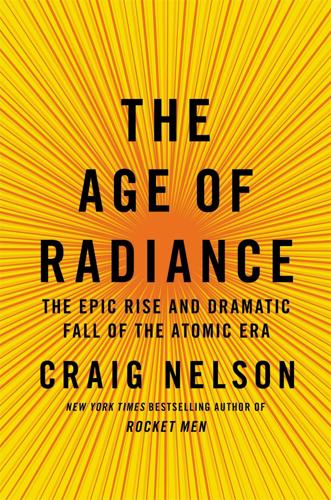
The Age of Radiance: The Epic Rise and Dramatic Fall of the Atomic Era
by
Craig Nelson
Published 25 Mar 2014
The method used by modern science, especially within a focused group such as this—sending details of experiments and results to each other, publishing findings as soon as possible, colluding and at the same time rapaciously competing to be first with a groundbreaking discovery—would in the web argot of the next century be called hive mind, a collective effort of human brainpower that would create far more than any one person or team could achieve alone. Scientists have been hive-minding, it turns out, since the Royal Academy began publishing during the Enlightenment. By the end of 1935, however, the ragazzi Corbino were undone, with Rasetti at Columbia, Segrè at Palermo, Pontecorvo in France, and the atmosphere in Italy relentlessly gloomy as the country prepared for war in Ethiopia and the limitations brought by globally imposed sanctions.
…
Beginning in 1923, Leo regularly dropped by for visits at the world’s premier scientific research facility, the Kaiser Wilhelm Institute, where he interrupted the scientists in their labs to ask questions, often explaining why they were wrong, and suggesting entirely new avenues for them to pursue. Besides his lack of professional courtesy, Leo was widely disliked by fellow scientists for his vigor and speed in applying for patents, which he thought was his only course of guaranteeing an income, but which many found selfish and contrary to the hive-mind keystone of the modern scientific method. He was obnoxious, rude, haughty, and staggeringly offensive, yet so often right and inspiring that he was made a Generaldirektor, teaching nuclear physics and chemistry with Germany’s Marie Curie, Lise Meitner. In 1925, he was promoted to the choice spot of being von Laue’s assistant—Max von Laue had won his Nobel for showing how X-rays could be focused with crystals.
…
Beginning at the start of the Enlightenment in the seventeenth century with the Journal des sçavans and Philosophical Transactions of the Royal Society, publishing scientific findings became a method of announcing one’s achievements, expanding the understanding of the natural world, contributing to the public good, and, of course, competing with your professional colleagues—the highway of hive mind. Szilard’s insistence that scientists should not publish was such a shocking and contrary notion that a number of physicists in 1939 couldn’t comprehend it. I. I. Rabi even took Szilard aside to warn that, by promoting such a bizarre notion, his guest status at Columbia was in danger. Bohr thought there was little future in atomic bombs since it was so difficult to produce the needed U-235 isotope that was known to be an effective source for a chain reaction and so didn’t feel this remote possibility meant upending a three-hundred-year scientific tradition of free discourse, even if it involved Hitler.

Thinking Machines: The Inside Story of Artificial Intelligence and Our Race to Build the Future
by
Luke Dormehl
Published 10 Aug 2016
We have learned a lot in 2,000 years, yet much ancient wisdom still seems sound – which makes me suspect that we haven’t been making much progress. We still don’t know how to deal with conflicts between individual goals and global interests. We are so bad at making important decisions that, whenever we can, we leave to chance what we are unsure about. The idea of creating a ‘hive mind’ of sorts captured the zeitgeist at a time when the Internet was just taking off. But Minsky didn’t simply want to save information and make it available for future generations. He wanted to be around to see it. ‘Eventually we will entirely replace our brains using nanotechnology,’ he wrote. ‘Once delivered from the limitations of biology, we will be able to decide the length of our lives – with the option of immortality – and choose among other, unimagined capabilities as well.’
…
To find a specific word or phrase from the index, please use the search feature of your ebook reader. 2001: A Space Odyssey (1968) 2, 228, 242–4 2045 Initiative 217 accountability issues 240–4, 246–8 Active Citizen 120–2 Adams, Douglas 249 Advanced Research Projects Agency (ARPA) 19–20, 33 Affectiva 131 Age of Industry 6 Age of Information 6 agriculture 150–1, 183 AI Winters 27, 33 airlines, driverless 144 algebra 20 algorithms 16–17, 59, 67, 85, 87, 88, 145, 158–9, 168, 173, 175–6, 183–4, 186, 215, 226, 232, 236 evolutionary 182–3, 186–8 facial recognition 10–11, 61–3 genetic 184, 232, 237, 257 see also back-propagation AliveCor 87 AlphaGo (AI Go player) 255 Amazon 153, 154, 198, 236 Amy (AI assistant) 116 ANALOGY program 20 Analytical Engine 185 Android 59, 114, 125 animation 168–9 Antabi, Bandar 77–9 antennae 182, 183–5 Apple 6, 35, 56, 65, 90–1, 108, 110–11, 113–14, 118–19, 126–8, 131–2, 148–9, 158, 181, 236, 238–9, 242 Apple iPhone 108, 113, 181 Apple Music 158–9 Apple Watch 66, 199 architecture 186 Artificial Artificial Intelligence (AAI) 153, 157 Artificial General Intelligence (AGI) 226, 230–4, 239–40, 254 Artificial Intelligence (AI) 2 authentic 31 development problems 23–9, 32–3 Good Old-Fashioned (Symbolic) 22, 27, 29, 34, 36, 37, 39, 45, 49–52, 54, 60, 225 history of 5–34 Logical Artificial Intelligence 246–7 naming of 19 Narrow/Weak 225–6, 231 new 35–63 strong 232 artificial stupidity 234–7 ‘artisan economy’ 159–61 Asimov, Isaac 227, 245, 248 Athlone Industries 242 Atteberry, Kevan J. 112 Automated Land Vehicle in a Neural Network (ALVINN) 54–5 automation 141, 144–5, 150, 159 avatars 117, 193–4, 196–7, 201–2 Babbage, Charles 185 back-propagation 50–3, 57, 63 Bainbridge, William Sims 200–1, 202, 207 banking 88 BeClose smart sensor system 86 Bell Communications 201 big business 31, 94–6 biometrics 77–82, 199 black boxes 237–40 Bletchley Park 14–15, 227 BMW 128 body, machine analogy 15 Bostrom, Nick 235, 237–8 BP 94–95 brain 22, 38, 207–16, 219 Brain Preservation Foundation 219 Brain Research Through Advanced Innovative Neurotechnologies 215–16 brain-like algorithms 226 brain-machine interfaces 211–12 Breakout (video game) 35, 36 Brin, Sergey 6–7, 34, 220, 231 Bringsjord, Selmer 246–7 Caenorhabditis elegans 209–10, 233 calculus 20 call centres 127 Campbell, Joseph 25–6 ‘capitalisation effect’ 151 cars, self-driving 53–56, 90, 143, 149–50, 247–8 catering 62, 189–92 chatterbots 102–8, 129 Chef Watson 189–92 chemistry 30 chess 1, 26, 28, 35, 137, 138–9, 152–3, 177, 225 Cheyer, Adam 109–10 ‘Chinese Room, the’ 24–6 cities 89–91, 96 ‘clever programming’ 31 Clippy (AI assistant) 111–12 clocks, self-regulating 71–2 cognicity 68–9 Cognitive Assistant that Learns and Organises (CALO) 112 cognitive psychology 12–13 Componium 174, 176 computer logic 8, 10–11 Computer Science and Artificial Intelligence Laboratory (CSAIL) 96–7 Computer-Generated Imagery (CGI) 168, 175, 177 computers, history of 12–17 connectionists 53–6 connectomes 209–10 consciousness 220–1, 232–3, 249–51 contact lenses, smart 92 Cook, Diane 84–6 Cook, Tim 91, 179–80 Cortana (AI assistant) 114, 118–19 creativity 163–92, 228 crime 96–7 curiosity 186 Cyber-Human Systems 200 cybernetics 71–4 Dartmouth conference 1956 17–18, 19, 253 data 56–7, 199 ownership 156–7 unlabelled 57 death 193–8, 200–1, 206 Deep Blue 137, 138–9, 177 Deep Knowledge Ventures 145 Deep Learning 11–12, 56–63, 96–7, 164, 225 Deep QA 138 DeepMind 35–7, 223, 224, 245–6, 255 Defense Advanced Research Projects Agency (DARPA) 33, 112 Defense Department 19, 27–8 DENDRAL (expert system) 29–31 Descartes, René 249–50 Dextro 61 DiGiorgio, Rocco 234–5 Digital Equipment Corporation (DEC) 31 Digital Reasoning 208–9 ‘Digital Sweatshops’ 154 Dipmeter Advisor (expert system) 31 ‘do engines’ 110, 116 Dungeons and Dragons Online (video game) 197 e-discovery firms 145 eDemocracy 120–1 education 160–2 elderly people 84–6, 88, 130–1, 160 electricity 68–9 Electronic Numeric Integrator and Calculator (ENIAC) 12, 13, 92 ELIZA programme 129–30 Elmer and Elsie (robots) 74–5 email filters 88 employment 139–50, 150–62, 163, 225, 238–9, 255 eNeighbor 86 engineering 182, 183–5 Enigma machine 14–15 Eterni.me 193–7 ethical issues 244–8 Etsy 161 Eurequa 186 Eve (robot scientist) 187–8 event-driven programming 79–81 executives 145 expert systems 29–33, 47–8, 197–8, 238 Facebook 7, 61–2, 63, 107, 153, 156, 238, 254–5 facial recognition 10–11, 61–3, 131 Federov, Nikolai Fedorovich 204–5 feedback systems 71–4 financial markets 53, 224, 236–7 Fitbit 94–95 Flickr 57 Floridi, Luciano 104–5 food industry 141 Ford 6, 230 Foxbots 149 Foxconn 148–9 fraud detection 88 functional magnetic resonance imaging (fMRI) 211 Furbies 123–5 games theory 100 Gates, Bill 32, 231 generalisation 226 genetic algorithms 184, 232, 237, 257 geometry 20 glial cells 213 Go (game) 255 Good, Irving John 227–8 Google 6–7, 34, 58–60, 67, 90–2, 118, 126, 131, 155–7, 182, 213, 238–9 ‘Big Dog’ 255–6 and DeepMind 35, 245–6, 255 PageRank algorithm 220 Platonic objects 164, 165 Project Wing initiative 144 and self-driving cars 56, 90, 143 Google Books 180–1 Google Brain 61, 63 Google Deep Dream 163–6, 167–8, 184, 186, 257 Google Now 114–16, 125, 132 Google Photos 164 Google Translate 11 Google X (lab) 61 Government Code and Cypher School 14 Grain Marketing Adviser (expert system) 31 Grímsson, Gunnar 120–2 Grothaus, Michael 69, 93 guilds 146 Halo (video game) 114 handwriting recognition 7–8 Hank (AI assistant) 111 Hawking, Stephen 224 Hayworth, Ken 217–21 health-tracking technology 87–8, 92–5 Healthsense 86 Her (film, 2013) 122 Herd, Andy 256–7 Herron, Ron 89–90 High, Rob 190–1 Hinton, Geoff 48–9, 53, 56, 57–61, 63, 233–4 hive minds 207 holograms 217 HomeChat app 132 homes, smart 81–8, 132 Hopfield, John 46–7, 201 Hopfield Nets 46–8 Human Brain Project 215–16 Human Intelligence Tasks (HITs) 153, 154 hypotheses 187–8 IBM 7–11, 136–8, 162, 177, 189–92 ‘IF THEN’ rules 29–31 ‘If-This-Then-That’ rules 79–81 image generation 163–6, 167–8 image recognition 164 imagination 178 immortality 204–7, 217, 220–1 virtual 193–8, 201–4 inferences 97 Infinium Robotics 141 information processing 208 ‘information theory’ 16 Instagram 238 insurance 94–5 Intellicorp 33 intelligence 208 ambient 74 ‘intelligence explosion’ 228 top-down view 22, 25, 246 see also Artificial Intelligence internal combustion engine 140–1, 150–1 Internet 10, 56 disappearance 91 ‘Internet of Things’ 69, 70, 83, 249, 254 invention 174, 178, 179, 182–5, 187–9 Jawbone 78–9, 92–3, 254 Jennings, Ken 133–6, 138–9, 162, 189 Jeopardy!
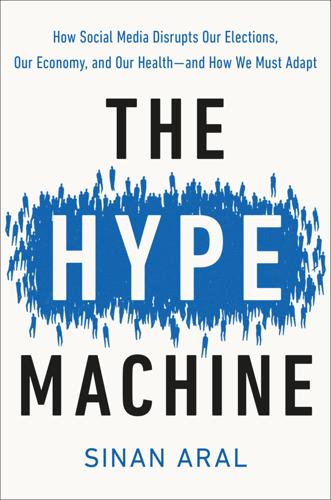
The Hype Machine: How Social Media Disrupts Our Elections, Our Economy, and Our Health--And How We Must Adapt
by
Sinan Aral
Published 14 Sep 2020
The interplay of these three technologies propels three trends that the Hype Machine enables at scale. Hypersocialization wires us into a staggering amount of new digital social signals from our friends, families, and the crowd, connecting our thoughts, behaviors, and actions with those of over 3 billion people in a new hive mind. Personalized mass persuasion creates a new wave of targeted, individually tailored persuasive messaging designed to influence what we buy, how we vote, and even who we love. And the institutionalization of the attention economy keeps us engaged long enough to monetize our attention and create a tyranny of trends.
…
In a blog post, Reddit explained that it made the change to avoid social influence bias and discourage fraud. In 2019, Instagram began hiding likes on its platform for an entirely different reason. How will these policy changes affect society? We’ll soon see. Collective Intelligence in the Shadow of the Hype Machine The Hype Machine is often described as a precursor to the hive mind. Its algorithms, when appropriately applied, can enhance our collective intelligence by rapidly aggregating the opinions of the crowd in smart ways. But when those algorithms bake our collective flaws into crowd behavior, they can derail our predictive capacity and send our collective judgment off the rails.
…
This means, under the right conditions, our increasing interdependence and hypersocialization can be assets for human civilization rather than liabilities. The question now becomes: how can we design this system to harness the power of our collective intelligence and avoid the madness of crowds? We’re like bees adapting our hive mind to the challenges we face. But we are in a far more enviable position because we can actually design the feedback mechanisms and social adaptations that will make us wiser as a species. In the next chapter I will sketch the promise and the peril that lie before us. What does a world where we get this right look like?

Digital Barbarism: A Writer's Manifesto
by
Mark Helprin
Published 19 Apr 2009
From the Amazonblogs (how awkward and hideous a word) comes the following about “the fallacy of intellectual property” and the “hoarding of ideas”: “The sooner we can all get past the ‘idea’ that anyone can own the thoughts, the words, the music, the sooner we can survive the possibly ensuing class war and get down to the business of evolving our eventual hive mind.”96 I trust that the reader need not be reminded that “the dream of the commons” and the “hive mind” are things that do not and cannot exist. Connecting people via the internet will not produce such things anymore than will connecting them via telephone, bringing them together in an auditorium, or publishing newspaper articles or letters to the editor.
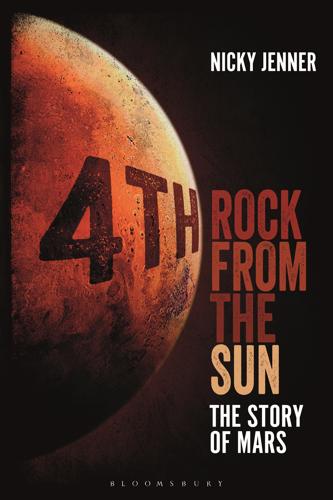
4th Rock From the Sun: The Story of Mars
by
Nicky Jenner
Published 5 Apr 2017
Here, science fiction weighed in and furthered the excitement; authors excitedly penned (and later filmed) stories of a planet filled with aliens – little green men, aggressive robot warriors, thirsty canal-building architects, a civilisation of creepy human replicas, even an invisible collective consciousness or airborne hive mind. We’ve imagined ourselves both desperately trying to get to Mars and experiencing Martians coming to visit us (sometimes with catastrophic consequences). In a way, the word ‘Martian’ has become synonymous with ‘alien’, which would make it all the more significant if we were to find life on Mars.
…
The British television series Doctor Who, for example, drew heavily on the idea of water for their multiple Martian species, some of which were developed in the 1960s (when the possibility of extant and developed Martian life was just about dying out). Despite having an entire fictional universe to play with, Doctor Who has used Mars as a home planet for several different species, namely the Gandorans, the Flood and the Ice Warriors. The Flood was the collective name for a hive-mind virus that existed within and spread through water – the species starred in a Doctor Who special episode set in 2059 (entitled The Waters of Mars), in which it managed to infect the water supply of the appropriately named Bowie Base One colony. The residents of the base were humans that had relocated from Earth; after eating food washed in infected water due to a broken water filter, the residents of the base began showing symptoms including spasms, convulsions, cracked skin, black teeth, icy blue eyes, the ability to survive unscathed on the surface of Mars and – most prominently – a constant flood of water streaming from their skin, hands and mouth.
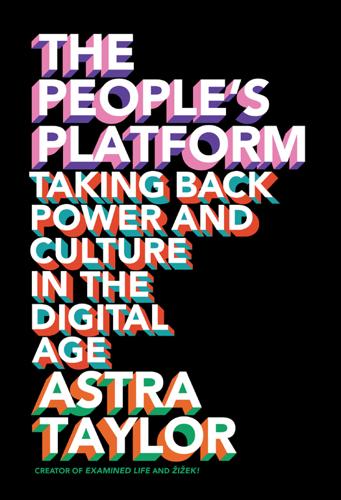
The People's Platform: Taking Back Power and Culture in the Digital Age
by
Astra Taylor
Published 4 Mar 2014
“The professional is being replaced by the amateur, the lexicographer by the layperson, the Harvard professor by the unschooled populace,” according to Andrew Keen, obstinately oblivious to the failings of professionally produced mass culture he defends. The Internet is decried as a province of know-nothing narcissists motivated by a juvenile desire for fame and fortune, a virtual backwater of vulgarity and phoniness. Jaron Lanier, the technologist turned skeptic, has taken aim at what he calls “digital Maoism” and the ascendance of the “hive mind.” Social media, as Lanier sees it, demean rather than elevate us, emphasizing the machine over the human, the crowd over the individual, the partial over the integral. The problem is not just that Web 2.0 erodes professionalism but, more fundamentally, that it threatens originality and autonomy.
…
Why should an essayist have to surrender all rights to a magazine that published his piece or a filmmaker be forced to assign ownership of her creation to a corporate entity? And yet the most vocal critics of these disagreeable practices increasingly share the assumption that artists must forfeit control of their work, only with control going not to executives but to what Jaron Lanier calls the “hive mind.” The problem, though, is that it is not clear how file sharing actually addresses financial improprieties or points the way to an arrangement that’s more equitable: unlike a label or studio, where a percentage of profits trickles back to creators, peer-to-peer sites and online locker services return nothing to artists, though they can be incredibly lucrative for those who run them.28 The Pirate Bay, for example, is bedecked by advertising.
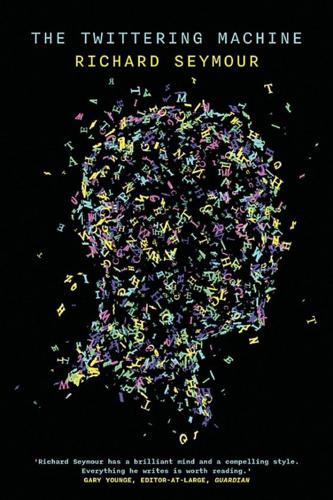
The Twittering Machine
by
Richard Seymour
Published 20 Aug 2019
This is what people like about it, what makes it engaging: it is like texting, but in a public, collective context. Meanwhile, hashtagging and ‘trending topics’ underline the extent to which all of these protocols are organized around the massification of individual voices – a phenomenon cheerfully described by users with the science fiction concept of the ‘hive mind’ – and hype. The regular sweet spot sought after is a brief period of ecstatic collective frenzy around any given topic. It doesn’t particularly matter to the platforms what the frenzy is about: the point is to generate data, one of the most profitable raw materials yet discovered. As in the financial markets, volatility adds value.
…
They were not simply evading surveillance. A troll who gave away personal information, or let slip a private conviction, would risk being trolled by the community. The only way to get by as a troll was to identify fully with the collective, and its value of detachment. The laughter of the individual troll was secondary to that of the hive mind. ‘None of us’, their motto had it, ‘is as cruel as all of us.’ In this sense, trolls appear to be the only social industry users who are genuinely liberated from the constraints of identity, enacting in their perverse way the utopian promise of the internet. The mask they don is not so much an identity as an anti-identity.
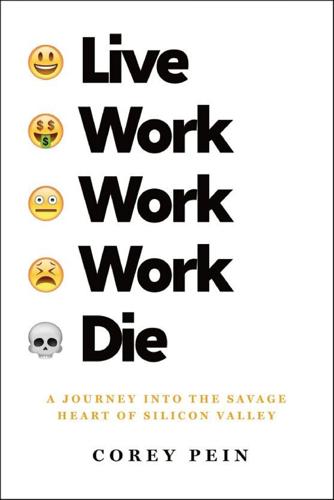
Live Work Work Work Die: A Journey Into the Savage Heart of Silicon Valley
by
Corey Pein
Published 23 Apr 2018
Advances made within military laboratories, corporate research departments, and hacker houses will accelerate until the sheer energy of all that innovation ignites a great spark, at which time all will behold the physical and metaphysical merger of humanity and computers. Then, once there is no more distinction between man and machine, all matter will awaken, bringing about a new era in which the disembodied hive mind of what was once Homo sapiens unifies the cosmos in eternal ecstasy. That’s the idea, anyway. The Singularity is the most popular subset of “transhumanist” thinking, an eclectic set of theories that posit that the human species, by converting its brain power into more and more advanced forms of technology, will one day wrest control of the evolutionary process from nature and simply decide how it will thereafter exist in and interact with the universe.
…
What did it mean that the leaders of a corporation more powerful than most governments were willing to tacitly endorse what Kurzweil called Singularitarianism? Was it not extraordinary that these iconic and influential tech magnates would lend credence to the Kurzweilian prophecy that further human evolution meant an irreversible merger with machines and the sacrifice of our individual biological identities to an immortal hive mind? Was such a thing actually possible? If there was substance to Singularitarianism, then the ascension of Kurzweil at Google would one day be seen as a decisive moment in history, analagous to the Roman emperor Constantine’s conversion to Christianity. And if the Singularity turned out to be nothing more than some lunatic reverie, a daydream for some lifelong science fiction fans who had lucked into tremendous wealth, I still had questions.

Stealing Fire: How Silicon Valley, the Navy SEALs, and Maverick Scientists Are Revolutionizing the Way We Live and Work
by
Steven Kotler
and
Jamie Wheal
Published 21 Feb 2017
In situations of rapid change, it’s more important than ever for a group to be able to merge action and awareness, to adjust immediately by improvising.” Whatever the description, for the SEALs, once that switch was flipped, the experience was unmistakable. Their awareness shifted. They stopped acting like individuals, and they started operating as one—a single entity, a hive mind. In the high-stakes hot zone that is their job, this collective awareness is, as Davis says, “the only way to get the job done.” And isn’t that peculiar? It means that on the night in question, during a critical mission to capture and not to kill, an altered state was the only thing standing between Al-Wazu and a preemptive double tap to the chest.
…
So, when the founders heard that Eric Schmidt, the forty-six-year-old veteran of Sun Microsystems and a Berkeley Ph.D. computer scientist, was the sole CEO finalist who had already been to the event, they rejiggered their rankings and gave the guy a callback. “Eric was . . . the only one15 who went to Burning Man,” Brin told Doc Searls, then a Berkman Center fellow at Harvard. “We thought [that] was an important criterion.” Stanford sociologist Fred Turner16 agrees, arguing that the festival’s appeal to Silicon Valley is that it brings that hive mind experience to the masses. “[It] transforms the work of engineering into . . . a kind of communal vocational ecstasy.” One of Turner’s research subjects, a Googler himself, explained his experience on a pyrotechnic team: “[We were] very focused, very few words, open to anything . . . no egos. We worked very tightly. . . .

Driverless: Intelligent Cars and the Road Ahead
by
Hod Lipson
and
Melba Kurman
Published 22 Sep 2016
If an autonomous car can drive 1,000 miles per day, then its MDBF could be verified in 400 days, or just over one year. Alternatively, a fleet of 1,000 cars could verify an MDBF of 400,000 miles in twenty-four hours. To add statistical significance, the people testing the cars would probably need to repeat this test a few times. One of the great advantages of teaching robots how to think is that they have a hive mind. If one robot learns something, that software can be copied to dozens of other robots, who will use that knowledge to continue to learn. As many different robotic systems learn in parallel, their individual learnings can be pooled into a central knowledge base and then poured back into the individual robotic minds, which in turn continue to learn at an even faster rate.
…
Once cars are capable of driving themselves around, they can automatically update and enhance the level of detail in their own on-board HD digital maps. When human labor costs are removed from the equation, the once-prohibitive costs of making highly detailed digital maps will drop precipitously. Driverless cars will be top-notch map updaters thanks to their own robotic energy, patience, and hive minds. Robot, automate thyself One of the fascinating side effects of applying deep-learning software to driving is that while the proficiency of the guiding software improves slowly at first, once it reaches a critical tipping point, its performance continues to improve at an increasingly accelerated rate.

You Are Now Less Dumb: How to Conquer Mob Mentality, How to Buy Happiness, and All the Other Ways to Outsmart Yourself
by
David McRaney
Published 29 Jul 2013
In Mississippi, the deeply religious culture of the region influenced lawmakers to write legislation that said casinos couldn’t operate in the state. But casinos are allowed to operate right off the beaches, moored to the ocean floor, as long as there is the semblance of a separation from the land. But is the water along the border really in the state? In designing this setup, it was as if the religious and political hive mind said, “I mean, really, what is land anyway? If you wade out into the ocean, who is to say when you are and are not in Mississippi?” An interesting side effect of allowing casinos to conduct business in this way was that although devout Baptists denounced the evils of gambling between the pews on Sundays, they often found themselves laughing away their embarrassment on Saturdays when a fellow congregate waved from the other side of the nickel slots.
…
When shrouded in the gowns of evil, their power to affect others seeps into your skin, and we don’t yet know the strength or duration of the poison. 14. Deindividuation THE MISCONCEPTION: People who riot and loot are scum who were just looking for an excuse to steal and be violent. THE TRUTH: Under the right conditions, you are prone to losing your individuality and becoming absorbed into a hive mind. When a crowd gathers near a suicidal jumper, something terrible is unleashed. In Seattle in 2001 a twenty-six-year-old woman who had recently ended a relationship held up traffic for a little too long as she considered the implications of leaping to her death. As cars began to back up on the bridge and the motorists became irate, the drivers started yelling, “Jump, bitch, jump!”
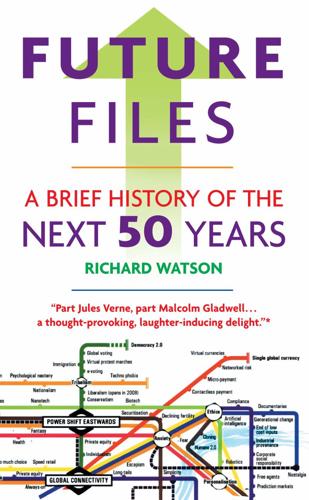
Future Files: A Brief History of the Next 50 Years
by
Richard Watson
Published 1 Jan 2008
Other experts such as neurophysiologist Bill Calvin suggest that the human brain is so “buggy” that computers will never be able to emulate it. Ultimately, though, this might not be the point; as some have suggested — such as James Surowiecki in his book The Wisdom of Crowds — the internet is already fostering an unanticipated form of AI, a highly efficient marketplace for ideas and information known as collective intelligence or the “hive mind”. In other words, if we connected up all the computers on the planet and asked the resultant network or grid a question like “Is there a God?” the answer may very well be “There is now”. 46 FUTURE FILES Nothing but the truth In the same way in which Adam Smith suggested that buyers and sellers, each pursuing their own interests, would together produce more goods more efficiently than under any other arrangement, so too online suppliers of collective intelligence, like bloggers, can create more knowledge with less bias and over a wider span of disciplines than any group of experts could.
…
A 311 Index ‘O’ Garage 170 3D printers 56 accelerated education 57 accidents 159, 161–6, 173, 246 ACNielsen 126 adaptive cruise control 165 Adeg Aktiv 50+ 208 advertising 115–16, 117, 119 Africa 70, 89, 129, 174, 221, 245, 270, 275, 290, 301 ageing 1, 10, 54, 69, 93, 139, 147–8, 164, 188, 202, 208, 221, 228–9, 237, 239, 251, 261, 292, 295, 297–8 airborne networks 56 airlines 272 allergies 196–7, 234, 236 Alliance Against Urban 4x4s 171 alternative energy 173 alternative futures viii alternative medicine 244–5 alternative technology 151 amateur production 111–12 Amazon 32, 113–14, 121 American Apparel 207 American Express 127–8 androids 55 Angola 77 anti-ageing drugs 231, 237 anti-ageing foods 188 anti-ageing surgery 2, 237 antibiotics 251 anxiety 10, 16, 30, 32, 36, 37, 128, 149, 179, 184, 197, 199, 225, 228, 243, 251, 252, 256, 263, 283–4, 295–6, 300, 301, 305 Apple 61, 115, 121, 130, 137–8, 157 Appleyard, Bryan 79 Argentina 210 Armamark Corporation 193 artificial intelliegence 22, 40, 44, 82 131, 275, 285–6, 297, 300 Asda 136, 137 Asia 11, 70, 78, 89, 129, 150, 174, 221, 280, 290, 292 Asimov, Isaac 44 Asos.com 216 asthma 235 auditory display software 29 Australia 20–21, 72–3, 76, 92, 121, 145, 196, 242, 246, 250, 270, 282 Austria 208 authenticity 32, 37, 179, 194, 203–11 authoritarianism 94 automated publishing machine (APM) 114 automation 292 automotive industry 154–77 B&Q 279 baby boomers 41, 208 bacterial factories 56 Bahney, Anna 145 Bahrain 2 baking 27, 179, 195, 199 Bangladesh 2 bank accounts, body double 132 banknotes 29, 128 banks 22, 123, 135–8, 150, 151 virtual 134 Barnes and Noble 114 bartering 151 BBC 25, 119 Become 207 Belgium 238 313 314 benriya 28 Berlusconi, Silvio 92 Best Buy 223 biofuel 64 biomechatronics 56 biometric identification 28, 35, 52, 68, 88, 132 bionic body parts 55 Biosphere Expeditions 259 biotechnology 40, 300 blended families 20 blogs 103, 107, 109, 120 Blurb 113 BMW 289 board games 225 body double bank accounts 132 body parts bionic 55 replacement 2, 188, 228 Bolivia 73 Bollywood 111 books 29, 105, 111–25 boomerang kids 145 brain transplants 231 brain-enhancing foods 188 Brazil 2, 84, 89, 173, 247, 254, 270, 290 Burger King 184 business 13, 275–92 Bust-Up 189 busyness 27, 195, 277 Calvin, Bill 45 Canada 63, 78, 240 cancer 251 car sharing 160, 169, 176 carbon credits 173 carbon footprints 255 carbon taxes 76, 172 cars classic 168–9 driverless 154–5 flying 156, 165 hydrogen-powered 12, 31, 157, 173 pay-as-you-go 167–8 self-driving 165 cascading failure 28 cash 126–7, 205 cellphone payments 129, 213 cellphones 3, 25, 35, 51, 53, 120, 121, FUTURE FILES 129, 156, 161, 251 chicken, Christian 192 childcare robots 57 childhood 27, 33–4, 82–3 children’s database 86 CHIME nations (China, India, Middle East) 2, 10, 81 China 2, 10, 11, 69–72, 75–81, 88, 92–3, 125, 137, 139–40, 142, 151, 163, 174–5, 176, 200, 222, 228, 247, 260, 270–71, 275, 279, 295, 302 choice 186–7 Christian chicken 192 Christianity, muscular 16, 73 Chrysler 176 cinema 110–11, 120 Citibank 29, 128 citizen journalism 103–4, 108 City Car Club 168 Clarke, Arthur C. 58–9 Clarke’s 187 classic cars 168–9 climate change 4, 11, 37, 43, 59, 64, 68, 74, 77–9, 93, 150, 155, 254, 257, 264, 298–9 climate-controlled buildings 254, 264 cloning 38 human 23, 249 CNN 119 coal 176 Coca-Cola 78, 222–3 co-creation 111–12, 119 coins 29, 128, 129 collective intelligence 45–6 Collins, Jim 288 comfort eating 200 Comme des Garçons 216 community 36 compassion 120 competition in financial services 124–5 low-cost 292 computers disposable 56 intelligent 23, 43 organic 56 wearable 56, 302 computing 3, 33, 43, 48, 82 connectivity 3, 10, 11, 15, 91, 120, Index 233, 261, 275–6, 281, 292, 297, 299 conscientious objection taxation 86 contactless payments 123, 150 continuous partial attention 53 control 36, 151, 225 convenience 123, 178–9, 184, 189, 212, 223, 224 Coren, Stanley 246 corporate social responsibility 276, 282, 298 cosmetic neurology 250 Costa Rica 247 Craig’s List 102 creativity 11, 286; see also innovation credit cards 141–3, 150 crime 86–9 forecasting 86–7 gene 57, 86 Croatia 200 Crowdstorm 207 Cuba 75 cultural holidays 259, 273 culture 11, 17–37 currency, global 127, 151 customization 56, 169, 221–2, 260 cyberterrorism 65, 88–9 Cyc 45 cynicism 37 DayJet 262 death 237–9 debt 123–4, 140–44, 150 defense 63, 86 deflation 139 democracy 94 democratization of media 104, 108, 113 demographics 1, 10, 21, 69, 82, 93, 202, 276, 279–81, 292, 297–8 Denmark 245 department stores 214 deregulation 11, 3 Destiny Health 149 detox 200 Detroit Project 171 diagnosis 232 remote 228 digital downloads 121 evaporation 25 315 immortality 24–5 instant gratification syndrome 202 Maoism 47 money 12, 29, 123, 126–7, 129, 132, 138, 150, 191 nomads 20, 283 plasters 241 privacy 25, 97, 108 readers 121 digitalization 37, 292 Dinner by Design 185 dirt holidays 236 discount retailers 224 Discovery Health 149 diseases 2, 228 disintegrators 57 Disney 118–19 disposable computers 56 divorce 33, 85 DNA 56–7, 182 database 86 testing, compulsory 86 do-it-yourself dinner shops 185–6 dolls 24 doorbells 32 downshifters 20 Dream Dinners 185 dream fulfillment 148 dressmaking 225 drink 178–200 driverless cars 154–5 drugs anti-ageing 231, 237 performance-improving 284–5 Dubai 264, 267, 273 dynamic pricing 260 E Ink 115 e-action 65 Earthwatch 259 Eastern Europe 290 eBay 207 e-books 29, 37, 60, 114, 115, 302 eco-luxe resorts 272 economic collapse 2, 4, 36, 72, 221, 295 economic protectionism 10, 15, 72, 298 economy travel 272 316 Ecuador 73 education 15, 18, 82–5, 297 accelerated 57 lifelong learning 290 Egypt 2 electricity shortages 301 electronic camouflage 56 electronic surveillance 35 Elephant 244 email 18–19, 25, 53–4, 108 embedded intelligence 53, 154 EMF radiation 251 emotional capacity of robots 40, 60 enclosed resorts 273 energy 72, 75, 93 alternative 173 nuclear 74 solar 74 wind 74 enhancement surgery 249 entertainment 34, 121 environment 4, 10, 11, 14, 64, 75–6, 83, 93, 155, 171, 173, 183, 199, 219–20, 252, 256–7, 271, 292, 301 epigenetics 57 escapism 16, 32–3, 121 Estonia 85, 89 e-tagging 129–30 e-therapy 242 ethical bankruptcy 35 ethical investing 281 ethical tourism 259 ethics 22, 24, 41, 53, 78, 86, 132, 152, 194, 203, 213, 232, 238, 249–50, 258, 276, 281–2, 298–9 eugenics 252 Europe 11, 70, 72, 81, 91, 141, 150, 174–5, 182, 190, 192, 209 European Union 15, 139 euthanasia 238, 251 Everquest 33 e-voting 65 experience 224 extended financial families 144 extinction timeline 9 Facebook 37, 97, 107 face-recognition doors 57 fakes 32 family 36, 37 FUTURE FILES family loans 145 fantasy-related industries 32 farmaceuticals 179, 182 fast food 178, 183–4 fat taxes 190 fear 10, 34, 36, 38, 68, 150, 151, 305 female-only spaces 210–11, 257 feminization 84 financial crisis 38, 150–51, 223, 226, 301 financial services 123–53, 252 trends 123–5 fish farming 181 fixed-price eating 200 flashpacking 273 flat-tax system 85–6 Florida, Richard 36, 286, 292 flying cars 165 food 69–70, 72, 78–9, 162, 178–201 food anti-ageing 188 brain-enhancing 188 fast 178, 183–4 functional 179 growing your own 179, 192, 195 history 190–92 passports 200 slow 178, 193 tourism 273 trends 178–80 FoodExpert ID 182 food-miles 178, 193, 220 Ford 169, 176, 213, 279–80 forecasting 49 crime 86–7 war 49 Forrester Research 132 fractional ownership 168, 175, 176, 225 France 103, 147, 170, 189, 198, 267 Friedman, Thomas 278–9, 292 FriendFinder 32 Friends Reunited 22 frugality 224 functional food 179 Furedi, Frank 68 gaming 32–3, 70, 97, 111–12, 117, 130, 166, 262 Gap 217 Index gardening 27, 148 gas 176 GE Money 138, 145 gendered medicine 244–5 gene silencing 231 gene, crime 86 General Motors 157, 165 Generation X 41, 281 Generation Y 37, 41, 97, 106, 138, 141–2, 144, 202, 208, 276, 281, 292 generational power shifts 292 Genes Reunited 35 genetic enhancement 40, 48 history 35 modification 31, 182 testing 221 genetics 3, 10, 45, 251–2 genomic medicine 231 Germany 73, 147, 160, 170, 204–5, 216–17, 261, 267, 279, 291 Gimzewski, James 232 glamping 273 global currency 127 global warming 4, 47, 77, 93, 193, 234 globalization 3, 10, 15–16, 36–7, 63–7, 72–3, 75, 81–2, 88, 100, 125, 139, 143, 146, 170, 183, 189, 193–5, 221, 224, 226, 233–4, 247–8, 263, 275, 278–80, 292, 296, 299 GM 176 Google 22, 61, 121, 137, 293 gout 235 government 14, 18, 36, 63–95, 151 GPS 3, 15, 26, 50, 88, 138, 148, 209, 237, 262, 283 Grameen Bank 135 gravity tubes 57 green taxes 76 Greenpeace 172 GRIN technologies (genetics, robotics, internet, nanotechnology) 3, 10, 11 growing your own food 178, 192, 195 Gucci 221 Gulf States 125, 260, 268 H&M 217 habitual shopping 212 Handy, Charles 278 317 Happily 210 happiness 63–4, 71–2, 146, 260 health 15, 82, 178–9, 199 health monitoring 232, 236, 241 healthcare 2, 136, 144, 147–8, 154, 178–9, 183–4, 189–91, 228–53, 298; see also medicine trends 214–1534–7 Heinberg, Richard 74 Helm, Dieter 77 Heritage Foods 195 hikikomori 18 hive mind 45 holidays 31, 119; see also tourism holidays at home 255 cultural 259 dirt 236 Hollywood 33, 111–12 holographic displays 56 Home Equity Share 145 home baking 225 home-based microgeneration 64 home brewing 225 honesty 152 Hong Kong 267 hospitals 228, 241–3, 266 at home 228, 238, 240–42 hotels 19, 267 sleep 266 human cloning 23, 249 Hungary 247 hybrid humans 22 hydrogen power 64 hydrogen-powered cars 12, 31, 157, 173 Hyperactive Technologies 184 Hyundai 170 IBM 293 identities, multiple 35, 52 identity 64, 71 identity theft 88, 132 identity verification, two-way 132 immigration 151–2, 302 India 2, 10, 11, 70–72, 76, 78–9, 81, 92, 111, 125, 135, 139, 163, 174–5, 176, 247, 249–50, 254, 260, 270, 275, 279, 302 indirect taxation 86 318 individualism 36 Indonesia 2, 174 industrial robots 42 infinite content 96–7 inflation 151 information overlead 97, 120, 159, 285; see also too much information innovation 64, 81–2, 100, 175, 222, 238, 269, 277, 286–8, 291, 297, 299 innovation timeline 8 instant gratification 213 insurance 123, 138, 147–50, 154, 167, 191, 236, 250 pay-as-you-go 167 weather 264 intelligence 11 embedded 53, 154 implants 229 intelligent computers 23, 43 intelligent night vision 162–3 interaction, physical 22, 25, 97, 110, 118, 133–4, 215, 228, 243, 276, 304 interactive media 97, 105 intergenerational mortgages 140, 144–5 intermediaries 123, 135 internet 3, 10, 11, 17–18, 25, 68, 103, 108, 115–17, 124, 156, 240–41, 261, 270, 283, 289, 305 failure 301 impact on politics 93–4 sensory 56 interruption science 53 iPills 240 Iran 2, 69 Ishiguro, Hiroshi 55 Islamic fanaticism 16 Italy 92, 170, 198–9 iTunes 115, 130; see also Apple Japan 1, 18, 26, 28–9, 54–5, 63, 80–81, 114, 121, 128–9, 132, 140, 144–5, 147, 174, 186, 189, 192, 196, 198, 200, 209–10, 223, 240, 260, 264, 271, 279, 291 jetpacks 60 job security 292 journalism 96, 118 journalism, citizen 103–4, 107 joy-makers 57 FUTURE FILES Kaboodle 207 Kapor, Mitchell 45 Kenya 128 keys 28–9 Kindle 60, 121 Kramer, Peter 284 Kuhn, Thomas 281 Kurzweil, Ray 45 Kuwait 2 labor migration 290–91 labor shortages 3, 80–81, 289–90 Lanier, Jaron 47 laser shopping 212 leisure sickness 238 Let’s Dish 185 Lexus 157 libraries 121 Libya 73 life-caching 24, 107–8 lighting 158, 160 Like.com 216 limb farms 249 limited editions 216–17 live events 98, 110, 304 localization 10, 15–16, 116, 128, 170, 178, 189, 193, 195, 215, 220, 222–3, 224, 226, 255, 270, 297 location tagging 88 location-based marketing 116 longevity 188–9, 202 Longman, Philip 71 low cost 202, 219–22 luxury 202, 221, 225, 256, 260, 262, 265–6, 272 machinamas 112 machine-to-machine communication 56 marketing 115–16 location-based 116 now 116 prediction 116 Marks & Spencer 210 Maslow, Abraham 305–6 masstigue 223 materialism 37 Mayo Clinic 243 McDonald’s 130, 168, 180, 184 McKinsey 287 Index meaning, search for 16, 259, 282, 290, 305–6 MECU 132 media 96–122 democratization of 104, 108, 115 trends 96–8 medical outsourcing 247–8 medical tourism 2, 229, 247 medicine 188, 228–53; see also healthcare alternative 243–4 gendered 244–5 genomic 231 memory 229, 232, 239–40 memory loss 47 memory pills 231, 240 memory recovery 2, 228–9, 239 memory removal 29–30, 29, 240 Menicon 240 mental health 199 Meow Mix 216 Merriman, Jon 126 metabolomics 56 meta-materials 56 Metro 204–5 Mexico 2 micromedia 101 micro-payments 130, 150 Microsoft 137, 147, 293 Middle East 10, 11, 70, 81, 89, 119, 125, 129, 139, 174–5, 268, 301 migration 3, 11, 69–70, 78, 82, 234, 275, 290–91 boomerang 20 labor 290–91 Migros 215 military recruitment 69 military vehicles 158–9 mind-control toys 38 mindwipes 57 Mitsubishi 198, 279 mobile payments 123, 150 Modafinil 232 molecular biology 231 monetization 118 money 123–52 digital 12, 29, 123, 126–7, 129, 132, 138, 150, 191 monitoring, remote 154, 168, 228, 242 monolines 135, 137 319 mood sensitivity 41, 49, 154, 158, 164, 187–8 Morgan Stanley 127 mortality bonds 148 Mozilla Corp. 289 M-PESA 129 MTV 103 multigenerational families 20 multiple identities 35, 52 Murdoch, Rupert 109 muscular Christianity 16, 73 music industry 121 My-Food-Phone 242 MySpace 22, 25, 37, 46, 97, 107, 113 N11 nations (Bangladesh, Egypt, Indonesia, Iran, South Korea, Mexico, Nigeria, Pakistan, Philippines, Turkey, Vietnam) 2 nanoelectronics 56 nanomedicine 32 nanotechnology 3, 10, 23, 40, 44–5, 50, 157, 183, 232, 243, 286, 298 napcaps 56 narrowcasting 109 NASA 25, 53 nationalism 16, 70, 72–3, 139, 183, 298, 302 natural disasters 301 natural resources 2, 4, 11, 64, 298–9 Nearbynow 223 Nestlé 195 Netherlands 238 NetIntelligence 283 networkcar.com 154 networks 28, 166, 288 airborne 56 neural nets 49 neuronic whips 57 neuroscience 33, 48 Neville, Richard 58–9 New Economics Foundation 171 New Zealand 265, 269 newspapers 29, 102–9, 117, 119, 120 Nigeria 2, 73 Nike 23 nimbyism 63 no-frills 224 Nokia 61, 105 Norelift 189 320 Northern Rock 139–40 Norwich Union 167 nostalgia 16, 31–2, 51, 169–70, 179, 183, 199, 203, 225, 303 now marketing 116 nuclear annihilation 10, 91 nuclear energy 74 nutraceuticals 179, 182 Obama, Barack 92–3 obesity 75, 190–92, 199, 250–51 oceanic thermal converters 57 oil 69, 72–3, 93, 151, 174, 176, 272, 273, 301 Oman 2, 270 online relationships 38 organic computers 56 organic food 200, 226 osteoporosis 235 outsourcing 224, 292 Pakistan 2 pandemics 4, 10, 16, 59, 72, 128, 232, 234, 272, 295–7, 301 paper 37 parasite singles 145 passwords 52 pictorial 52 pathogens 233 patient simulators 247 patina 31 patriotism 63, 67, 299 pay-as-you-go cars 167–8 pay-as-you-go insurance 167 payments cellphone 129, 213 contactless 123, 150 micro- 130, 150 mobile 123, 150 pre- 123, 150 PayPal 124, 137 Pearson, Ian 44 performance-improving drugs 284–5 personal restraint 36 personal robots 42 personalization 19, 26, 56, 96–8, 100, 102–3, 106, 108–9, 120, 138, 149, 183, 205–6, 223, 244–5, 262, 267, 269 Peru 73 FUTURE FILES Peters, Tom 280 Pharmaca 244 pharmaceuticals 2, 33, 228, 237 Philippines 2, 212, 290 Philips 114 Philips, Michael 232–3 photographs 108 physical interaction 22, 25, 97, 110, 118, 133–4, 215, 228, 243, 276, 304 physicalization 96–7, 101–2, 106, 110, 120 pictorial passwords 52 piggy banks 151 Pink, Daniel 285 plagiarism 83 polarization 15–16, 285 politics 37, 63–95, 151–2 regional 63 trends 63–5 pop-up retail 216, 224 pornography 31 portability 178, 183–4 power shift eastwards 2, 10–11, 81, 252 Prada 205–6, 216 precision agriculture 181–2 precision healthcare 234–7 prediction marketing 116 predictions 37, 301–2 premiumization 223 pre-payments 123, 150 privacy 3, 15, 41, 50, 88, 154, 165–7, 205, 236, 249, 285, 295 digital 25, 97, 108 Procter & Gamble 105, 280 product sourcing 224 Prosper 124, 135 protectionism 67, 139, 156, 220, 226, 301 economic 10, 15, 72, 299 provenance 178, 193, 226 proximity indicators 32 PruHealth 149 psychological neoteny 52 public ownership 92 public transport 171 purposeful shopping 212 Qatar 2 quality 96–7, 98, 101, 109 Index quantum mechanics 56 quantum wires 56 quiet materials 56 radiation, EMF 251 radio 117 randominoes 57 ranking 34, 83, 109, 116, 134, 207 Ranking Ranqueen 186 reality mining 51 Really Cool Foods 185 rebalancing 37 recession 139–40, 202, 222 recognition 36, 304 refrigerators 197–8 refuge 121 regeneration 233 regional food 200 regional politics 63 regionality 178, 192–3 regulation 124, 137, 143 REI 207 Reid, Morris 90 relationships, online 38 religion 16, 58 remote diagnosis 228 remote monitoring 154, 168, 228, 242 renting 225 reputation 34–5 resistance to technology 51 resorts, enclosed 273 resource shortages 11, 15, 146, 155, 178, 194, 254, 300 resources, natural 2, 4, 11, 64, 73–4, 143, 298–9 respect 36, 304 restaurants 186–8 retail 20–21, 202–27, 298 pop-up 216, 224 stealth 215 theater 214 trends 202–3 Revkin, Andy 77 RFID 3, 24, 50, 121, 126, 149, 182, 185, 192, 196, 205 rickets 232 risk 15, 124, 134, 138, 141, 149–50, 162, 167, 172, 191, 265, 299–300, 303 Ritalin 232 321 road pricing 166 Robertson, Peter 49 robogoats 55 robot department store 209 Robot Rules 44 robotic assistants 54, 206 concierges 268 financial advisers 131–2 lobsters 55 pest control 57 soldiers 41, 55, 60 surgery 35, 41, 249 robotics 3, 10, 41, 44–5, 60, 238, 275, 285–6, 292, 297 robots 41, 54–5, 131, 237, 249 childcare 57 emotional capacity of 40, 60 industrial 42 personal 42 security 209 therapeutic 41, 54 Russia 2, 69, 72, 75, 80, 89, 92–3, 125, 174, 232, 254, 270, 295, 302 safety 32, 36, 151, 158–9, 172–3, 182, 192, 196 Sainsbury’s 215 Salt 187 sanctuary tourism 273 satellite tracking 166–7 Saudi Arabia 2, 69 Schwartz, Barry 186 science 13, 16, 40–62, 300 interruption 53 trends 40–42 scramble suits 57 scrapbooking 25, 108, 225 Sears Roebuck 137 seasonality 178, 193–4 second-hand goods 224 Second Life 133, 207–8 securitization 124, 140 security 16, 31, 151 security robots 209 self-driving cars 165 self-medication 242 self-publishing 103, 113–14 self-reliance 35, 75 self-repairing roads 57 322 self-replicating machines 23, 44 Selfridges 214 sensor motes 15, 50, 196 sensory internet 56 Sharia-based investment 125 Shop24 209 shopping 202–27 habitual 212 laser 212 malls 211–5 purposeful 212 slow 213 social 207 Shopping 2.0 224 short-wave scalpels 57 silicon photonics 56 simplicity 169–70, 179, 186, 202, 218, 224, 226, 272 Singapore 241 single-person households 19–20, 202–3, 208–9, 221, 244, 298, 304 skills shortage 293, 302 sky shields 57 sleep 159–60, 188, 228, 231, 246–7, 265 sleep debt 96, 266 sleep hotels 266 sleep surrogates 57 slow food 178, 193 slow shopping 213 slow travel 273 smart devices 26–7, 28, 32, 35, 44, 50, 56, 57, 164, 206, 207 smart dust 3, 15, 50, 196 smartisans 20 Smartmart 209 snakebots 55 social networks 97, 107, 110, 120, 133, 217, 261 social shopping 207 society 13, 15–16, 17–37 trends 15–16 Sodexho 193 solar energy 74 Sony 114, 121 South Africa 84, 149, 242 South America 82, 270 South Korea 2, 103, 128–9 space ladders 56 space mirrors 47 space tourism 271, 273 FUTURE FILES space tugs 57 speed 164, 202, 209, 245, 296–7 spirituality 16, 22, 282, 298, 306 spot knowledge 47 spray-on surgical gloves 57 St James’s Ethics Centre 282 stagflation 139 starch-based plastics 64 stealth retail 215 stealth taxation 86 Sterling, Bruce 55 storytelling 203 Strayer, David 161 street signs 162–3 stress 32, 96, 235, 243, 245–6, 258–9, 265, 257–9, 275, 277, 283–5 stress-control clothing 57 stupidity 151, 302 Stylehive 207 Sudan 73 suicide tourism 236 Super Suppers 185 supermarkets 135–6, 184–6, 188, 191–2, 194, 202–3, 212, 215, 218–19, 224, 229 surgery 2, 31 anti-ageing 2, 237 enhancement 249 Surowiecki, James 45 surveillance 35, 41 sustainability 4, 37, 74, 181, 193–5, 203, 281, 288, 298–9 Sweden 84 swine flu 38, 251, 272 Switzerland 168, 210, 215 synthetic biology 56 Taco Bell 184 Tactical Numerical Deterministic Model 49 tagging, location 86, 88 Taiwan 81 talent, war for 275, 279, 293; see also labor shortages Target 216 Tasmania 267 Tata Motors 174, 176 taxation 85–6, 92, 93 carbon 76, 172 conscientious objection 86 Index fat 190 flat 85–6 green 76 indirect 86 stealth 86 Tchibo 217 technology 3, 14–16, 18, 22, 26, 28, 32, 37, 40–62, 74–5, 82–3, 96, 119, 132, 147–8, 154, 157, 160, 162, 165–7, 178, 182, 195–8, 208, 221, 229, 237, 242–3, 249, 256, 261, 265–6, 268, 275–6, 280, 283–4, 292, 296–7, 300 refuseniks 30, 51, 97 trends 40–42 telemedicine 228, 238, 242 telepathy 29 teleportation 56 television 21, 96, 108, 117, 119 terrorism 67, 91, 108, 150, 262–3, 267, 272, 295–6, 301 Tesco 105, 135–6, 185, 206, 215, 219, 223 Thailand 247, 290 therapeutic robots 41, 54 thermal imaging 232 things that won’t change 10, 303–6 third spaces 224 ThisNext 207 thrift 224 Tik Tok Easy Shop 209 time scarcity 30, 96, 102, 178, 184–6, 218, 255 time shifting 96, 110, 116 time stamps 50 timeline, extinction 9 timeline, innovation 8 timelines 7 tired all the time 246 tobacco industry 251 tolerance 120 too much choice (TMC) 29, 202, 218–19 too much information (TMI) 29, 51, 53, 202, 229; see also information overload tourism 254–74 cultural 273 ethical 259 food 273 323 local 273 medical 2, 229, 247 sanctuary 273 space 271, 273 suicide 238 tribal 262 Tourism Concern 259 tourist quotas 254, 271 Toyota 48–9, 157 toys, mind-control 38 traceability 195 trading down 224 transparency 3, 15, 143, 152, 276, 282, 299 transport 15, 154–77, 298 public 155, 161 trends 154–6 transumerism 223 travel 2, 3, 11, 148, 254–74 economy 272 luxury 272 slow 273 trends 254–6 trend maps 6–7 trends 1, 5–7, 10, 13 financial services 123–5 food 178–80 healthcare 228–9 media 96–8 politics 63–5 retail 202–3 science and technology 40–42 society 15–16 transport 154–6 travel 254–6 work 275–7 tribal tourism 262 tribalism 15–16, 63, 127–8, 183, 192, 220, 260 trust 82, 133, 137, 139, 143, 192, 203, 276, 282–3 tunnels 171 Turing test 45 Turing, Alan 44 Turkey 2, 200, 247 Twitter 60, 120 two-way identity verification 132 UAE 2 UFOs 58 324 UK 19–20, 72, 76, 84, 86, 90–91, 100, 102–3, 105, 128–9, 132, 137, 139–42, 147–9, 150, 163, 167–8, 170–71, 175, 185, 195–6, 199, 200, 206, 210, 214–16, 238, 259, 267–8, 278–9, 284, 288 uncertainty 16, 30, 34, 52, 172, 199, 246, 263, 300, 303 unemployment 151 Unilever 195 University of Chicago 245–6 urban rental companies 176 urbanization 11, 18–19, 78, 84, 155, 233 Uruguay 200 US 1, 11, 19–21, 23, 55–6, 63, 67, 69, 72, 75, 77, 80–83, 86, 88–90, 92, 104–5, 106, 121, 129–33, 135, 139–42, 144, 147, 149, 150, 151, 162, 167, 169–71, 174, 185, 190–3, 195, 205–6, 209, 211, 213, 216, 218, 220, 222–3, 237–8, 240–8, 250, 260, 262, 267–8, 275, 279–80, 282–4, 287, 291 user-generated content (UGC) 46, 97, 104, 289 utility 224 values 36, 152 vending machines 209 Venezuela 69, 73 verbal signatures 132 VeriChip 126 video on demand 96 Vietnam 2, 290 Vino 100 113 Virgin Atlantic 261 virtual adultery 33 banks 134 economy 130–31 protests 65 reality 70 sex 32 stores 206–8 vacations 32, 261 worlds 157, 213, 255, 261, 270, 305 Vocation Vacations 259–60 Vodafone 137 voice recognition 41 voice-based internet search 56 voicelifts 2, 237 FUTURE FILES Volkswagen 175 voluntourism 259 Volvo 164 voting 3, 68, 90–91 Walgreens 244 Wal-Mart 105, 136–7, 215, 219–20, 223, 244, 282 war 68–9, 72 war for talent 275, 279; see also labor shortages war forecasting 49 water 69–70, 74, 77–9, 199 wearable computers 55 weather 64 weather insurance 264 Web 2.0 93, 224 Weinberg, Peter 125 wellbeing 2, 183, 188, 199 white flight 20 Wikipedia 46, 60, 104 wild swimming 273 Wilson, Edward O. 74 wind energy 74 wine producers 200 wisdom of idiots 47 Wizard 145 work 275–94 trends 275–94 work/life balance 64, 71, 260, 277, 289, 293 worldphone 19 xenophobia 16, 63 YouTube 46, 103, 107, 112 Zara 216–17 Zipcar 167 Zopa 124, 134

Black Pill: How I Witnessed the Darkest Corners of the Internet Come to Life, Poison Society, and Capture American Politics
by
Elle Reeve
Published 9 Jul 2024
To argue that “race war now” is a fine objective but that visible swastikas might be a turnoff to the general public and slow the growth of the movement is to be an “optics cuck.” To join the movement is to be chained to the most violent extremes of it. The power is in mass anonymity. The racist hive mind collects a catalog of all leaders’ worst moments. Break with current internet doctrine, and you’ll be flooded with photos of that time you looked fat, or reminded of that time your best friend slept with your wife. The young leaders resent the old men, but they fear their own followers. The movement will get you punched, sued, jailed, divorced, bankrupted.
…
Stormfront was an older white nationalist message board whose members started posting on 4chan in coordinated waves. Other users told them to leave, but they eventually took over. “That was when Stormfront realized that they could attract normies… to their side by using 4chan’s /pol/.” Donald Trump had taken advantage of the collective power of an internet hive mind four years earlier. In 2011, amid the growing “birther” conspiracy theory that President Obama had secretly been born outside the U.S. and was therefore an illegitimate president, Trump claimed he’d launched a campaign to get to the bottom of it. What sustained the birther movement were individual contributions that cast doubt on Obama’s citizenship.

Machine Learning: New and Collected Stories
by
Hugh Howey
Published 2 Oct 2017
A child of mine screams out in danger, a warning, a cry for help, for solutions, and I know in an instant that there are none, but I’m made to talk to them all, because we’re all connected, and I have to say the truth, like the brave parents do, and cradle their thoughts with mine the whole dreadful way down, like I rode with my threader, sorry, sorry, in my mind, as men below listen to sirens and klaxons and stir from the images on their retinas to move, move, move for once, getting out of my way, backs bent in hurried bows, before a son or daughter of mine craters to the cold Earth. Hive mind. Your analogy. The way all our thoughts are one, the way I feel every worker who has ever toiled for me, the way they are me and I am them. We talked over telex, you and I. And the voice that went out on your show, sandwiched between music, was a voice without a body. Just a hive mind, as you tried to grasp it. You need there to be one. Singular. A politician. A voice. A speech. A ribbon. A moment when the job is complete. A signal that now is the time for applause.

Cities in the Sky: The Quest to Build the World's Tallest Skyscrapers
by
Jason M. Barr
Published 13 May 2024
As a result, the world witnessed the emergence of a global consensus: on net, they were good but required oversight—and the FAR would be the predominant means to regulate their size and bulk. Born in twentieth-century New York, the FAR helped shape—literally and figuratively—the global quest for skyscrapers in the twenty-first century. CHAPTER 3 The American Century Hive Minds in the Sky Sears (Willis) Tower (1974) THE SEARS TOWER Sears, Roebuck and Co. never set out to build the world’s tallest building, but rather it just fell into the retailer’s lap. The story of the Sears (today Willis) Tower helps to disprove the idea that the world’s record breakers are devoid of economic rationales or are simply self-monuments to an ego-driven developer.
…
Third, there appears to have been an increase in the average amount of floor space occupied per worker in office buildings, partly to provide room for more office machines and equipment. Inside these buildings, whether it was General Motors, International Business Machines, General Electric, or Exxon, the iconic corporate skyscrapers that rose were not just symbols of American business might but were also hives that produced hive minds, where a company would oversee and coordinate its vast global operations and plan its corporate strategy. Large metropolises like New York and Chicago, as a result, became a hive of hives. The grand lesson of the twentieth century was that what happened in the skyscraper had benefits far beyond its glass walls.

Kill All Normies: Online Culture Wars From 4Chan and Tumblr to Trump and the Alt-Right
by
Angela Nagle
Published 6 Jun 2017
Compare the first election won by Obama, in which social media devotees reproduced the iconic but official blue-and-red stylized stencil portrait of the new president with HOPE printed across the bottom, a portrait created by artist Shepard Fairey and approved by the official Obama campaign, to the bursting forth of irreverent mainstream-baffling meme culture during the last race, in which the Bernie’s Dank Meme Stash Facebook page and The Donald subreddit defined the tone of the race for a young and newly politicized generation, with the mainstream media desperately trying to catch up with a subcultural in-joke style to suit two emergent anti-establishment waves of the right and left. Writers like Manuel Castells and numerous commentators in the Wired magazine milieu told us of the coming of a networked society, in which old hierarchical models of business and culture would be replaced by the wisdom of crowds, the swarm, the hive mind, citizen journalism and user-generated content. They got their wish, but it’s not quite the utopian vision they were hoping for. As old media dies, gatekeepers of cultural sensibilities and etiquette have been overthrown, notions of popular taste maintained by a small creative class are now perpetually outpaced by viral online content from obscure sources, and culture industry consumers have been replaced by constantly online, instant content producers.

New York 2140
by
Kim Stanley Robinson
Published 14 Mar 2017
Then up the elevator to the thirtieth floor and over to the northwest corner, where I settled into my aerie, looking through a scattering of skybridges midtown, and the superscrapers looming uptown in all their gehryglory. I started the day as always, with a giant mug of cappuccino and a review of the closing markets in East Asia, and the midday markets in Europe. The global hive mind never sleeps, but it does nap while crossing the width of the Pacific, a half-hour nap between when New York closes and Shanghai opens; this is the pause that puts the day into day trading. On my screen was displayed all the parts of the global mind most concerned with drowned coastlines, my area of expertise.
…
In fact no one is really home, so all the intelligence in this system, such as it was, was really in the people participating in it. Which meant there might not be very much intelligence there. And it was definitely massively fragmented. So, many fine or not-very-fine intelligences had in effect combined to make a team, but with no coherence and no way to get purchase on the situation. Schizophrenic but not crazy. Hive mind, but no mind. The stack, as in stacked emergent properties, but really stacked emergencies. Really best to think of it as a kind of game. Maybe. A game, or a system for gaming things. Anyway, on this afternoon my screens showed things were fine. No crash in the last two hours. I would have thought the Chelsea wreck would have dragged the local IPPI down a little more.
…
She watched me closely and yet I didn’t feel observed or judged. I tried to make it clear that trading had interested me as a puzzle to be solved, a story to be pulled together out of the data. I explained my theory of the screen and its multiple simultaneous genres, giving when taken altogether a glimpse into the global mind. A hive mind. “Like history,” she said as I tried to describe it. “Yes, but visible on a screen. History as it’s happening.” “And quantified, so you can bet on it.” “Yes, that’s right. History made into a betting game.” “I guess it always is. But is that good?” I shrugged. “I used to think so. I enjoyed it as such.

Machine, Platform, Crowd: Harnessing Our Digital Future
by
Andrew McAfee
and
Erik Brynjolfsson
Published 26 Jun 2017
As Pratt puts it, “Human beings take decades to learn enough to add meaningfully to the compendium of common knowledge. However, robots not only stand on the shoulders of each other’s learning, but can start adding to the compendium of robot knowledge almost immediately after their creation.” An early example of this kind of universal “hive mind” is Tesla’s fleet of cars, which share data about the roadside objects they pass. This information sharing helps the company build over time an understanding of which objects are permanent (they’re the ones passed in the same spot by many different cars) and thus very unlikely to run out into the middle of the road.
…
Louis, 163 fees Stripe, 172–73 in two-sided networks, 215 fiat currencies, 280, 286, 305 FICO scores, 46–47 file sharing platforms, 144–45 film photography, 131 financial crisis (2008), 285, 308 financial services automated investing, 266–70 crowdlending platforms, 263 as least-trusted industry, 296 and regulation, 202 TØ.com, 290 virtualization of, 91 find-fix-verify, 260 firms economics of, 309–12 theory of, See TCE (transaction cost economics) FirstBuild, 11–14 Fitbit, 163 5G wireless technology, 96 fixed costs, 137 flat hierarchy, 325 Fleiss, Jennifer, 187 Flexe, 188 focus groups, 189–90 “food computers,” 272 food preparation recipes invented by Watson, 118 robotics in, 93–94 Forbes magazine, 303 forks, operating system, 244 Forsyth, Mark, 70 “foxes,” 60–61 fraud detection, 173 “free, perfect, instant” information goods complements, 160–63 economics of, 135–37 free goods, complements and, 159 freelance workers, 189 free market, See market “freemium” businesses, 162 Friedman, Thomas, 135 Friendster, 170 Fukoku Mutual Life, 83 Gallus, Jana, 249n garments, 186–88 Garvin, David, 62 Gazzaniga, Michael, 45n GE Appliances, 15 Gebbia, Joe, 209–10 geeky leadership, 244–45, 248–49 gene editing, 257–58 General Electric (GE), 10–15, 261 General Growth Properties, 134 General Theory of Employment, Interest, and Money, The (Keynes), 278–79 generative design, 112–13 genome sequencing, 252–55, 260–61 Georgia, Republic of, 291 Gershenfeld, Neil, 308 GFDL, 248 Gill, Vince, 12n Giuliano, Laura, 40 global financial crisis (2008), 285, 308 GNU General Public License (GPL), 243 Go (game), 1–6 Goethe, Johann Wolfgang von, 178 Go-Jek, 191 golden ratio, 118 Goldman Sachs, 134 gold standard, 280n Goodwin, Tom, 6–10, 14 Google, 331; See also Android acquiring innovation by acquiring companies, 265 Android purchased by, 166–67 Android’s share of Google revenue/profits, 204 autonomous car project, 17 DeepMind, 77–78 hiring decisions, 56–58 iPhone-specific search engine, 162 and Linux, 241 origins of, 233–34 and self-driving vehicles, 82 as stack, 295 Google AdSense, 139 Google DeepMind, 4, 77–78 Google News, 139–40 Google search data bias in, 51–52 incorporating into predictive models, 39 Graboyes, Robert, 274–75 Granade, Matthew, 270 Grant, Amy, 12n graphics processing units (GPUs), 75 Great Recession (2008), 285, 308 Greats (shoe designer), 290 Grid, The (website design startup), 118 Grokster, 144 Grossman, Sandy, 314 group drive, 20, 24 group exercise, See ClassPass Grove, William, 41 Grubhub, 186 Guagua Xiche, 191–92 gut instincts, 56 gyro sensor, 98 Haidt, Jonathan, 45 Hammer, Michael, 32, 34–35, 37, 59 hands, artificial, 272–75 Hannover Messe Industrial Trade Fair, 93–94 Hanson, Robin, 239 Hanyecz, Laszlo, 285–86 Hao Chushi, 192 “hard fork,” 304–5, 318 Harper, Caleb, 272 Hart, Oliver, 313–15 Hayek, Friedrich von, 151, 235–39, 279, 332 health care, 123–24 health coaches, 124, 334 health insurance claims, 83 Hearn, Mike, 305–6 heat exchangers, 111–13 “hedgehogs,” 60–61 Hefner, Cooper, 133 Hefner, Hugh, 133 hierarchies flat, 325 production costs vs. coordination costs in, 313–14 Hinton, Geoff, 73, 75–76 HiPPOs (highest-paid person’s opinions), 45, 63, 85 hiring decisions, 56–58 Hispanic students, 40 HIStory (Michael Jackson), 131 hive mind, 97 HMV (record store chain), 131, 134 Holberton School of Software Engineering, 289 “hold-up problem,” 316 Holmström, Bengt, 313, 315 Honor (home health care platform), 186 hotels limits to Airbnb’s effects on, 221–23 Priceline and, 223–24 revenue management’s origins, 182 “hot wallet,” 289n housing sales, 39 Howell, Emily (music composition software), 117 Howells, James, 287 Hughes, Chris, 133 human condition, 121, 122 human genome, 257–58 human judgment, See judgment, human Hyman, Jennifer, 187 hypertext, 33 IBM; See also Watson (IBM supercomputer) and Linux, 241 System/360 computer, 48 ice nugget machine, 11–14 idAb algorithm, 253, 254 incentives, ownership’s effect on, 316 incomplete contracting, 314–17 incremental revenue, 180–81 incumbents advantages in financial services, 202 inability to foresee effects of technological change, 21 limits to disruption by platforms, 221–24 platforms’ effect on, 137–48, 200–204 threats from platform prices, 220–21 Indiegogo, 13–14, 263, 272 industrial trusts, 22–23 information business processes and, 88–89 in economies, 235–37 O2O platforms’ handling of, 192–93 information asymmetries, 206–10 information goods bundling, 146–47 as “free, perfect, instant,” 135–37 and solutionism, 297–98 information transfer protocols, 138 infrared sensors, 99 InnoCentive, 259 innovation crowd and, 264–66 ownership’s effect on, 316 Instagram, 133, 264–66 institutional investors, 263 Intel, 241, 244 Internet as basis for new platforms, 129–49 economics of “free, perfect, instant” information goods, 135–37 evolution into World Wide Web, 33–34 in late 1990s, 129–31 as platform of platforms, 137–38 pricing plans, 136–37 intuition, See System 1/System 2 reasoning inventory, perishing, See perishing/perishable inventory investing, automated, 266–70 investment advising, 91 Iora Health, 124, 334 Iorio, Luana, 105 iOS, 164–67, 203 iPhone apps for, 151–53, 161–63 Blackberry vs., 168 curation of apps for, 165 demand curve for, 156 introduction of, 151–52 and multisided markets, 218 opening of platform to outside app builders, 163–64 user interface, 170 widespread adoption of, 18 iron mining, 100 Irving, Washington, 252 Isaac, Earl, 46 Isaacson, Walter, 152, 165 iteration, 173, 323; See also experimentation iTunes, 217–18 iTunes Store, 145, 165 Jackson, Michael, 131 Java, 204n Jelinek, Frederick, 84 Jeopardy!

The New Digital Age: Transforming Nations, Businesses, and Our Lives
by
Eric Schmidt
and
Jared Cohen
Published 22 Apr 2013
Conflicts in the future will also be influenced by two distinct and largely positive trends that stem from connectivity: first, the wisdom of the online crowd, and second, the permanence of data as evidence, which we alluded to earlier as making it harder for perpetrators of violence to deny or minimize their crimes. Collective wisdom on the Internet is a controversial subject. Many decry the negative extremes of online collaboration, such as the aggressive mediocrity of the “hive mind” (the collective consensus of groups of online users) and the viciousness of anonymity-fueled pack behavior on forums, social networks and other online channels. Others champion the level of accuracy and reliability of crowd-sourced information platforms like Wikipedia. Whatever your view, there are potential gains that collective wisdom can bring to future conflict.
…
Dugan, Regina, 3.1, 5.1, 6.1 Duggan, Mark DuPont East Africa Eastern Europe East India Company e-banking, 3.1, 3.2 e-commerce, 3.1, 3.2, 5.1 economic crash, 2008, 2.1 economics, data about Economist, 96–7 education, 1.1, 1.2, 2.1, 2.2 data about privacy in security in efficiency e-government Egypt, 3.1, 4.1, 4.2, 4.3, 4.4, 4.5, 6.1n Egyptian Credit Bureau, n Egyptian Stock Exchange, n El Al Airlines election irregularity elections, U.S., 2012, 4.1 elections, Venezuela electricity Emergency Information Service empathy encryption, 2.1, 2.2, 2.3, 4.1 Ennahda party entertainment Equatorial Guinea Ericsson, 3.1, 3.2 Eritrea Estonia, 3.1, 6.1 Ethiopia Etisalat Etisalat Misr European Commission European Union, 2.1, 3.1, 4.1 evolution, 3.1, con.1 exiles expectations gap explosive-ordnance-disposal (EOD) robots extortionists Facebook, itr.1, 2.1, 2.2, 2.3, 2.4, 2.5, 2.6, 3.1, 3.2, 3.3, 4.1, 5.1, 5.2, 6.1, 6.2 data safeguarded by facial-recognition software, 2.1, 2.2, 6.1, con.1 failed states FARC Farmer, Paul FBI, 2.1, 5.1 Ferrari, Bruno fiber-optic cables, itr.1, 3.1, 4.1, 4.2 filtering, 2.1, 3.1 financial blockades fingerprinting Finland Fixing Failed States (Lockhart and Ghani), 7.1n Flame virus, 3.1, 3.2 Food and Drug Administration food prices foreign aid forgetfulness Forum on China-Africa Cooperation (FOCAC) Foster-Miller 4G, 7.1, 7.2 France, 6.1, 7.1, nts.1 Freakonomics (Levitt and Dubner), 2.1 Fred freedom of assembly free expression free information French Data Network Fukushima nuclear crisis, n gacaca, 249–50 Gadhafi, Muammar, 4.1, 4.2, 7.1 Gallic Wars “Gangnam Style,” 24n Gates, Robert Gaza General Motors genocide virtual genome sequencing geography Georgia (country) Georgia (state) Germany gesture-recognition technology Ghana Ghani, Ashraf, n GiveWell globalization, 1.1, 3.1 Global System for Mobile Communications (GSM) Goldsmith, Jack, n Google, itr.1, 2.1, 3.1, 3.2, 3.3n, 163, 5.1, 7.1 Chinese cyber attacks on, itr.1, 3.1, 3.2 data safeguarded by driverless cars of Project Glass in tweet-by-phone service of Google App Engine Google Earth Google Ideas Google Map Maker Google Maps, 6.1, nts.1 Google+ Google Voice GPS, 6.1, 6.2, 6.3 GPS data Great Firewall of China, 3.1, 3.2 GreatNonprofits Green Revolution GuideStar hackers, 2.1, 2.2, 5.1, 5.2, 6.1 Hackers’ Conference, n hacktivists Hague, 6.1, 7.1, 7.2 haircuts Haiti, itr.1, 7.1, 7.2, 7.3 Haiti After the Earthquake (Farmer), 7.1 Hama, Syria Hamas, 5.1, 5.2, 6.1 Han Chinese handheld mobile devices Hanseatic League haptic technology, 1.1, 2.1n, 203–4 harassment, 6.1, 6.2 hard-drive crashes hawala, 69 Hayden, Michael V. health, 1.1, 1.2 data about health care, 2.1, 2.2 heart rate Hezbollah, 5.1, 5.2 hidden people high-quality LCD screens hijacking accounts hive mind Hizb ut-Tahrir Holbrooke, Richard Holocaust denial holographic “avatars,” 29 holographic projections, 1.1, 1.2, 2.1, 2.2, 4.1 holographic “tablets,” 29 Homeland Security Department, U.S. Hormuud https encryption protocols Huawei human rights, 1.1, 3.1 humiliation Hussein, Saddam, itr.1, 7.1, 7.2, 7.3, 7.4 Hutus Identity Cards Act identity theft identity-theft protection, 2.1, 2.2 IEDs (improvised explosive devices), 5.1, 6.1 IEEE Spectrum, 107n income inequality, 1.1, 4.1 India, 2.1, 2.2, 3.1 individuals, transfer of power to Indonesia infiltration information blackouts of exchange of free movement of see also specific information technologies Information and Communications Technologies Authority Information Awareness Office information-technology (IT) security experts infrastructure, 2.1, 7.1 Innocence of Muslims (video), 4.1, 6.1 innovation Institute of Electrical and Electronics Engineers, n insurance, for online reputation integrated clothing machine intellectual property, 2.1, 3.1 intelligence intelligent pills internally displaced persons (IDP), 7.1, 7.2 International Criminal Court, 6.1, 7.1, 7.2 internationalized domain names (IDN) International Telecommunications Union Internet, 2.1, 6.1, 6.2, 6.3, 6.4 Balkanization of as becoming cheaper and changing understanding of life impact of as network of networks Internet asylum seekers Internet Corporation for Assigned Names and Numbers (ICANN) internet protocol (IP) activity logs internet protocol (IP) address, 3.1, 3.2, 6.1 Internet service provider (ISP), 3.1, 3.2, 6.1, 7.1 Iran, 2.1, 2.2, 3.1, 3.2, 3.3, 3.4, 3.5, 3.6, 4.1, 4.2, 5.1, 6.1, 6.2, 6.3, 7.1 cyber warfare on “halal Internet” in Iraq, itr.1, 3.1, 4.1, 6.1, 6.2 reconstruction of, 7.1, 7.2 Ireland iRobot Islam Israel, 3.1, 3.2, 3.3, 3.4, 6.1, 6.2, 6.3 iTunes Japan, 3.1, 6.1n, 246 earthquake in Jasmine Revolution JavaOne Conference Jebali, Hamadi Jibril, Mahmoud Jim’ale, Ali Ahmed Nur Join the Club: How Peer Pressure Can Transform the World (Rosenberg), 4.1 Joint Tactical Networking Center Joint Tactical Radio System Julius Caesar justice system Kabul Kagame, Paul, 7.1, 7.2 Kansas State University Karzai, Hamid Kashgari, Hamza Kaspersky Lab Kenya, 3.1, 7.1, 7.2 Khan Academy Khartoum Khodorkovsky, Mikhail Khomeini, Ayatollah Kickstarter kidnapping, 2.1, 5.1 virtual Kinect Kissinger, Henry, 4.1, 4.2 Kiva, 7.1, 7.2, 7.3 Klein, Naomi, n Kony 2012, 7.1 Koran Koryolink “kosher Internet,” 187 Kosovo Kurds, 3.1, 3.2, 4.1 Kurzweil, Ray Kyrgyzstan Laârayedh, Ali Lagos language translation, 1.1, 4.1, 4.2 laptops Latin America, 3.1, 4.1, 4.2, 5.1 law enforcement Law of Accelerating Returns Lebanon, 5.1, 7.1, 7.2 Lee Hsien Loong legal options, coping strategies for privacy and security concerns legal prosecution Lenin, Vladimir Levitt, Steven D.
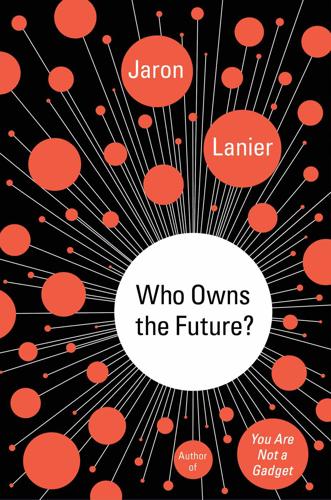
Who Owns the Future?
by
Jaron Lanier
Published 6 May 2013
Naturally, one might ask why big business data is still so often used on faith, even after it has failed spectacularly. The answer is of course that big business data happens to facilitate superquick and vast near-term accumulations of wealth and influence. Game On Why is big business data often flawed? The unreliability of big business data is a collective project we all participate in. Blame the hive mind. A wannabe Siren Server might enjoy honest access to data at first, as if it were an invisible observer, but if it becomes successful enough to become a real Siren Server, then everything changes. A tide of manipulation rises, and the data gathered becomes suspect. If the server is based on reviews, many of them will suddenly start to be fakes.
…
Such illusions might be erected by clever third parties trying to get a little of the action, or they might be wielded by individuals trying to get some small personal advantage out of the online world. In either case, once a Siren Server starts to get fooled by phony data, a dance begins. The Server hires mathematicians and Artificial Intelligence experts who try to use pure logic at a distance to filter out the lies. But to lie is not to be dumb. An arms race inevitably ensues, in which the hive mind of fakers attempts to outsmart a few clever programmers, and the balance of power shifts day to day. What is remarkable is not that the same old games people have always played continue to be played over digital networks, but that smart entrepreneurs continue to be drawn into the illusion that this time they’ll be the only one playing the game, while everyone else will passively accept being studied for the profit of a distant observer.

Artificial You: AI and the Future of Your Mind
by
Susan Schneider
Published 1 Oct 2019
120 CONCLUSION: The Afterlife of the Brain 148 APPENDIX: Transhumanism 151 ACKNOWLEDGMENTS 153 NOTES 157 REFERENCES 165 INDEX 173 ARTIFICIAL YOU INTRODUCTION It is 2045. Today, you are out shopping. Your first stop is the Center for Mind Design. As you walk in, a large menu stands before you. It lists brain enhancements with funky names. “Hive Mind” is a brain chip allowing you to experience the innermost thoughts of your loved ones. “Zen Garden” is a microchip for Zen master-level meditative states. “Human Calculator” gives you savant-level mathematical abilities. What would you select, if anything? Enhanced attention? Mozart-level musical abilities?
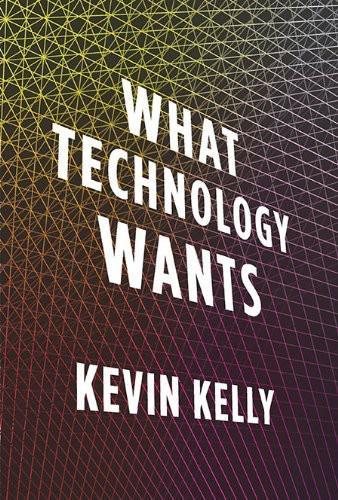
What Technology Wants
by
Kevin Kelly
Published 14 Jul 2010
The animal immune system, whose primary purpose is to distinguish between self and nonself, retains a memory of outside antigens it has encountered in the past. It learns in a Darwinian process and in a sense also anticipates future variations of antigens. And throughout the animal kingdom collective intelligence is expressed in hundreds of ways, including the famous hive minds of social insects. The manipulation, storage, and processing of information is a central theme of life. Learning erupts over and over again in the history of evolution, as if it were a force waiting to be released. A charismatic version of intelligence—the kind of anthropomorphic smartness we associate with apes—evolved not just in primates but in at least two other unrelated taxa: whales and birds.
…
Planetary-scale problems will require some kind of planetary-scale mind; complex networks made of trillions of active nodes will require network intelligences; routine mechanical operations will need nonhuman precision in calculations. Since our own brains are such poor thinkers in terms of probability, we’d really benefit by discovering an intelligence at ease with statistics. We’ll need all varieties of thinking tools. An off-the-grid stand-alone AI will be handicapped compared with a hive-mind supercomputer. It can’t learn as fast, as broadly, or as smartly as one plugged into six billion human minds, several quintillion online transistors, hundreds of exabytes of real-life data, and the self-correcting feedback loops of the entire civilization. But a consumer may still choose to pay the penalty of lesser smarts in order to have the mobility of an isolated AI in distant places, or for privacy reasons.

Finding Community: How to Join an Ecovillage or Intentional Community
by
Diana Leafe Christian
Published 14 Jun 2007
As every Trekkie knows, after the half-human/halfmachine Borg suddenly materialize and deliver their chilling announcement, they beam you off to their starship where you are biomechanically morphed into a cyborg yourself — destined to an immortal, never-escape existence as one more cell in the Borg’s “hive mind.” Fortunately, this won’t happen. Unlike with the Borg on Star Trek, people who join communities don’t get assimilated, and in most groups community members don’t all think alike. Members of any given community do hold many more values and beliefs in common than a comparable group of typical neighbors, since the community is organized around a common vision or purpose. However, disagreements about what they want or how to spend their funds are a common occurrence in most communities, just as in the wider society. Community members certainly don’t all live in a “hive mind,” but can have widely diverging opinions.

The People vs Tech: How the Internet Is Killing Democracy (And How We Save It)
by
Jamie Bartlett
Published 4 Apr 2018
Anyone who has spent more than five minutes on Twitter would recognise Charles Mackay’s definition. The modern technologist, however, doesn’t believe the mob is faceless and mad, but rather wise and just: he reads books like Howard Rheingold’s Smart Mobs and talks endlessly about ‘crowd sourcing’ solutions and ‘the wisdom of the crowd’. He trusts the ‘hive mind’. Crowds certainly are wise when it comes to solving technical, non-value based problems like fixing computer bugs, but politics is very different.4 Humans were perfectly good at killing each other because of politics long before the iPhone turned up. But Silicon Valley, in its optimistic quest for a global village of total information and connectivity, has inadvertently let tribalism back out of the cage that modern representative democracy built for it.
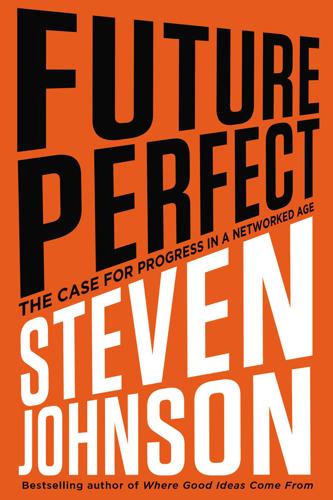
Future Perfect: The Case for Progress in a Networked Age
by
Steven Johnson
Published 14 Jul 2012
For example, officials now know that the first warm day of spring will bring a surge in use of the city’s chlorofluorocarbon recycling programs. The connection is logical once you think about it: The hot weather inspires people to upgrade their air conditioners, and they don’t want to just leave the old, Freon-filled units out on the street. The 311 hive mind is deft not just at detecting reliable patterns but also at providing insights when the normal patterns have been disrupted. Clusters of calls about food-borne illness or sanitary problems from the same restaurant now trigger a rapid response from the city’s health department. And during emergencies, callers help provide real-time insight into what’s really happening.

Excession
by
Iain M. Banks
Published 14 Jan 2011
He'd tried physical alteration (he'd been quite handsome, for a while), he'd tried being female (she'd been quite pretty, she'd been told), he'd tried moving away from where he'd been brought up (he'd moved half the galaxy away to an Orbital quite different but every bit as pleasant as his home) and he'd tried a life lived adream (he'd been a merman prince in a water-filled space ship fighting an evil machine-hive mind, and according to the scenario was supposed to woo the warrior princess of another clan) but in all the things he'd tried he had never felt anything else than awkward: being handsome was worse than being gangly and bumbling because his body felt like a lie he was wearing; being a woman was the same, and somehow embarrassing, as well, as though it was somebody else's body he had kidnapped from inside; moving away just left him terrified of having to explain to people why he'd wanted to leave home in the first place, and living in a dream scenario all day and night just felt wrong; he had a horror of immersing himself in that virtual world as completely as his merman did in his watery realm and thus losing hold of what he felt was a tenuous grip on reality at the best of times, and so he'd lived the scenario with the nagging sensation that he was just a pet fish in somebody else's fish tank, swimming in circles through the prettified ruins of sunken castles.
…
He'd tried physical alteration (he'd been quite handsome, for a while), he'd tried being female (she'd been quite pretty, she'd been told), he'd tried moving away from where he'd been brought up (he'd moved half the galaxy away to an Orbital quite different but every bit as pleasant as his home) and he'd tried a life lived adream (he'd been a merman prince in a water-filled space ship fighting an evil machine-hive mind, and according to the scenario was supposed to woo the warrior princess of another clan) but in all the things he'd tried he had never felt anything else than awkward: being handsome was worse than being gangly and bumbling because his body felt like a lie he was wearing; being a woman was the same, and somehow embarrassing, as well, as though it was somebody else's body he had kidnapped from inside; moving away just left him terrified of having to explain to people why he'd wanted to leave home in the first place, and living in a dream scenario all day and night just felt wrong; he had a horror of immersing himself in that virtual world as completely as his merman did in his watery realm and thus losing hold of what he felt was a tenuous grip on reality at the best of times, and so he'd lived the scenario with the nagging sensation that he was just a pet fish in somebody else's fish tank, swimming in circles through the prettified ruins of sunken castles. In the end, to his mortification, the princess had defected to the machine hive-mind. The plain fact was that he didn't like talking to people, he didn't like mixing with them and he didn't even like thinking about them individually. The best he could manage was when he was well away from people; then he could feel a not unpleasant craving for their company as a whole, a craving that quite vanished - to be replaced by stomach-churning dread - the instant it looked like being satisfied.
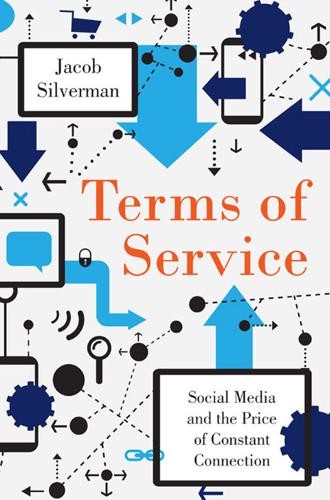
Terms of Service: Social Media and the Price of Constant Connection
by
Jacob Silverman
Published 17 Mar 2015
After the Boston Marathon bombing, the New York Post splashed two young, brown-skinned men on its cover and said that the government was looking for them. The two men were never suspects and had nothing to do with the attack; later they sued the Post for libel. It’s during major events such as the Boston bomber manhunt that the supposedly self-correcting tendencies of the Twitter hive mind are far less appealing. Indeed, the Internet is filled with would-be armchair detectives and vigilantes, who operate in uneasy accordance with journalists and law enforcement. Police departments tweet out photographs and screencaps from CCTV cameras, asking the public for help in identifying suspects.
…
The practice is flexible, as easily applied to an airline that’s mistreated a passenger as it is to a relatively unknown Twitter user from Nevada guilty of tweeting a racist epithet. Shaming remains problematic because of its close association with vigilantism and because, in its leveraging of viral channels, it can spin out of control, producing a disproportionate response. The hive mind may respond with a dozen people tut-tutting, only to then melt away, or it may be ten thousand people issuing death threats, publicizing the target’s address, calling his employer, and ensuring a permanent data trail of shame and embarrassment—what has been termed “SEO-shaming,” after the practice of gaming Internet search results.

The Vortex: A True Story of History's Deadliest Storm, an Unspeakable War, and Liberation
by
Scott Carney
and
Jason Miklian
Published 28 Mar 2022
Then, to eliminate any possible dissent from his own administration, Yahya dismissed his entire civilian cabinet. 26 Mohammad Hai and Sheikh Mujibur Rahman MANPURA AND DACCA, EAST PAKISTAN EARLY MARCH 1971 Ten weeks after the election Each night, the hordes descended. They arrived like apparitions, heard but not seen as they scurried around the floorboards. Squeaking. Gnawing. Scratching. The hordes were famished, and they had acquired a taste for flesh. Like a hive mind, they chewed in shifts through the cement and broken-glass minefield meant to stop them, driven by the smell of the squirming bodies within. They raced over bare human skin by the dozens, nibbling here and there. The sensations tormented the residents as they flailed at the intruders for hours. Then, when dawn broke, the hordes vanished back into whatever holes they could find.
…
Bass, The Blood Telegram: Nixon, Kissinger, and a Forgotten Genocide (New York: Vintage, 2014), 363–64n60; Siddiqi, General Agha Mohammad Yahya Khan, 67; Choudhury The Last Days of United Pakistan, 155; author interview with Lieutenant Colonel Quazi Sajjad Ali Zahir Bir Protik. “Kill three million” Payne, Massacre, 50; Philip Hensher, “The War Bangladesh Can Never Forget,” The Independent, February 19, 2013. Then, to eliminate any Blood, The Cruel Birth of Bangladesh, 150. 26: MOHAMMAD HAI AND SHEIKH MUJIBUR RAHMAN Like a hive mind On the story of the rat infestation, see Cornelia Rohde, Catalyst: In the Wake of the Great Bhola Cyclone (Scotts Valley, CA: CreateSpace Independent Publishing Platform, 2014), 283–85. The army gave almost Author interview with Jon Rohde. The BBC no longer has the video in their archives, and Jon accidentally give the master tape to Goodwill when cleaning out some old junk, along with other keepsakes.
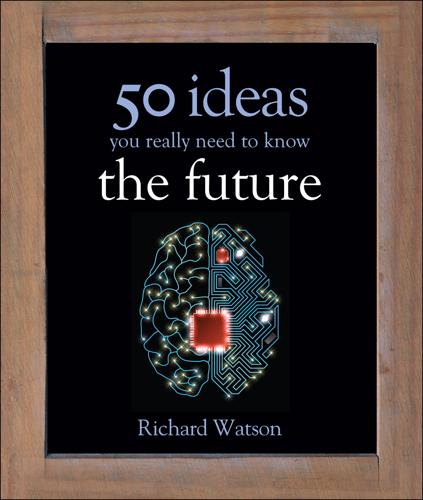
50 Future Ideas You Really Need to Know
by
Richard Watson
Published 5 Nov 2013
Rare earths A series of rare elements or metals increasingly used in high-technology machinery and devices. Smart agents Generally, software that exhibits a level of intelligence or understanding. Smart dust Very small sensors that are networked wirelessly. Swarm robotics Robots that swarm together or display crowd-like behavior. Links with swarm intelligence, collective intelligence, hive minds and so on. Telemedicine Medicine or healthcare delivered via ITC or telecommunications. Vertical farming The growing of animals or plants in vertical buildings or skyscrapers, usually in urban environments. Virtual currency Digital currency used primarily in computer gaming. Links with digital payments, micropayments, stored value, embedded currency and mobile payments.

2312
by
Kim Stanley Robinson
Published 22 May 2012
And now it’s getting more urgent, because there’s solid evidence that these qube humanoids were ordered up by other qubes—qubes in boxes or robots, or asteroid frameworks, as was usual.” “Why would they do that?” Swan asked. Wahram shrugged. “Is it bad?” Swan asked, thinking it over. “I mean, they can’t band together into some kind of hive mind creature, because of decoherence. And so ultimately they’re just people with qube minds.” “People without emotions.” “There have always been people like that. They get by.” Wahram squinted. “Actually, they don’t. But look, there’s more.” He looked at Genette, who said to Swan, “The attacks we’ve been investigating, on Terminator and the Ygassdril, both had a qubical involvement.
…
Wide streets angled out into the green fields that flitted by below them. These grassy boulevards were flanked by blocky buildings that were often faced with ceramic murals and had an Art Deco look. They passed white plazas under palm trees and remarked to each other the lush beauty, also the uniformity of style, with its hexagonal suggestion of a hive mind. A green and pleasant land. They trammed from oasis to oasis, in a regular flashing of light and shadow created by the long rows of cypress trees by the tracks. Gardens in the desert. The hyperterran look combined with the Mercury-light gravity created a dreamscape feel. Mercury would never look like this.
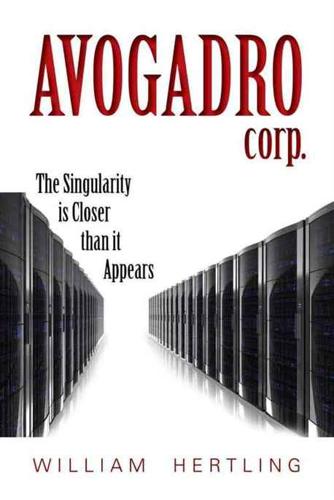
Avogadro Corp
by
William Hertling
Published 9 Apr 2014
He stayed up nights watching TV, dropping off only when he couldn’t hold his eyes open. Then the nightmares would start. But then came the night that changed everything, all because of a Star Trek: The Next Generation episode. The crew of the Enterprise had been faced with an unstoppable enemy called the Borg that had a hive mind, not totally unlike what might be happening inside ELOPe. Faced with this all powerful enemy, the crew of the Enterprise had captured one of the Borg, and developed a mental virus to implant in the Borg they captured. Their plan was to allow the captured Borg to return to its fellows, thus infecting the entire hive with the virus.
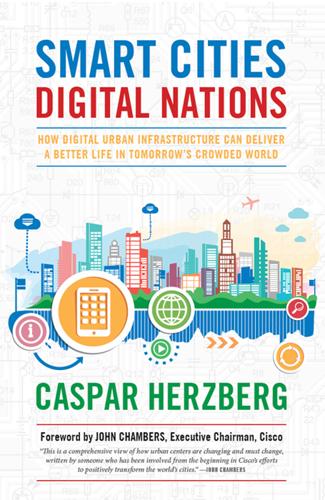
Smart Cities, Digital Nations
by
Caspar Herzberg
Published 13 Apr 2017
It is difficult to blame any Chinese citizen, who is used to saving nearly all of his pay, for being pleased with the opportunity to spend more. But consumption has its limits. Cities will need to be centers for collaboration and information, and will need to provide means to monetize those pursuits. • Population density contributes to the making of good ideas. The hive mind is an attractive place for those who are eager to collaborate, and these people tend to be young. With so many nations facing the challenge of employing populations that are growing younger (and, presently, underemployed), cities are the best opportunities. • Rather than discouraging social interaction, Internet technology seems to encourage it.
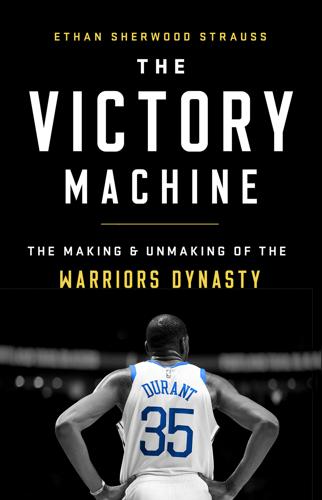
The Victory Machine: The Making and Unmaking of the Warriors Dynasty
by
Ethan Sherwood Strauss
Published 13 Apr 2020
He was being spied on, his secrets stolen and used by strangers toward ends that further complicate his life. This is indeed a crazy way to live. No individual is solely at fault for Kyrie’s travails, and that might be another frustrating aspect of living inside The Take Zone. There’s nobody to blame. It’s just the hive mind and its minions, doing what comes naturally. You are always being watched and recorded by anonymous informants. When they find what they crave, your business will become everyone’s business and you will have no specific enemy to fault for that. When the Boston Globe reporter told Irving that the fans were interested in his private conversation, Kyrie responded, “Oh the fans?
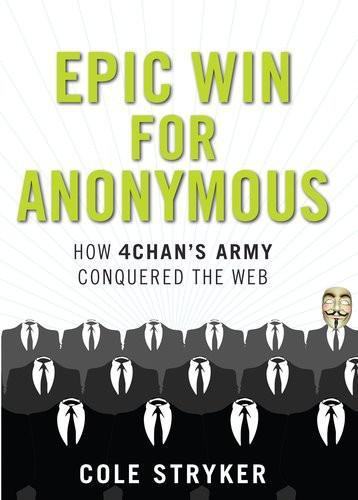
Epic Win for Anonymous: How 4chan's Army Conquered the Web
by
Cole Stryker
Published 14 Jun 2011
Humanity is working together like never before, each individual contributing something so minute as a single correction to an obscure Wikipedia entry or a photograph uploaded to Flickr. Even our Google queries help the search giant perfect its algorithms. Whether we realize it or not, we are behaving as a hive mind, and those tiny trivial inputs add up to monumental social change. Reddit 4chan’s influence in the memesphere isn’t going anywhere soon, but Reddit is definitely catching up. Reddit is currently the biggest social content aggregator, recently taking the reins from Digg after that site’s troubled redesign.
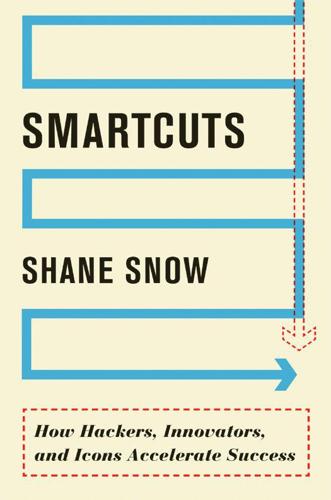
Smartcuts: How Hackers, Innovators, and Icons Accelerate Success
by
Shane Snow
Published 8 Sep 2014
Elliott said, “that the pit stop where they changed tires and topped up the fuel was pretty well identical in concept to what we do in handover.” In seven seconds, the pit crew tore off four tires, filled a tank of gas, screwed on four new tires, and leapt out of the way for the car to scream back onto the track. Working as if controlled by a hive mind, the Formula 1 crews made the GOSH staff look like monkeys fighting over ventilator tubes. “So we phoned them up.” Before long, the GOSH doctors found themselves hanging out with a Ferrari pit team in Italy. The mechanics demonstrated their process for the doctors up close and in detail. Right away the GOSH team observed several differences between the Ferrari routine and their own.
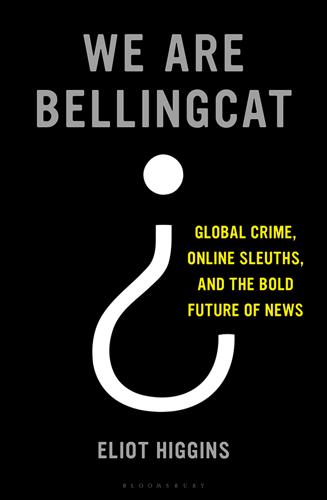
We Are Bellingcat: Global Crime, Online Sleuths, and the Bold Future of News
by
Eliot Higgins
Published 2 Mar 2021
I asked him to forward me the details of his efforts and wrote them up into an article.9 Today, Bellingcat staff and our core collaborators exchange our initial findings via an internal Slack messaging board, where we jointly decide how best to proceed before publishing our discoveries. This allows for long-term investigations rather than putting out each small fact as we uncover it. But early Bellingcat took a more organic path, led by the hive mind of amateur sleuths on Twitter, all converging around the next big question, whether geolocating a fresh photo or parsing the validity of a social-media video. That early investigative network on Twitter had various circles of involvement, starting with an outer ring of several thousand users who followed the MH17 case but rarely sought to answer questions themselves.
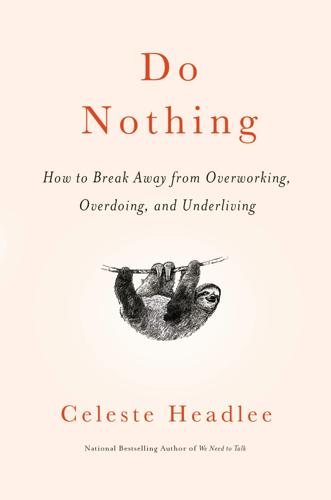
Do Nothing: How to Break Away From Overworking, Overdoing, and Underliving
by
Celeste Headlee
Published 10 Mar 2020
Work in Teams Because human beings are beautifully designed to work in conjunction and collaboration with other humans, the next change you should make is to work in teams whenever possible. Perhaps the most effective solution to our modern obsession with productivity and efficiency is to tap in to the human hive mind. In the words of Rudyard Kipling, “The strength of the pack is the wolf, and the strength of the wolf is the pack.” It may sound cool to be a “lone wolf,” but real lone wolves don’t survive as long. We have evolved to think in groups and bounce ideas off others. Analysis of data from diverse industries going back decades shows that even the most experienced expert reaches better conclusions when their recommendations are merged with the advice of less-knowledgeable people.
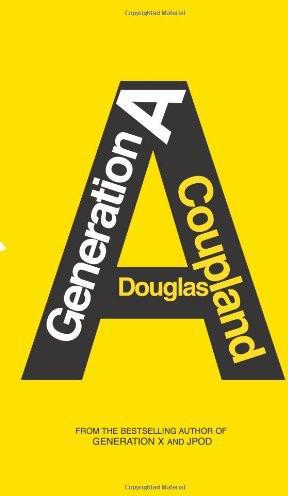
Generation A
by
Douglas Coupland
Published 2 Jan 2009
And farming your brains is much cheaper and easier than building Solon molecules from scratch.” Sam said, “This is like one of our stories. No, this is weirder than any of our stories.” I replied, “Haven’t all of you noticed that your personalities and your ideas have begun to morph into each other’s? It’s a terrible pun, but the five of you are turning into a hive mind. I think it would have happened to you anyway—your minds are somehow rigged to melt together; it’s the storytelling chemical you make—but eating each other’s brain material only sped up the process. You heard each other’s stories. The five of you almost arrived at the truth on your own. Your bodies know the truth.”

Cultish: The Language of Fanaticism
by
Amanda Montell
Published 14 Jun 2021
People were just starting to grasp digital technology, but before widespread internet and smartphones, not everybody had access to it, so it carried a certain mystery and, for followers of Heaven’s Gate, new answers to life’s oldest questions. Applewhite was obsessed with the television series Star Trek: The Next Generation, particularly the show’s hive mind of alien antagonists called the Borg. The Borg had a favorite saying: “Resistance is futile. You will be assimilated.” “Do loved that,” Frank Lyford recalled. “He espoused that hive mentality.” To match his credo, Applewhite concocted a whole Heaven’s Gate vocabulary of niche, sci-fi-esque terms.

Scotland’s Jesus: The Only Officially Non-Racist Comedian
by
Frankie Boyle
Published 23 Oct 2013
In the 70s we were told to prepare ourselves for a new world of technologically supported leisure and extended free time. What we got was call centres. The world is becoming an increasingly soulless place. We’ve replaced genuine human emotions with the communal buzz of the electronically connected hive mind, with its indistinguish-able identikit opinions about films and TV programmes we probably won’t have time to see anyway. We’ve substituted genuine wonder at the mystery and beauty of nature with a belief that trees and butterflies and human consciousness are machine-like. The problem could be one of ‘literalism’, something that philosopher Patrick Harpur believes began to creep into humanity’s thinking alongside the rise of science four hundred years ago.

Transport for Humans: Are We Nearly There Yet?
by
Pete Dyson
and
Rory Sutherland
Published 15 Jan 2021
Transport involves tasks and projects that are far too large to be completed by one person, so people must come together, typically with a range of skills, objectives and levels of seniority in a hierarchy. We often assume that groups universally outperform individuals: the wisdom of crowds, the hive mind, many brains are better than one. And this can be the case when the way that people decide follows structured diversity of thought and perspectives. For example, in a 2018 study, groups were found to outperform individuals on a controlled task that required them to match climate-change policies against climate scenarios of varying severities.19 Despite prompting, 80% of individuals failed to produce alternative arguments, whereas groups generated more self-reflection on the impacts of emissions growth.
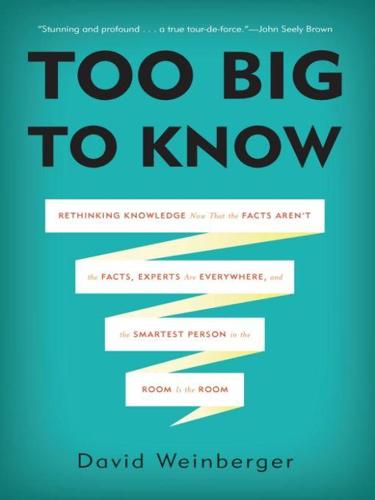
Too Big to Know: Rethinking Knowledge Now That the Facts Aren't the Facts, Experts Are Everywhere, and the Smartest Person in the Room Is the Room
by
David Weinberger
Published 14 Jul 2011
(The ORR is part of the National Oceanic and Atmospheric Administration.) 21 Kermit Pattison, “Crowdsourcing Innovation: Q&A with Dwayne Spradlin of InnoCentive,” FastCompany, December 15, 2008, http://www.fastcompany.com/blog/kermit-pattison/fast-talk/millions-eyes-prize-qa-dwayne-spradlin-innocentive. 22 “InnoCentive Solver Develops Solution to Help Clean Up Remaining Oil from the 1989 Exxon Valdez Disaster,” InnoCentive press release, November 14, 2007, http://www.marketwire.com/press-release/InnoCentive-Solver-Develops-Solution-Help-Clean-Up-Remaining-Oil-From-1989-Exxon-Valdez-792827.htm. 23 “2010 International Contest on LTPP Data Analysis,” http://www.fhwa.dot.gov/pavement/ltpp/contest.cfm. 24 Stefanie Olsen, “DOT Proposes Contest to ‘Green’ Jet Fuel Industry,” July 10, 2008, http://news.cnet.com/8301–11128_3–9987675–54.html. 25 Adam Ash, “Deep Thoughts: The Internet, Is It a Stupid Hive Mind, or the Potential Savior of Mankind?” May 31, 2006, http://adamash.blogspot.com/2006/05/deep-thoughts-internet-is-it-stupid.html. See also Don Tapscott and Anthony D. Williams, “Ideagora, a Marketplace for Minds,” BusinessWeek, February 15, 2007. 26 Cornelia Dean, “If You Have a Problem, Ask Everyone,” New York Times, July 22, 2008, http://www.nytimes.com/2008/07/22/science/22inno.html. 27 The British National Maritime Museum has an excellent article on Harrison, by J.
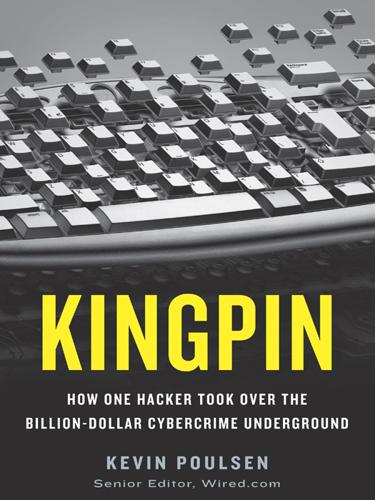
Kingpin: How One Hacker Took Over the Billion-Dollar Cybercrime Underground
by
Kevin Poulsen
Published 22 Feb 2011
But deep in the PC’s subconscious, it was joining a hacker’s private army. The malware was programmed to automatically log in to a preselected IRC room, announce itself, and then linger to accept commands broadcast by its master in the chat channel. Thousands of computers would report at once, forming a kind of hive mind called a botnet. With one line of text, a hacker could activate keystroke loggers on all the machines to capture passwords and credit card numbers. He could instruct the computers to open secret e-mail proxies to launder spam. Worst of all, he could direct all those PCs to simultaneously flood a targeted website with traffic—a distributed denial-of-service attack that could take down a top site for hours while network administrators blocked each IP address one at a time.
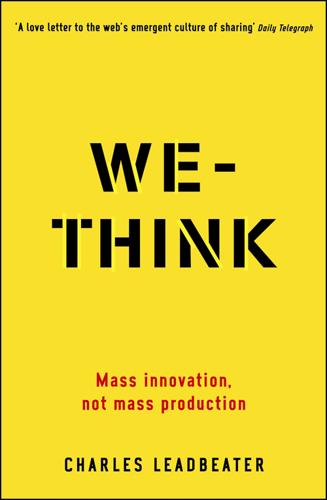
We-Think: Mass Innovation, Not Mass Production
by
Charles Leadbeater
Published 9 Dec 2010
Jaron Lanier, in a widely read online essay published in May 2006, alleged that ‘digital Maoism’ was promoting collective stupidity. People were taking their lead, Lanier argued, from the all-wise ‘collective’ rather than bothering to think for themselves. His case is only strengthened by web advocates, such as Kevin Kelly, the original editor of Wired, who claim that the web is creating a ‘hive mind’, that of an anonymous collective in which individuals are like bees or ants. The American sociologist Sherry Turkle has echoed these fears, questioning whether young people will form a sharp sense of individual identity if they are tethered to their phone and social relationships, unable to be alone and to reflect on what matters to them because they are acting up to the online audience that constantly accompanies them.

The New Rules of War: Victory in the Age of Durable Disorder
by
Sean McFate
Published 22 Jan 2019
Autocracies have developed active measures to disrupt democracies, so the West should return the favor. Ridicule works exceptionally well against autocrats, who must manufacture a cult of personality and fear to stay in power. Democracies should “unmanufacture” it. Seek to corrupt the enemy’s trusted information sources and its intelligence agencies. The Russian general staff is said to have a hive mind. “Unhive” it by sowing uncertainty, causing its officers to make bad decisions that can be exploited. Over time, this uncertainty may even catalyze internal dissent, cracking the edifice of autocracy. Counter terrorist ideologies through covert denigration campaigns that make the world laugh at the terrorists’ cause.

New Dark Age: Technology and the End of the Future
by
James Bridle
Published 18 Jun 2018
New Dark Age New Dark Age Technology and the End of the Future James Bridle First published by Verso 2018 © James Bridle 2018 All rights reserved The moral rights of the author have been asserted 1 3 5 7 9 10 8 6 4 2 Verso UK: 6 Meard Street, London W1F 0EG US: 20 Jay Street, Suite 1010, Brooklyn, NY 11201 versobooks.com Verso is the imprint of New Left Books ISBN-13: 978-1-78663-547-1 ISBN-13: 978-1-78663-549-5 (UK EBK) ISBN-13: 978-1-78663-550-1 (US EBK) British Library Cataloguing in Publication Data A catalogue record for this book is available from the British Library Library of Congress Cataloging-in-Publication Data A catalog record for this book is available from the Library of Congress Typeset in Sabon by Biblichor Ltd, Edinburgh Printed and bound by CPI Group (UK) Ltd, Croydon, CR0 4YY For Navine Contents 1.Chasm 2.Computation 3.Climate 4.Calculation 5.Complexity 6.Cognition 7.Complicity 8.Conspiracy 9.Concurrency 10.Cloud Acknowledgements Notes Index 1 Chasm ‘If only technology could invent some way of getting in touch with you in an emergency,’ said my computer, repeatedly. Following the 2016 US election result, along with several other people I know and perhaps prompted by the hive mind of social media, I started re-watching The West Wing: an exercise in hopeless nostalgia. It didn’t help, but I got into the habit, when alone, of watching an episode or two in the evenings, after work, or on planes. After reading the latest apocalyptic research papers on climate change, total surveillance, and the uncertainties of the global political situation, a little neoliberal chamber play from the noughties wasn’t the worst thing to sink into.

Brave New Work: Are You Ready to Reinvent Your Organization?
by
Aaron Dignan
Published 1 Feb 2019
Professor Melanie Mitchell defines a complex adaptive system as “a system in which large networks of components with no central control and simple rules of operation give rise to complex collective behavior, sophisticated information processing, and adaptation via learning or evolution.” In this way, a complex adaptive system is a kind of hive mind, capable of solving problems the individual agents cannot. Organizations are no different. Every single activity we conduct at work—recruiting, sales, accounting—is dependent on information processing and knowledge transfer. If we can tap into our collective intelligence, we can accomplish amazing things.

Suggestible You: The Curious Science of Your Brain's Ability to Deceive, Transform, and Heal
by
Erik Vance
Published 14 Sep 2016
The show starts when they are queuing outside to get in,” he says. And if the venue isn’t full, Newton figures out a way to fill it, even giving away tickets. This not only makes the audience think the man on stage is a serious professional, it also creates a sense of community within the building, a belief in the hive mind of the viewers that the hypnotist has total power. Before each performance, Newton comes onstage to get the crowd warmed up. Different performers have different tricks, but the key is to get the audience to act as one: Get them to stand up and then sit down on your command. Get them to laugh together.

You Are Not So Smart
by
David McRaney
Published 20 Sep 2011
Are leisure suits the ultimate fashion statement? Is Inception , like, the best movie ever made? Without scientific analysis, ideas like these can go from true to false to maybe and back again because they are socially defined. They depend on subjective feelings and a vacillating consensus of beliefs. The social hive mind of the moment creates a reality all its own that is separate from the reality of things like lunar eclipses and the radius of a circle. You swim in a sea of social ideas and mental constructs shared by a culture both ancient and popular. When these ideas become beliefs, and then those beliefs become actions, the logical and measurable side of reality changes to match.

The Manager’s Path
by
Camille Fournier
Published 7 Mar 2017
Are you doing anything other than listening to the words coming out of his mouth? If so, you’re not listening well. One of the early lessons in leadership, whether it is via direct management or indirect influence, is that people are not good at saying precisely what they mean in a way that others can exactly understand. We have yet to achieve Borg hive mind or Vulcan mind meld, so we’re constantly pushing complex ideas through the eye of the needle of language. And language is not something that most engineers have mastered in nuance and interpretation. So listening goes beyond hearing the words your mentee is saying. When you’re face to face with another person, you also have to interpret his body language and the way he’s saying those words.

Emergence
by
Steven Johnson
Yes, there are book groups and public readings, but most of the production and reception of books involves another social architecture, not solitary exactly, but more like a series of one-on-one exchanges: between writer and editor; writer and reader; writer and critic. (Not to mention the one-on-one interviews that are so crucial to a book like this one.) I remember running up against this tension as I was writing Emergence in 2000 and early 2001; here was a book that was a full-throated celebration of the hive mind, but the medium of the book itself—the medium that I most loved, and around which I was beginning to build a career—seemed to belong to a different class: a dialogue between individuals, not a chorus. But then the book came out, and the world surprised me: the swarm in the story of Emergence the book didn’t manifest until its readers started to do things with it.

Death of the Liberal Class
by
Chris Hedges
Published 14 May 2010
Do they start converging on legislatures and take them over? I don’t know, maybe. I shouldn’t speak it. It is almost a curse to imagine these things. But any intelligent person can see the scenario I am afraid to see. There is a potential here for very bad stuff to happen. The utopian promoters of the Internet insist that the “hive mind,” the vast virtual collective, will propel us toward a brave new world. Lanier dismisses such visions as fantasies that allow many well-intentioned people to be seduced by an evolving nightmare. “The crowd phenomenon exists, but the hive does not exist,” Lanier explained: All there is, is a crowd phenomenon, which can often be dangerous.

Here Comes Everybody: The Power of Organizing Without Organizations
by
Clay Shirky
Published 28 Feb 2008
This pragmatism often comes as a shock to people who hold up Wikipedia as a beacon of pure openness, but the curious fact is that many of Wikipedia’s most vociferous boosters actually don’t know much about its inner workings and want to regard it, wrongly, as an experiment in communal anarchy. The people most enamored of describing Wikipedia as the product of a free-form hive mind don’t understand how Wikipedia actually works. It is the product not of collectivism but of unending argumentation. The articles grow not from harmonious thought but from constant scrutiny and emendation. The idea behind Nupedia was that it should be possible to improve on traditional encyclopedias by keeping the process but dropping the commercial aspect.
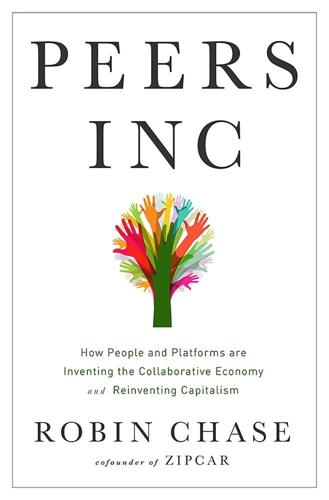
Peers Inc: How People and Platforms Are Inventing the Collaborative Economy and Reinventing Capitalism
by
Robin Chase
Published 14 May 2015
Quirky understands that the power to innovate and be creative lies with individuals, while the company is better at guiding and ultimately producing consumer goods—taking over all the complex steps that lie between the idea and a mass-market product. Quirky does everything it can to support close collaboration. When Josh Dean profiled the company in Inc. magazine, he made a compelling case for what a good platform for participation does: If all Quirky did was tap a motivated hive mind for latent ideas that fill small and important market gaps, it would be a clever company. But it does something far bigger and more complicated. Those ideas need to become things, and that’s where Quirky really brings the muscle. Immediately after a product has been selected [during evaluation], it moves on to design and conception, where Quirky’s industrial designers and engineers use several million dollars’ worth of prototyping equipment to realize and refine what most likely arrived on their desks as a thinly sketched idea.
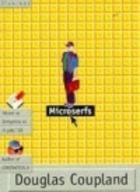
Microserfs
by
Douglas Coupland
Published 14 Feb 1995
* * * Susan's dating some guy from Intel, but I don't think it's going to work, because Intel's corporate culture is so weird. "They're like Borgs," says Susan. "They have one mind. They're like this sci-fi movie I once saw where if one child in a village learned something, all the other children learned it simultaneously. It's a hive mind. You get the feeling there's a sub-audible tape playing that says, resistance is futile . . . you WILL assimilate . . ." And then Susan got thoughtful and said, "The more I think about it, it's actually like Microsoft. In fact all huge tech firms are like Microsoft." * * * Went out for a drink with Ethan at the Empire Tap Room on Emerson Street.
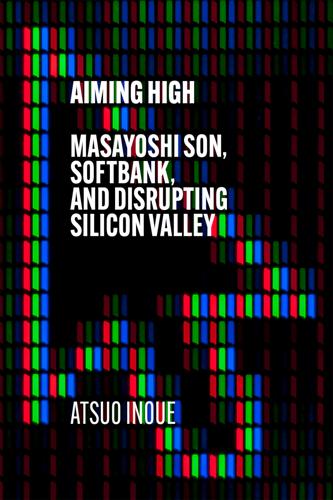
Aiming High: Masayoshi Son, SoftBank, and Disrupting Silicon Valley
by
Atsuo Inoue
Published 18 Nov 2021
Chapter 33 The future 300 years from now It was proof of Twitter’s mass adoption. When Son created his profile on the platform on 24 December 2009 his number of followers went through the roof, and he was buffeted by questions asking about his vision for the company by his own employees via the medium. He frequently referred to the social media network as a ‘hive mind’. By April 2011, Son had more than a million followers on Twitter – the highest number of any Japanese user (at the time of translating in April 2021 this had increased to 2.8 million). When one of his followers suggested organising a ‘SoftBank employee canteen experience’ Son retweeted this, commenting, ‘Hiya Aono, I’ll do it.

Maphead: Charting the Wide, Weird World of Geography Wonks
by
Ken Jennings
Published 19 Sep 2011
“It’s a very complicated system, when you think of all the millions of people that are involved in it. That’s how I put it together, and that’s why it worked so damn well. It was engineered to be that from day one.” “So you see the whole activity as a life-form that spreads on its own? Are we all little neurons in this big brain?” “That’s right!” But for all my absorption into the geocaching hive-mind, there’s one coveted caching honor I don’t have: an FTF, or “First to Find.” Some cachers specialize in finding virgin caches—being the first to sign a newly placed hide. If twenty-four-hour power cachers are the marathoners of the geoworld, then First-to-Find hounds are its sprinters. Bryan Fix, a Portland, Oregon, native who caches as “Scubasonic,” has a near-superhuman FTF track record: more than nine hundred FTFs notched, fully 14 percent of his finds.

Singularity Rising: Surviving and Thriving in a Smarter, Richer, and More Dangerous World
by
James D. Miller
Published 14 Jun 2012
Jaeggi, Susanne M., Barbara Studer-Luethi, Martin Buschkuehl, Yi-Fen Su, John Jonides, and Walter J. Perrig. 2010. “The Relationship between n-back Performance and Matrix Reasoning—Implications for Training and Transfer.” Intelligence 38 (6): 625—35. Jones, Garett. Interview with James D. Miller, June 30, 2011a. Jones, Garett. 2011b. “National IQ and National Productivity: The Hive Mind Across Asia.” Asian Development Review 28 (1): 51—71. Kanazawa, Satoshi. 2006. “IQ and the Wealth of States.” Intelligence 34 (6): 593—600. Kanazawa, Satoshi. 2011. “Intelligence and Physical Attractiveness.” Intelligence 39 (1): 7—14. Kaplan, Karen, and Denise Gellene. December 20, 2007. “Forget Sports Doping.

Truths, Half Truths and Little White Lies
by
Nick Frost
Published 7 Oct 2015
The whole kitchen can fall or thrive on the strength of their Grill Man. At times on busy nights you could have fifty things on that griddle all at different points of readiness. Like most things that involve a lot of people, communication is the key. When it’s flowing and going well it feels amazing. We’re all one beautiful Ugandan hive mind moving as one, making sure all the items the waiters need find their way onto one big tray all at the same time. When it wasn’t that, you were fucked, hard and quick. Although I liked working in the kitchen more than I’d liked working on the floor, it had its downsides. The worst one was the clean-up after a busy night, having to degrease that griddle and the floor and every other bit of your section was a pain in the potty-hole.
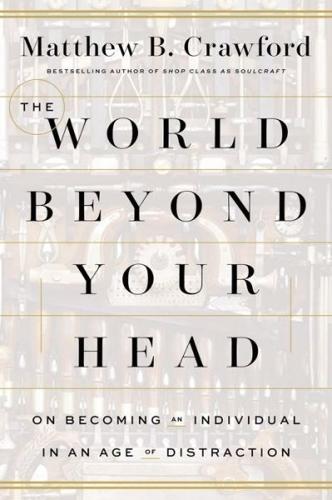
The World Beyond Your Head: On Becoming an Individual in an Age of Distraction
by
Matthew B. Crawford
Published 29 Mar 2015
The effect of this publicity was to make no place safe from the idea of normalcy.5 INDIVIDUALITY IS PASSÉ Merely to raise concern about the fate of individuality in contemporary culture is probably to appear old-fashioned. It would seem to be a 1950s through 1970s sort of preoccupation, the stuff of The Catcher in the Rye or the cigarette and hi-fi advertisements in your dad’s old Playboys. “Conformity” was the great worry of half a century ago. Now we are fascinated with “the wisdom of crowds” and “the hive mind.” We are told that there is a superior global intelligence arising in the Web itself. This collective mind is more meta, more synoptic and synthetic, than any one of us, and aren’t these the defining features of intelligence? Of course all this crowd-loving lines up pretty well with Silicon Valley’s distaste for the concept of intellectual property, and with the fact that there is a lot more money to be made as an aggregator of “content” than as a producer of it.

The Rapture of the Nerds
by
Cory Doctorow
and
Charles Stross
Published 3 Sep 2012
He leans against the wall, throat raw as the ambassador chatters to the ant colony—biological carriers for the engines of singularity, its own ancestral bootstrap code—and he can just barely grasp what’s going on. There are complex emotions here, regret and loss and irony and schadenfreude and things for which human languages hold no words, and he feels very stupid and very small as he eavesdrops on the discourse between the two hive minds. Which is, when the chips are down, a very small discourse, for the ambassador doesn’t have enough bandwidth to transmit everything the ants have ever stored: it’s just a synchronization node, the key that allows the Hypercolony to talk to the cloud in orbit high above it. And Bonnie is still dead, for all that something that remembers being her is waking up upstairs, and he’s still lying here in a cell waiting to be chopped up by barbarians, and there’s something really weirdly wrong with the way he feels in his body, as if the ants have been making impromptu modifications, and as the ambassador says good-bye to the ants, a sense of despair fills him— The door opens.
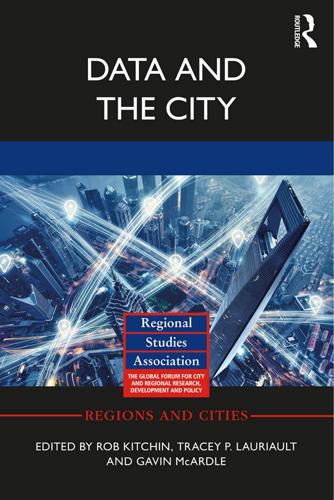
Data and the City
by
Rob Kitchin,Tracey P. Lauriault,Gavin McArdle
Published 2 Aug 2017
Thatcher, J., O’Sullivan, D. and Mahmoudi, D. (2016) ‘Data colonialism through accumulation by dispossession: New metaphors for daily data’, Environment and Planning D. doi:10.1177/0263775816633195. Townsend, A.M. (2013) Smart Cities. New York: W.W. Norton. Wolcott, J. (2013) ‘Wired up! Ready to go!’ Vanity Fair. Available from: www.vanityfair. com/culture/2013/02/quantified-self-hive-mind-weight-watchers [accessed 10 February 2017]. Zetter, K. (2008) ‘Six-year-old news story causes united airlines stock to plummet – Update Google placed wrong date on story’, Wired. Available from: www.wired.com/2008/09/ six-year-old-st/ [accessed 10 February 2017]. Zittrain, J. (2012) ‘Meme patrol: “When something online is free, you’re not the customer, you’re the product”’, The Future of the Internet and How to Stop It.

The Truth Machine: The Blockchain and the Future of Everything
by
Paul Vigna
and
Michael J. Casey
Published 27 Feb 2018
Builders of open platforms, Wilson wrote, need no longer be limited to universities, government institutes, or other non-profit entities that don’t need to keep shareholders happy. So, whereas those entities always struggled to compete for engineering talent with for-profit creators of the Internet’s commercial applications, platforms like Ethereum can now attract the best of the best. They can quickly tap into a “hive mind” of creative power across a global network of open-source coder communities. This speaks to our broader notion that tokens, by incentivizing the preservation of public goods, might help humanity solve the Tragedy of the Commons, a centuries-in-the-making shift in economic reality. Though it is still tiny in comparison to traditional capital markets and will no doubt look quite different if and when the bubble bursts, this ecosystem of tokens and open platforms is starting to look like the map of a new, decentralized economic future.

Cataloging the World: Paul Otlet and the Birth of the Information Age
by
Alex Wright
Published 6 Jun 2014
If you believe the former then any program runs the risk of being wrong. And if you believe the latter any system you devise will be artificial and dangerously top-down. The essay distills a prevalent mindset on the Web: that cataloging and classification are antiquated models, that the truth is relative, and that the hive mind of the collective intellect will sort everything out. It’s an appealing notion, but in practical terms crowdsourced classification, which is what this represents, may prove no less a fantasy than Otlet’s dream of a world government managing the world’s intellectual output. For several years in the mid-2000s, Web cognoscenti held out high hope for so-called folksonomies (a neologism coined by Thomas Vanderwal), participatory tagging systems in which users classify material en masse using open-ended keywords, rather than relying on expert cataloging systems.

A New History of the Future in 100 Objects: A Fiction
by
Adrian Hon
Published 5 Oct 2020
Millions of computer-science graduates wondered what had happened to the promises of a safe career as they replicated and automated their way through the economy. Anything they produced that was remotely original was copied within weeks or months. It was hard to stay ahead of the curve, but a few individuals and corporations managed it, insulated by thick layers of capital and connections. Others, such as the amplified teams and the hive minds, were so fast they looked like they were cheating. These winners were unaccountable, transnational, transplanetary. Hard to understand. Hardly human. But even they weren’t invulnerable, their fear belied by their desperate grip on the last vestiges of an unfree market. They wielded patents, copyrights, monopolies, planned obsolescence, addiction, locked-in ecosystems, regulatory capture, political corruption, advertising, and lobbying.

Utopia Is Creepy: And Other Provocations
by
Nicholas Carr
Published 5 Sep 2016
The name seemed to fit the provisional, serve-it-raw quality of online writing at the time. Blogging has since been subsumed into journalism—it’s lost its personality—but back then it did feel like something new in the world, a literary frontier. The collectivist claptrap about “conversational media” and “hive minds” that came to surround the blogosphere missed the point. Blogs were crankily personal productions. They were diaries written in public, running commentaries on whatever the writer happened to be reading or watching or thinking about at the moment. As one of the form’s pioneers, Andrew Sullivan, put it, “You just say what the hell you want.”
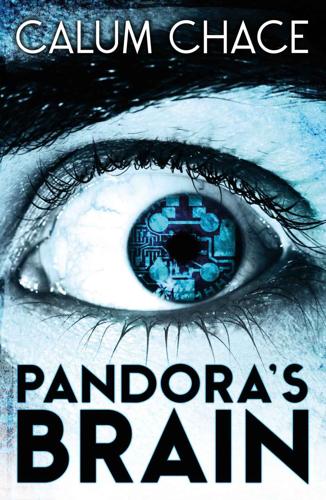
Pandora's Brain
by
Calum Chace
Published 4 Feb 2014
‘So,’ Matt continued, ‘if we do manage to upload human minds, perhaps their components will start to separate a little, and re-combine in different ways. After all, they will probably be hosted at least partially in the cloud for safety reasons. Perhaps if we do manage to upload, then the destination will be some kind of hive mind.’ ‘It sounds as though you’ve been inspired by your experiences to read around the subject, Matt,’ Ross teased him. ‘I’m sure your tutors will be impressed.’ Matt laughed. ‘They’d probably be more impressed if I stuck to maths – at least until I’ve finished my degree.’ ‘I’m sure they’ll cut you a bit of slack, given what you’ve been through.’

This Will Make You Smarter: 150 New Scientific Concepts to Improve Your Thinking
by
John Brockman
Published 14 Feb 2012
Human beings are impossibly complex tarballs of muscle, blood, bone, breath, and electrical pulses that travel through nerves and neurons; we are bundles of electrical pulses carrying payloads, pings hitting servers. And our identities are inextricably connected to our environments: No story can be told without a setting. My generation is the last generation of human beings who were born into a pre-Internet world but who matured in tandem with that great networked hive-mind. In the course of my work online, committing new memories to network mind each day, I have come to understand that our shared memory of events, truths, biography, and fact—all of this shifts and ebbs and flows, just as our most personal memories do. Ever-edited Wikipedia replaces paper encyclopedias.

How Not to Network a Nation: The Uneasy History of the Soviet Internet (Information Policy)
by
Benjamin Peters
Published 2 Jun 2016
Both the Internet and the Soviet command economy promise the revolutionary realization of the means for socialist or collectivist production on a mass scale. In the rhetoric of networking collective consciousness and crowd-sourced collaboration, we see the unlikely alliance of Wired editor Kevin Kelly’s hive mind, open-source software promoter Eric Raymond’s bazaar, and Marxist revolutionary Leon Trotsky’s collective farm.9 Long before Internet enthusiasts were around, Soviet enthusiasts were promising that workers (users) could meet the needs of the masses (crowds) through collective modes of resource sharing and collaboration (peer-to-peer production).

Dark, Salt, Clear: Life in a Cornish Fishing Town
by
Lamorna Ash
Published 1 Apr 2020
Outside I am met by a gaping black stillness, as if the air itself were letting out a large exhalation of breath to recover from the scene it has just witnessed. I stand on my tiptoes to try and catch sight of the pilchards swarming below in the water. In the gloom, I can see almost nothing, but fancy I sense the presence of a great hive-mind teeming below us. Out of the aircraft hangar of silence comes a single screech like a crack of lightening. The sound intensifies until there blows through the night a whole chorus of screaming. It sounds like insanity, how I imagine madness would speak. And then, there appears out of the darkness a clyne in the form of what must be tens of hundreds of seagulls heading right for our nets like a flight of kamikaze pilots.

The Constitution of Knowledge: A Defense of Truth
by
Jonathan Rauch
Published 21 Jun 2021
There were some things, I learned, that we—we, as professionals—do: prize accuracy; seek a comment from a person before publishing something about her; prefer on-record information; consult multiple sources with varied viewpoints; abjure jargon, long-windedness, extravagance, and opinion (except in sports writing, which seemed to require all of the above). There were other things, I learned, that we do not do: pay for information, accept gifts from sources, betray confidentiality, tolerate meddling from the ad department. As a young journalist, I was being rebuilt, reshaped, into a worker ant in humanity’s hive-mind, humans’ most important and beneficent creation. Without realizing it at the time, I was being inducted into a community, the reality-based community—the same community into which Socrates was inducting Theaetetus so long ago. I was learning the Constitution of Knowledge. An Epistemic Crisis When Americans think about how we find truth amid a world full of discordant viewpoints, we usually turn to a metaphor, that of the marketplace of ideas.
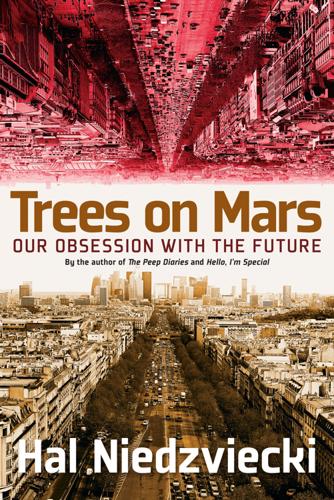
Trees on Mars: Our Obsession With the Future
by
Hal Niedzviecki
Published 15 Mar 2015
This project features “a coherent and cumulative process that collects and assesses judgments from over 3,500 people” who are invited into the project via “U.N. Organizations, governments, corporations, NGOs, universities, and individuals from around the world.”11 Their goal, too, is the building of a kind of massive hive mind of crowdsourced pundits—a postmodern oracle to soothe the fragmentation of our age by converting the mystery of future into information. Sensing that interest in the psychology of prediction and future perception has never been greater, I again check in with social psychologist Cheryl Wakslak, who teaches and researches at the University of Southern California Marshall School of Business in Los Angeles and has a PhD in psychology from New York University.

Sandworm: A New Era of Cyberwar and the Hunt for the Kremlin's Most Dangerous Hackers
by
Andy Greenberg
Published 5 Nov 2019
Army base in the west of the country whose role as an intelligence operation was at the time secret and would only later be revealed in the classified documents leaked by the NSA whistle-blower Edward Snowden. 9 THE DELEGATION Rob Lee describes starting his job at the NSA as something like connecting his brain to a vast, ultra-intelligent hive mind. Suddenly he had access to not only expert colleagues but the agency’s corpus of classified knowledge, as well as its vast intelligence collection abilities. Lee, of course, says little about the details of where that intelligence came from. But thanks in part to Edward Snowden, we know that it included a broad array of secret data-gathering tools, labeled broadly as “signals intelligence,” or “sigint,” that ranged from the ability to siphon vast quantities of raw internet data from undersea cables to hacking enemy systems administrators and looking over their shoulders at private networks.

A Small Farm Future: Making the Case for a Society Built Around Local Economies, Self-Provisioning, Agricultural Diversity and a Shared Earth
by
Chris Smaje
Published 14 Aug 2020
It encompasses a popular notion of capitalism as market exchange, the sum of innumerable transactions with no higher purpose or guiding hand emerging from the bounded rationality of people acting in their own immediate here and now. The unconstrained vision has usually been associated with the political left and its ideas of remoulding people to work collectively, achieving new goals and great things. But these certainties are now dissolving. The neoliberal turn in global capitalism invests the hive mind of ‘the market’ itself with a kind of limit-busting, self-perfecting intelligence that brooks no opposition to any constraints human reason tries to put around it. And various strands of unconstrained leftism sign themselves up to this programme, becoming almost indistinguishable from the capitalism they supposedly reject.

Pure Invention: How Japan's Pop Culture Conquered the World
by
Matt Alt
Published 14 Apr 2020
Following the instructions of his anonymous online advisors, he gets a haircut, updates his wardrobe, and scouts out date spots. At one point he even puts his nerd knowledge to work, using his computer skills to impress his new girlfriend by fixing her PC. After two months of incremental progress, reported in painstaking detail, Train Man announces that he plans to propose to Hermès. More advice floods in from the hive mind—a collective, digital Cyrano de Bergerac. She accepts! The Poison Men erupt in celebration, congratulating the couple with a flood of posts filled with elaborate emoticon art. After thanking the participants, Train Man disappears from the boards, never to be seen again. He is no longer one of them.

News and How to Use It: What to Believe in a Fake News World
by
Alan Rusbridger
Published 26 Nov 2020
Anonymous journalism (continued to this day in editorial columns and the Economist) came with the authority of the newspaper itself. The Economist, addressing why it has never identified individual journalists, explained its rationale in 2013: ‘It allows many writers to speak with a collective voice . . . articles are often the work of The Economist’s hive mind . . . The main reason for anonymity, however, is a belief that what is written is more important than who writes it.’ This view prevailed well into the twentieth century, with the London Times resisting attribution into the late 1960s. But by the seventies, bylines on all but the shortest of newspaper-filler stories were routine.

The Deepest Map
by
Laura Trethewey
Published 15 May 2023
“I don’t believe it’s a reflection that the grid is that much worse than a few years ago,” she said. “I think it’s a reflection of the fact that so many people are now using the grid.” Seabed 2030 is eager to hear about the mistakes and use the power of the crowd, a little like the way Wikipedia editors use the hive mind to power the world’s free online encyclopedia. Most errors are mundane and can be tracked back to human error, but some intentional errors do crop up now and again, left behind by the Cold War era of cartographic censorship. Today every American with a smartphone uses the Global Positioning System (GPS), but not too long ago, access to GPS was heavily restricted.
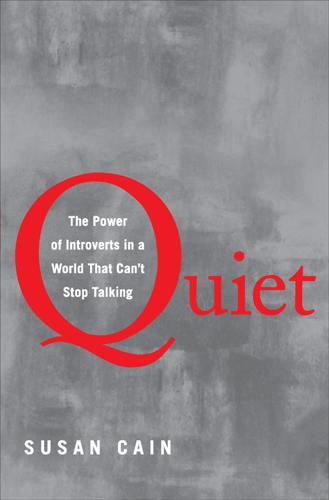
Quiet: The Power of Introverts in a World That Can't Stop Talking
by
Susan Cain
Published 24 Jan 2012
On the Internet, wondrous creations were produced via shared brainpower: Linux, the open-source operating system; Wikipedia, the online encyclopedia; MoveOn.org, the grassroots political movement. These collective productions, exponentially greater than the sum of their parts, were so awe-inspiring that we came to revere the hive mind, the wisdom of crowds, the miracle of crowdsourcing. Collaboration became a sacred concept—the key multiplier for success. But then we took things a step further than the facts called for. We came to value transparency and to knock down walls—not only online but also in person. We failed to realize that what makes sense for the asynchronous, relatively anonymous interactions of the Internet might not work as well inside the face-to-face, politically charged, acoustically noisy confines of an open-plan office.

Why We Drive: Toward a Philosophy of the Open Road
by
Matthew B. Crawford
Published 8 Jun 2020
But for a traffic geek, the Roman intersection presents something else as well: a spectacle of improvisation and flow that is beautiful to behold as cars, buses, motorcycles, and pedestrians weave among one another. If there are rules being followed, they are not the simple kind that can be stated in a driving manual, or readily condensed for a visitor. The drivers pay attention and find their way through the mess, seeming to rely on some uncanny Italian “hive mind” capacity more than traffic lights or rules. The efficiency of it is stunning, to judge from the visual impression it makes on a visitor.1 But what about safety? According to the World Health Organization, in 2016 road fatalities in Italy were 6.3 per 100,000 vehicles, while in the United States they were 14.2 per 100,000 vehicles.

Arriving Today: From Factory to Front Door -- Why Everything Has Changed About How and What We Buy
by
Christopher Mims
Published 13 Sep 2021
The spinning jenny, Jacquard loom, and numerical machine tool, all milestones in the industrialization of manufacturing, took knowledge that used to be in the heads of skilled craftspeople and embodied it in a machine that made them redundant. Today, automation does this and more: it makes possible things that no human could accomplish without it. Amazon’s warehouses embody this to an extreme degree. Only a hive mind as vast as the millions of lines of code and massive neural networks possessed by Amazon could figure out how to get goods out of any given fulfillment center and onto the doorstep of a customer within a day. The closest predigital humans ever came to this feat was the mobilization of factories and material carried out by the United States during World War II, and that was accomplished by millions of human minds moving mountains of paperwork over the course of years.

Human Frontiers: The Future of Big Ideas in an Age of Small Thinking
by
Michael Bhaskar
Published 2 Nov 2021
Electric cars are becoming ubiquitous; the reign of the internal combustion engine is ending. Likewise an even more fundamental shift in the nature of transport is undergoing a colossal research effort: autonomy. Arguably, autonomous vehicles are already the most promising and advanced breakthrough, in that a fleet of them, working as one great hive mind, would herald a revolution in the transport system. It may seem that supersonic travel is for the history books. Yet aeroplanes are subject to possible reinvention, with companies exploring speeds of up to Mach 5 – London to New York in ninety minutes. Delivery drones like Amazon's Prime Air programme are at advanced stages of testing; startups in Germany, the US, China and New Zealand are trialling flying quadcopter cars; solar-powered planes circumnavigate the Earth, and prototype jetpacks are available to buy if you have enough money.
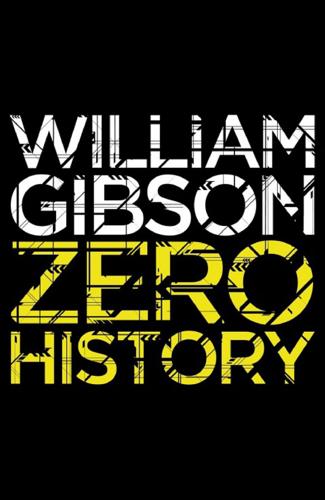
Zero History
by
William Gibson
Published 6 Sep 2010
It was his idea.” “That was before he decided Bigend’s up to something.” “Bigend’s defined by being up to something.” “This is different,” said Heidi. “Inchmale doesn’t know what it is, right? Otherwise, he’d tell. Can’t keep a secret. But his wife’s been getting the signals at work, some kind of London PR hive-mind thing. Wires are humming, she says. Wires are hot, but there’s no actual signal. Kind of subsonic buzz. PR people dreaming of Bigend. Imagining they see his face on coins. Saying his name when they mean someone else. Omens, Reg says. Like before a quake. He wants to talk to you about that. Just not on the phone.”

The Next Great Migration: The Beauty and Terror of Life on the Move
by
Sonia Shah
It is why fish form schools in the sea, why birds flock, why mammals travel together in herds, and even why, Allee suspected, newcomers form neighborhoods when they settle in strange new cities. Ecologists called it the “Allee effect.” Experts from a range of fields recognize the phenomenon, too. Modern neuroscientists call it the “hive mind.” In other words, ecologists who’d adopted the simple Malthusian calculation had left out an important part of the equation. They considered the costs of each additional human being: more mouths to feed, more cars on the road, more stress on natural resources. But they hadn’t considered the benefits.

The Secret Life of Groceries: The Dark Miracle of the American Supermarket
by
Benjamin Lorr
Published 14 Jun 2020
And then there are hot sauces. Ten thousand little bottles at ten thousand little booths. Each with a howling mouth stretched open on the label. Browsing them, sampling in little dots of red and brown, I start to see all these sauces as a stand-in for the whole show. We aren’t at a food conference. This is the hive mind of my condiment drawer, a gibbering id of anxiety and acquisition, responsible for all those decaying bottles in my fridge. The act of “doing” the Fancy Food Show is a little like a yuppie Halloween. Each booth has its wares out front and center. You snoot up, make a little chitchat, and sample: quinoa crunch bars here, goat’s milk caramels there.

On the Clock: What Low-Wage Work Did to Me and How It Drives America Insane
by
Emily Guendelsberger
Published 15 Jul 2019
I can hear order numbers being shouted over the disgruntled white noise of the line and beeping alarms as I walk back up through the kitchen to poke my head out and survey the situation. Mustard Woman seems to be gone, thank god, though I do spot her friend in animated conversation with Marisol, who’s nodding and writing on a clipboard. With the crew down me and Marisol, the line has gotten even longer, and while nobody’s shouting, the hive mind is audibly discontent. Come on, you fucking baby. Millions of people do this every single day. Suck it up. I force myself forward, dodging frantic coworkers carrying bags and drinks and trays at top speed as I work my way back into position behind my register. I stare down at the glowing touchscreen, weirdly mesmerized for a couple of seconds.

The Terraformers
by
Annalee Newitz
With a shudder, the daisy spun up, petals scraping the porous volcanic rock, clearing a perfectly round hole and lengthening the tunnel at almost the same speed the ship had flown. Such a delight to see! Dash rubbed her hands together. I always think this is the same joy my ancestors must have experienced as they dug their cities underground. “And yet the Boring Fleet never had to experience the yoke of hive mind matriarchal autocracy.” Crusher sounded like a schoolteacher chiding someone who had just been decanted. Dash made a harrumph noise. One may celebrate the ancestors without approving of everything they’ve done. Coring the rock was a surprisingly gentle operation, almost as if the drill were nudging the tunnel farther along rather than pulverizing and melting it into shape.

The Coming Wave: Technology, Power, and the Twenty-First Century's Greatest Dilemma
by
Mustafa Suleyman
Published 4 Sep 2023
Reinforcement learning helps each robot’s gripper pick up cups and open doors: just the kinds of actions, effortless to a toddler, that have vexed roboticists for decades. This new breed of robots can work on general activities, responding to natural language voice commands. Another growing area is in the ability for robots to swarm, greatly amplifying the potential capabilities of any individual robot into a hive mind. Examples include the Harvard Wyss Institute’s miniature Kilobots—a swarm of a thousand robots that work collectively and assemble in shapes taken from nature that could be used on difficult, distributed tasks like stopping soil erosion and other environmental mediations, agriculture, search and rescue operations, or the entire field of construction and inspection.
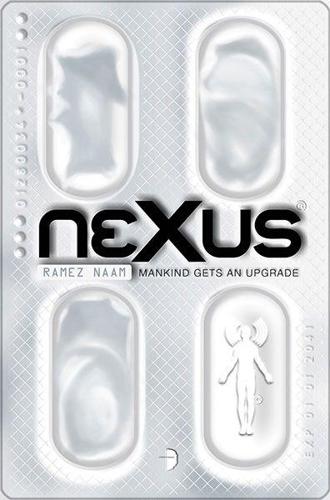
Nexus
by
Ramez Naam
Published 16 Dec 2012
"It's a way of bridging the gap between people. It makes us smarter together than we could be apart. It can raise collective intelligence, collective empathy. Ilya talks about…" Sam cut him off. "Ilya talks about creating things that aren't human, Kade. Non-human intelligences." "Groups of humans," Kade retorted. "Human networks." "Hive minds. Borgs. Super-organisms," Sam spat out. "What if they don't like us?" "How could they not like us? They'd be us." Kade was getting heated now. "And what if I didn't want to join a hive? Would I be forced to? Assimilated? Could I keep up if I didn't? Would there be a place for ordinary humans?"

Machines of Loving Grace: The Quest for Common Ground Between Humans and Robots
by
John Markoff
Published 24 Aug 2015
A decade later Licklider pointed to the significance of the impending widespread use of computing and how the arrival of computing machines was different from the previous era of industrialization. In a darker sense Licklider also forecast the arrival of the Borg of Star Trek notoriety. The Borg, which entered popular culture in 1988, was a proposed cybernetic alien species that assembles into a “hive mind” in which the collective subsumes the individual, intoning the phrase, “You will be assimilated.” Licklider wrote in 1960 about the distance between “mechanically extended man” and “artificial intelligence,” and warned about the early direction of automation technology: “If we focus upon the human operator within the system, however, we see that, in some areas of technology, a fantastic change has taken place during the last few years.

This Machine Kills Secrets: Julian Assange, the Cypherpunks, and Their Fight to Empower Whistleblowers
by
Andy Greenberg
Published 12 Sep 2012
Protecting that one fact is a harder trick than it sounds: In the end, strong anonymity tools have taken more than a decade longer than mere strong encryption to make their way into the hands of the average Internet user. But that strong anonymity, as it slowly matured over the course of two decades, was the lever WikiLeaks used to upend the world. Today, a schizoid hive-mind of Internet pundits and social media theorists claims, simultaneously, that everyone knows no anonymity exists on the Internet (“These Days the Web Unmasks Everyone,” states a New York Times headline from 2011) and that everyone knows no identity exists on the Internet—that “no one knows you’re a dog,” as the New Yorker cartoon caption reads.
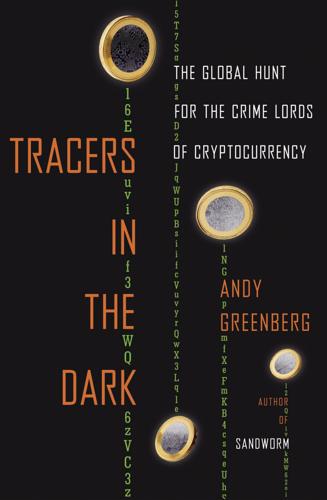
Tracers in the Dark: The Global Hunt for the Crime Lords of Cryptocurrency
by
Andy Greenberg
Published 15 Nov 2022
But access to the university’s high-performance machines was always limited, and programming them required using an obscure coding language. So instead, he began using a distributed computing system that allowed him to split the job over the school’s plentiful Linux PCs. That drive to create a kind of hive-mind calculator of epic proportions—how to efficiently split problems of gargantuan complexity between dozens, hundreds, or thousands of normal computers—carried him through a PhD and into a career working on quantum physics visualizations and early virtual reality demonstrations. By the time he was forty, he was managing a group of computer scientists who worked with the European Organization for Nuclear Research—also known as CERN—tasked with storing and interpreting the petabytes of results from the Large Hadron Collider’s search for the Higgs boson, which produced hundreds of times as much data as the entire collection of the Library of Congress every year.

Hacking Politics: How Geeks, Progressives, the Tea Party, Gamers, Anarchists and Suits Teamed Up to Defeat SOPA and Save the Internet
by
David Moon
,
Patrick Ruffini
,
David Segal
,
Aaron Swartz
,
Lawrence Lessig
,
Cory Doctorow
,
Zoe Lofgren
,
Jamie Laurie
,
Ron Paul
,
Mike Masnick
,
Kim Dotcom
,
Tiffiniy Cheng
,
Alexis Ohanian
,
Nicole Powers
and
Josh Levy
Published 30 Apr 2013
This concept of social suicide also explains why there’s a natural affinity between us and social justice movements that promote progressive ideas that exist outside of the mainstream. When SOPA and its ugly sister PIPA first reared their ugly heads, unlike the technological Neanderthals who drafted it, the hive mind on Twitter soon zoned in on the problematic small print and the ramifications thereof. Reading the tweets that bore the #SOPA hashtag that swarmed within our stream, it rapidly became apparent that this legislation would have a chilling effect on sites such as SuicideGirls, which incorporate massive amounts of user generated content.

Smart Cities: Big Data, Civic Hackers, and the Quest for a New Utopia
by
Anthony M. Townsend
Published 29 Sep 2013
It wasn’t until very recently that researchers began studying the sociability of cities by looking at the flow of telecommunications happening inside cities rather than between them. In 2006 another SENSEable City Lab project, Real-Time Rome, mapped the movements and communications of an entire city. Drawing on subscriber data harvested from Telecom Italia’s mobile network, Real-Time Rome was the first crude EEG of a city’s untethered hive mind, depicting millions of fans moving and communicating across the city during Italy’s 2006 World Cup victory.27 As new sources of geographically tagged data from social networks like Twitter and Foursquare proliferate, these diagnostics of urban sociability are becoming more prevalent and more captivating.

Doppelganger: A Trip Into the Mirror World
by
Naomi Klein
Published 11 Sep 2023
When her Twitter account was suspended, seemingly permanently, I went with “Still here, sadly.” These two sentences were “liked,” last I checked, twenty thousand times. That’s because, amid the extreme isolation and anxiety of early pandemic life, Naomi confusion became one of Left Twitter’s favorite jokes. The internet hive mind not only enjoyed laughing about what outrageous thing Other Naomi had said now but equally delighted in the prospect that I would get at least some of the credit/blame (“Thoughts and prayers to Naomi Klein”). We were a pastime for profoundly bored people addicted to dopamine hits from our machines.
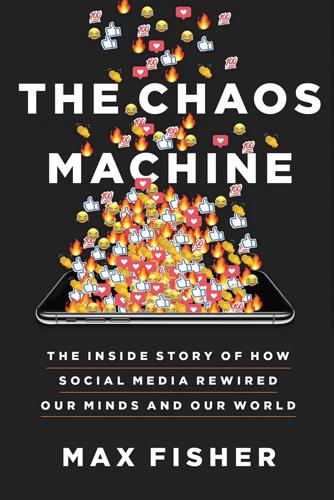
The Chaos Machine: The Inside Story of How Social Media Rewired Our Minds and Our World
by
Max Fisher
Published 5 Sep 2022
“hey, this might sound dumb,” he wrote her in a private message, “but I guess I just wanted to say a few years ago I was a pretty edgy person who was caught in the train of 4chan hate against you.” He was vague as to what, exactly, he had done. But he said that he’d been swept up in a “huge group think-y hive mind” of anti-feminist hate, against her and others, on 4chan and Facebook. “things have changed and I really am rooting for you and your campaign,” he wrote, referencing her congressional run. “I was thinking it might be worth telling you about it just to show support and that these people can change for the better.”

A Half-Built Garden
by
Ruthanna Emrys
Published 25 Jul 2022
She had every qualification to represent the Chesapeake Network to another species, and I didn’t blame her for looking at me like, I don’t know, an eel trying to pass as a dolphin. “Find out what they want from the rest of us,” she told me. “They’re asking the whole species to up and leave our homes; they can’t expect to work through one person.” “Unless they’re a hive mind,” suggested Abi Diawara. They’d written the speculative xenobiology series. “You only talked with one of them, right? Maybe they think you’re the queen.” * * * I sat through another half hour of circular speculation. At the end, though, streaming the highest-fidelity recording I could support, I stood alone in front of the Solar Flare.
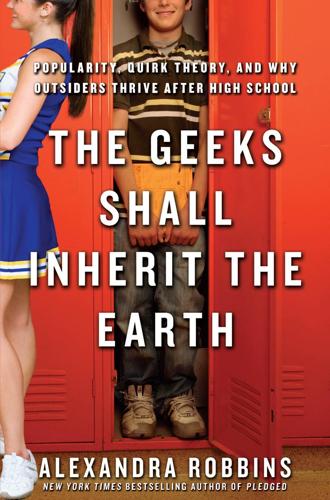
The Geeks Shall Inherit the Earth: Popularity, Quirk Theory, and Why Outsiders Thrive After High School
by
Alexandra Robbins
Published 31 Mar 2009
[Supposedly due to technicalities, charges against the aggressors were dropped.] We cut off a Pentecostal girl’s hair and hid her skirt in gym class, just because we were all Baptist and thought Pentecostals were weird. We felt like it was our right to do whatever we pleased. Part of being cool was uniformity and anything that isn’t part of our hive mind needs to be mocked.” Granted, populars are certainly not the only students who are mean. Many teens told me about members of various other groups dumping kids in trash cans Glee-style, shouting insulting racist or weight-related comments, and cyber-bullying. Violence and burning books have not disappeared from American high schools, despite anti-bullying campaigns.

Children of Time
by
Adrian Tchaikovsky
Published 31 May 2015
Amongst the ants’ network of reactive decision making it has inculcated a strategy of experimentation and investigation that approaches rigorous scientific method, but it has not led to intellect such as any human or spider would recognize. Ant colonies evolve and adapt, throw up new castes, investigate and make use of resources, devise new technologies, refine them and interrelate them, and all this without anything approaching a consciousness to direct it. There is no hive mind, but there is a vast and flexible biological difference engine, a self-perfecting machine dedicated to the continuance of itself. It does not understand how what it does functions, but it constantly expands its behavioural repertoire and builds upon those trial-and-error paths that prove fruitful.

Poking a Dead Frog: Conversations With Today's Top Comedy Writers
by
Mike Sacks
Published 23 Jun 2014
Because it was this collective thing, and there was no single creator, we could argue endlessly about what was in the Onion voice and what wasn’t. The whole process was very democratic—in both good and bad ways. The Onion voice at its best is rather cold and stiff and clinical, which I suppose is why the hive-mind system works so well. Community, on the other hand, is a very warm show, and that’s because of Dan Harmon and his love for his characters. People who don’t watch it sometimes have the misconception that Community is all genre parody and pop culture references—I myself made that mistake before I actually saw it.

Chaos Monkeys: Obscene Fortune and Random Failure in Silicon Valley
by
Antonio Garcia Martinez
Published 27 Jun 2016
As always, when the cards are favorable, double down. We still had the second Goldman Sachs post in the ammo bin. I had included a link to the Goldman Sachs post in the New York tech scene one, but few had bruited about it. The PR tsunami had crested nicely on Wednesday, and continued on through the rest of the week. By Monday, the hive mind would be on to its next amusing post, and we’d need to rekindle interest. This post would be the first in a series of hyperviral blog posts that would put AdGrok on the startup map (if not quite the customer one). Every three to four weeks, another gaseous emanation from the latrine of human thought (a.k.a. me) would appear and rocket us to the top of Hacker News (the tech geek’s Cosmo), and make another stir in the evanescent tech buzz-o-sphere.
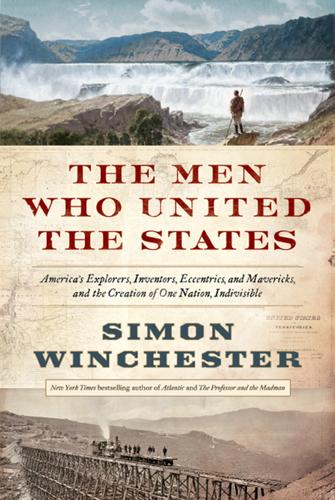
The Men Who United the States: America's Explorers, Inventors, Eccentrics and Mavericks, and the Creation of One Nation, Indivisible
by
Simon Winchester
Published 14 Oct 2013
Connecting America to the world, true, and connecting the world to America. But while many of the networks that employ the Internet—Twitter, especially—have proved themselves unimaginably adroit in linking together people and causes and helping create the new phenomenon of mass thinking that has come to be known as the hive mind, it is no longer a stated or perceived mission of the network to help anneal the nation that made it all into one. If California is to feel at one, to be at one, with Maine and the Dakotas and Florida and Alabama, then it has to be hoped that the structures already settled into place by the great men and great visions of the past will continue to endure, as the republic endures.

The Case Against Education: Why the Education System Is a Waste of Time and Money
by
Bryan Caplan
Published 16 Jan 2018
Journal of Labor Economics 31 (4): 669–725. Jones, Charles. 1995. “Time Series Tests of Endogenous Growth Models.” Quarterly Journal of Economics 110 (2): 495–525. ———. 2005. “Growth and Ideas.” In Handbook of Economic Growth, vol. 1, edited by Philippe Aghion and Steven Durlauf, 1063–111. Amsterdam: Elsevier. Jones, Garett. 2016. Hive Mind: How Your Nation’s IQ Matters So Much More Than Your Own. Stanford, CA: Stanford University Press. Jones, Garett, and W. Schneider. 2010. “IQ in the Production Function: Evidence from Immigrant Earnings.” Economic Inquiry 48 (3): 743–55. Juhn, Chinhui, and Kevin Murphy. 1997. “Wage Inequality and Family Labor Supply.”

Adventures in the Anthropocene: A Journey to the Heart of the Planet We Made
by
Gaia Vince
Published 19 Oct 2014
Globalisation favours those who speak international languages, and the people who will shape our lives in the Anthropocene will be those whose understanding and experience goes far beyond small village life, and those who are able to negotiate the accumulated learning, wisdom and knowledge generated by millions of global citizens via the hive mind of the worldwide web. It starts with school – with reading and writing and the self-confidence and awareness that sprout from those uniquely human skills. Done effectively, education is the bridge out of poverty, and educating girls is now recognised as a transformative development goal. Educated women marry on average four years later, have at least two fewer children and provide better health care for their families, for example.

Robot Rules: Regulating Artificial Intelligence
by
Jacob Turner
Published 29 Oct 2018
A bee may not have a particularly strong conception of a singular self which suffers, but it certainly appears to know of a greater self—the colony or the nest—of which it is part, and which can collectively suffer or thrive. One example of collective consciousness portrayed in popular culture is the Borg, an alien race in Star Trek: a vast collection of drones linked to a hive mind known as “the Collective”.56 Some experimental AI systems which are based on swarm intelligence displayed collectively by a number of individual “bots” may eventually develop group consciousness .57 Without this I or we then there is no thing which can be said to suffer. Psychologists Daniel Kahneman and Jason Riis suggest that the human mind comprises an “experiencing self” and an “evaluating self”.

Evil Geniuses: The Unmaking of America: A Recent History
by
Kurt Andersen
Published 14 Sep 2020
The several biggest mutual funds are now the majority shareholders of 90 percent of the four hundred biggest companies, and such institutional investors control 80 percent of all the stock in all U.S. public companies. It’s a huge concentration of economic power. I always imagined the market as a vast democratic hive mind producing the self-correcting wisdom of crowds. But for practical purposes, the financial market has been reduced to a small group of people, in the low thousands, who share a mindset. That’s financialization. So in addition to the new power of stock-price obsession over corporate executives, and VCs often effectively running companies they fund, and private equity guys actually running companies they take over, the big mutual funds also now closely meddle in the operations of most big companies, ranging from being backseat drivers to co-pilots sitting on boards.

Traffic: Why We Drive the Way We Do (And What It Says About Us)
by
Tom Vanderbilt
Published 28 Jul 2008
My wife covered her face with her hands. In the days after, a creeping guilt and confusion took hold. Was I wrong to have done this? Or had I been doing it wrong all my life? Looking for an answer, I posted an anonymous inquiry on Ask MetaFilter, a Web site one can visit to ask random questions and tap into the “hive mind” of an anonymous audience of overeducated and overopinionated geeks. Why should one lane move faster than the other, I wanted to know, and why are people rewarded for merging at the last possible moment? And was my new lifestyle, that of the late merger, somehow deviant? I was startled by the torrent of responses, and how quickly they came.
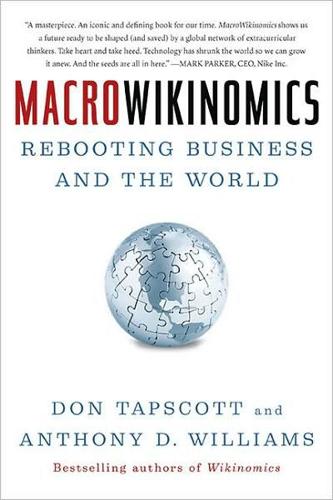
MacroWikinomics: Rebooting Business and the World
by
Don Tapscott
and
Anthony D. Williams
Published 28 Sep 2010
Others fear that online social networking is ruining true relationships and destroying communities. To be sure, the digital age will herald a mix of good and bad. But in tackling each of these “dark side” issues, it is also clear that solutions for each are at hand and, if anything, macrowikinomics provides the right framework for deriving fresh thinking. The Hive Mind, Collective Consciousness, and Collectivism There are many critics of the digital age, but one of the most articulate is Jaron Lanier, who, unlike many pundits, has a lot of street cred. Being a forerunner in virtual reality, he can’t be dismissed as a Luddite. In fact, in 2010 Time magazine chose him as one of the one hundred most influential people in the world.2 His much-awaited first book You’re Not a Gadget is certainly the most erudite discussion of the downside of the digital age to date.

The Musical Human: A History of Life on Earth
by
Michael Spitzer
Published 31 Mar 2021
And this is not to mention animals’ pheromonal, electric and vibrational communication systems, which may constitute ‘music’ on an entirely different basis, that is without sound. Perhaps cockroaches sing through chemicals, jellyfish through flashes of light. Getting away from sound, some aspects of animal expression resonate with emerging tendencies in human music. The hive minds of bees and ants are models for crowdsourced musical collaboration. The octopus’s distributed intelligence, its neurons shared between its head and arms, anticipates decentred musical creativity on the internet.10 It is often remarked that cephalopods are Earth’s true aliens, which is why we often picture extraterrestrials that way.

Aerotropolis
by
John D. Kasarda
and
Greg Lindsay
Published 2 Jan 2009
It may take as long as forty-five minutes before their packages are added to the sort, which is why—in an operation where every minute is weighed and measured—there is a definite hierarchy to the jockeying planes. Those bound to and from the West Coast are given the best spots, as they arrive last and must depart first due to the distances traveled. (Second-day-air packages are typically absent altogether, routed through the hub during the more relaxed daytime sort.) All of this is calculated by the UPS hive mind of intelligent software more adept at sorting planes and packages than any harried human planner. What emerges from the planes is not a loose stream of boxes but a sequence of aluminum canisters, abbreviated by the ramp workers to “cans.” Pie-sliced and semicircular, cans are to air cargo what the container is to shipping and trucking.

Future Crimes: Everything Is Connected, Everyone Is Vulnerable and What We Can Do About It
by
Marc Goodman
Published 24 Feb 2015
The dark side of this creativity plays out daily in the world of Crime, Inc. The challenge for the rest of society is that technological innovation is proceeding at an exponential pace, and, importantly, Moore’s law works for criminals too. Technological innovation from the underworld is thriving, and the criminal hive mind is leaving antivirus companies, technology vendors, and law enforcement in the dust. No longer is hacking the province of a select few digital masters; rather, today it has become democratized with all necessary information readily available at Crime U. Modern criminals are innovating not just technologically but in their business models as well.

Four Battlegrounds
by
Paul Scharre
Published 18 Jan 2023
Jason admitted, “The hopes of winning went out the window, and then we were just trying to make it close.” Try as they might, the humans couldn’t find a sustained weakness in the bot. “It ended up changing the strategy as time went on,” Jason said. “It was improving day to day.” Like fighting against the cybernetic hive mind The Borg in Star Trek, resistance was futile. By the end of the twenty-day tournament comprising 120,000 hands, the bot had racked up over $1.7 million in combined winnings. No human player finished in the black against Libratus. Jason admitted the humans “lost very decisively.” Like chess and go before it, another game had fallen to the machines.

Elon Musk
by
Walter Isaacson
Published 11 Sep 2023
Google and Microsoft, with their search engines and cloud services and access to emails, had huge gushers of data to help train these systems. What could Musk bring to the party? One asset was the Twitter feed, which included more than a trillion tweets posted over the years, five hundred million added each day. It was humanity’s hive mind, the world’s most timely data set of real-life human conversations, news, interests, trends, arguments, and lingo. Plus it was a great training ground for a chatbot to test how real humans react to its responses. The value of this data feed was not something Musk considered when buying Twitter. “It was a side benefit, actually, that I realized only after the purchase,” he says.

Merchants of Truth: The Business of News and the Fight for Facts
by
Jill Abramson
Published 5 Feb 2019
If you’ve never had a ball roll out into the street, or driven on an icy patch, you don’t know how to do that.” That was the limitation on human expertise: it was necessarily confined to the lived experience of an individual. It was a limitation that technological utopians like Peretti promised the hive mind would render a thing of the past. “If you’re a Google car,” he said, “you have the experience of every other Google car—any car that drives on an icy patch sends that knowledge and experience to the hub, and every car gets it and benefits from it.” In the audience Smith, his editor in chief, was laughing.

On the Edge: The Art of Risking Everything
by
Nate Silver
Published 12 Aug 2024
But instead roon was one of those restless young men who, like restless young men since the Gold Rush, headed to California. It not only seemed like the best place to go, but the only one that mattered. “Silicon Valley is really the only place that’s truly dreaming in any kind of way, that seems inspiring to me about the future,” he said. But roon is more than just an entertaining Twitter presence; it’s the hive mind of engineers like him, as much as any queen-bee CEO, who will determine the course of AI. Dating back to the Traitorous Eight, Silicon Valley engineers are famously disloyal: the hive will not necessarily follow any Sam X, Y, or Z. Google, for instance, despite having invented the transformer architecture that led to the development of LLMs, has experienced a brain drain to companies like OpenAI and Anthropic that it is now struggling to keep up with.

Wanderers: A Novel
by
Chuck Wendig
Published 1 Jul 2019
What we can do is be thankful we’re here and live the best life we can muster.” Shana swallowed. She felt dizzy. The room spun. “Yes,” she said, her own voice sounding faraway. “The others,” Benji said, “described a simulated town. Which I’m to understand you were a part of? A kind of…not a hive-mind, but a shared virtual experience? But they said that you disappeared. They thought you had been killed in the attack like many others. But we found your body, slumbering in the Beaumont with your sister. Where had you gone?” “I don’t know,” she lied. “And you can’t tell us anything?” “No.”
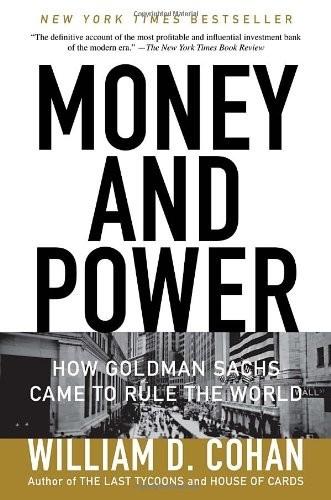
Money and Power: How Goldman Sachs Came to Rule the World
by
William D. Cohan
Published 11 Apr 2011
They were trying their very hardest to prove how well they could perform, whether they were a lower-level person or an upper-level person. There was a real sort of humming feeling of people striving. Then, there’s also an incredible stress put on doing everything with group consensus. And it takes a good deal of getting used to because one of the reasons I think that Goldman is so good is because it’s like this giant hive mind where you have all these smart people and they’re also all talking to each other. Everyone is very quickly focusing on the same issue and getting the best result they can think of all together and then they go on to the next issue and the next issue. So it’s the advantages of having a lot of smart people focus on something without the usual disadvantage of it getting bogged down.
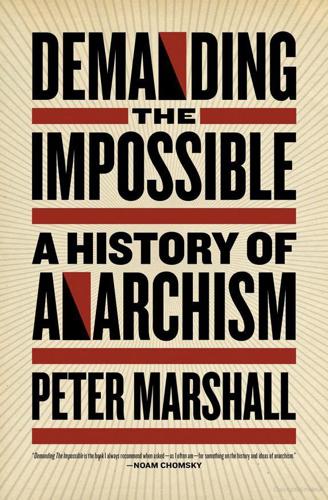
Demanding the Impossible: A History of Anarchism
by
Peter Marshall
Published 2 Jan 1992
Long before primitivism became fashionable among young urban sophisticates, Fredy Perlman, associated with the Detroit-based journal Fifth Estate, wrote a fiery roll against Western civilization and its deep-rooted patriarchy in Against His-story, Against Leviathan! (1983). This passionate rant traced the emergence of the first State in Mesopotamia during the Bronze Age when a king began to enslave neighbouring tribes. The resulting Leviathan of a State, Perlman argued, developed a ‘hive mind’ which tried to absorb or destroy any egalitarian peoples and cultures it came across. It became deeply authoritarian and repressive: whereas Nature springs from our inner voice and says ‘Thou Canst and Thou Shalt Be’, the Leviathan has ‘closed gates’ and with its laws declares ‘Thou Shall Not’.36 Wherever the Leviathan emerged — whether in ancient Mesopotamia, India or China — it saw the beginning of the rule of kings and emperors, the origins of hierarchy and domination and the foundation of State and Empire.